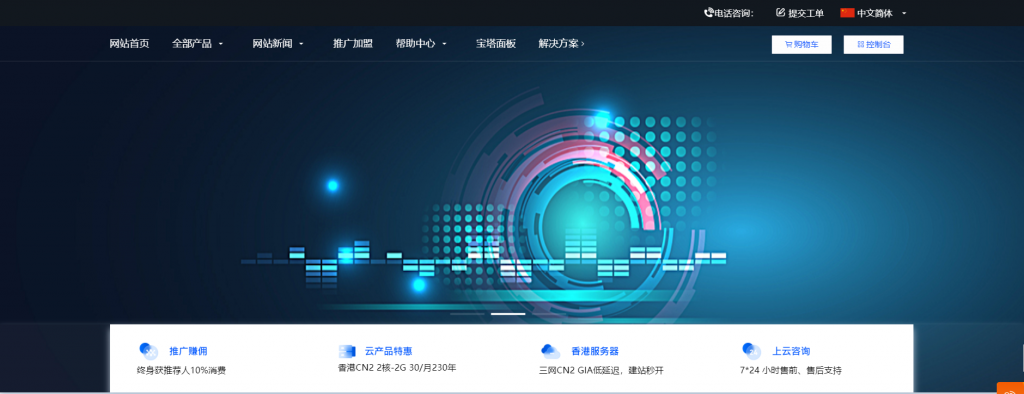activelytatanano
tatanano 时间:2021-01-17 阅读:()
theothercanonfoundation,NorwayTallinnUniversityofTechnology,TallinnCONTACT:RainerKattel,kattel@staff.
ttu.
ee;WolfgangDrechsler,drechsler@staff.
ttu.
ee;ErikS.
Reinert,reinert@staff.
ttu.
eeWorkingPapersinTechnologyGovernanceandEconomicDynamicsno.
28TECHNOLOGYGOVERNANCEFebruary2010TThheeffiinnaanncciiaallccrriissiissaannddtthheeffuuttuurreeooffiinnnnoovvaattiioonn::AAvviieewwoofftteecchhnniiccaallcchhaannggeewwiitthhtthheeaaiiddooffhhiissttoorryyCarlotaPerez,TechnologicalUniversityofTallinn,EstoniaanduniversitiesofCambridgeandSussex,U.
K.
www.
carlotaperez.
orgThispaperwaspreparedwithfundingfromtheAdvisoryCouncilforScienceandTechnologyPolicyoftheNetherlandsThisessaylocatesthecurrentfinancialcrisisanditsconsequencesinahistoricalcontext.
Itbrieflyoutlinesthedifferenceinpatternsofinnovationbetweenthefirsttwoorthreedecadesofeachtechnologicalrevolution–regularlyendinginamajorfinancialcollapse–andthenexttwoorthreedecadesofdiffusion,untilmaturityisreached.
Withthishistoricalexperienceinmind,theessaydiscussestheopportunityspaceforinnovationacrosstheproductionspec-trumtakingintoaccountthespecificityoftheInformationandCommunicationsTechnology(ICT)paradigmandtheincreasingsocialandenvironmentalpressuresinthecontextofaglob-aleconomy.
Finally,thereisabrieflookatthesortsofinstitutionalinnovationsthatwouldberequiredtoprovideadequatefinancetotakefulladvantageofthoseopportunities.
TableofcontentsINTRODUCTION:Themixedconsequencesofmajorbubblecollapses3GREATSURGESOFDEVELOPMENT:Twodifferentperiodsinthepropagationoftechnologicalrevolutionsandtheirparadigms4TheTurningPointandtheneedforinstitutionalinnovation6InstallationandDeployment:differentdriversofinnovation8THENEWDIRECTIONSFORINNOVATION:Sourcesofcriteriaforgleaningthetrajectoriesoftechnicalandsocialchange12Thehyper-segmentationofmarkets:differentiationandadaptability13Thehyper-segmentationofproductionunits:networksandspecialisation17Theshapingpoweroftheenergyandenvironmentalchallenges20Thecomingredesignofglobalisation21Thegestationofthenextrevolution24THEPOLICYCHALLENGES:Takingtheparadigmandtheperiodtransitionintoaccount25Theimplicitinnovationpolicies27Thedirectpolicies:innovatinginthefinancingofinnovation29SKIEs,SMEsandnetworks30Recognisingintangiblevalue32Providingcontinuityofsupportalongthelife-cycle33TherolesofR&Dinthepresentandforthefuture35CONCLUSION36References382INTRODUCTION:ThemixedconsequencesofmajorbubblecollapsesMajorbubblesinthemarketeconomyarecomplexprocesseswithmixedconsequences.
TheNASDAQboom,thecollapseofwhichbroughtatwoyearrecessionandpermanentlywipedouthalftheillusoryvalueoftheinflat-edtechnologystocks,facilitatedenoughover-investmentintelecommunica-tionsandfibreopticcablestointerconnecttheglobalspacedigitallyandbringhundredsofmillionsofpeopleintoInternetuse.
1The2008meltdownishavingandwillhaveamuchdeeperandmorewidespreadnegativeimpactontheglobaleconomy.
Theupsideofthatismadeupoftwoverydifferentconsequences:Oneisthefactthatfrom2004to2007therewasadefiniteimpulsetoglobalgrowth.
AtthecentreofitweretheAsianeconomies,especiallyChinaandIndia,whichthroughtheirlowercostsforproductsandservicesincreasedthebuyingpowerofsalariesinthealreadyindustrialisedworldandalsogavearespitetotheenergyandmaterialsexportingcoun-triesthroughamajorincreaseinprices.
Thishadasacounterpart,though,thattheboostinconsumptioninthemoreadvancedeconomiesthatfacili-tatedthisglobalgrowthwasfedbytheexportsurplusfundscomingbackfromAsia.
Thisinflatedthehousingbubblesthatenabledgrowingconsumercreditonthebackoftheassetpricegains.
Theburstingofthosebubbleshasbroughtthewholenetworkdownandturnedthepositivefeedbackloopintoaviciousdownwardspiral.
Nevertheless,globalisationisafactandthenewemergingeconomieswillchangetheshapeoftheworldtocome.
Theotherconsequenceofthebust,whichcouldinsomesensebedefinedas'positive',isthatbyrevealingallthecrookedwaysofthefinancialworldduringtheboom,ithasbrokenthemythofanideal'freemarket'andbroughtbacktheStateintoanactiveroleintheeconomy.
Suchacomebackisnotlimitedtorestrainingtheabusesoffinancebutextendstofavouringtheexpansionofproductionandjobcreatingactivitiesoverspeculationandtospreadingthebenefitsofgrowthmorewidelyacrosssociety.
Thishap-penedinthepastaftereachofthemajortechnologybubbles,withdifferentintensityandinvaryingmannersdependingonthehistoricalmomentandonthespecifictechnologicalrevolutionthatunderlaytheboom.
ThemostrecentandstrongestcaseofStateinterventioninthesedirectionsis,ofcourse,theWelfareStateandtheBrettonWoodsagreementsandinstitu-tions,afterthewarandthelongdepressiveyearsofthe1930s.
Thesetofinstitutionalinnovationsadoptedthenwasverywelladaptedtotherequire-mentsofthemassproductiontechnologiesofthetime,whichwereabletobringconsumerpricesdowntothelevelofworkers'wages,aslongasthemarketwaslargeenoughtoreapthefulleconomiesofscale.
31TheInternetreallyonlybeganin1994butby2000therewerealreadymorethan300millionpeo-pleusingit.
Theestimatenowisoneandahalfbillion.
Fromhttp://www.
internetworldstats.
com/stats.
htmdownloadedApril13,2009Thecurrentmeltdownwillrequire,aftertheinitialrescueoffinance,anequivalentsetofinstitutionalinnovationsatseverallevels:global,suprana-tional,national,regional,localandcommunity.
Thegovernancestructureofsocietiesislikelytoexperiencechangesasprofoundasthosethatturnedtherigidpyramidalandstrictlyhierarchicalandcompartmentedorganizationsofgiantcorporationsintorelativelyflat,highlyflexibleanddynamicnetworksspanningtheglobe.
Ratherthanstrictlyseparatesingle-functiondepartmentswithinteractiononlyatthetop,thesenimblegiantsnowcountoninnumer-ablesingle-purpose(thoughoftenmulti-function)unitsthataresmall,agile,creativeandempoweredtopursuethedefinedobjectivesintheirowncho-senmannerandtorespondimmediatelyandautonomouslytochangesincontextorinclients'demands.
AtransformationofequivalentmagnitudeanddirectionisnowinorderfortheStateatalllevels,thoughtakingintoaccountthedifferenceincriteria,guidingprinciplesandgoals.
Thisessaybeginsbybrieflysummarizingthepathfollowedbytheopera-tionofthemarketsystemintheprocessofinstallinganddeployingsuc-cessivetechnologicalrevolutionsandlocatingthecurrenthistoricalmomentinthatrecurringsequence.
Asecondsectionexaminesthesourcesofcri-teriato'foresee'thedirectionsofinnovationinthenexttwoorthreedecadesandthefinalsectiondiscussesthepolicychallengesposedspecif-icallybytheneedtofosterthepursuingofthosedirections.
GREATSURGESOFDEVELOPMENT:TwodifferentperiodsinthepropagationoftechnologicalrevolutionsandtheirparadigmsTechnicalchangeinthemarketeconomyisconstantbutnotcontinuous;ittakesplacebymassivesurgesofchange.
ThecurrentInformationandCommunicationsTechnologies(ICT)revolutionisthefifthsuchupheavalexperiencedbythecapitalistsystemsincethe'industrialrevolution'attheendofthe18thCentury.
Eachofthesegreatsurgesofdevelopment(GSDs)hasgivenrisetoawholesetofnewindustriesalongwithasetofneworganisationalprinciplesandexternalitiesofinfrastructureandknowledgethatenablethemodernisationofpracticallyalloftheexistingindustries.
Thevehicleforthisupgradingisanewtechno-economicparadigm(TEP)orbest-practicemodel,emergingfromthepracticalimplementationofthenewtechnologiesandembodyingnewandwide-rangingcommonsensecriteriaforthemostefficient,effectiveandprofitableproducts,processes,busi-nessorganisationsandmarketbehaviours.
Table1indicatesthefivesurges,withtheindustriesandinfrastructuresthatconstitutethetechnologicalrevolutionthatdrivesthemandwithaselectionofthemostsalientcommonsenseprinciplesofeachparadigm.
45Theassimilationofsuchprofoundchangesbytheeconomyandsocietyisaverydifficultprocessthatmustovercomebothhumanresistancetochangeandinstitutionalinertia.
ThesuccessinachievingthisbecomesinTechno-logicalrevolutionFIRST:The'IndustrialRevolution'SECOND:AgeofSteamandRailwaysTHIRD:AgeofSteel,ElectricityandHeavyEngi-neeringFOURTH:AgeofOil,theAuto-mobileandMassProductionFIFTH:AgeofInfor-mationandTele-commu-cations2.
NewtechnologiesandneworredefinedindustriesMechanizedcottonindustryWroughtironMachinerySteamenginesandmachi-nery(madeiniron;fuelledbycoal)Ironandcoalmining(nowplayingacentralroleingrowth)*RailwayconstructionRollingstockproductionSteampowerformanyindustries(includingtextiles)Cheapsteel(especiallyBessemer)FulldevelopmentofsteamengineforsteelshipsHeavychemistryandcivilengineeringElectricalequipmentindustryCopperandcablesCannedandbottledfoodPaperandpackagingMass-producedautomobilesCheapoilandoilfuelsPetrochemicals(synthetics)Internalcombustionengineforautomobiles,transport,tractors,airplanes,wartanksandelectricityHomeelectricalappliancesRefrigeratedandfrozenfoodsTheinformationrevolution:CheapmicroelectronicsComputers,softwareTelecommunicationsControlinstrumentsComputer-aidedbiotechnol-ogyandnewmaterials3.
NeworredefinedinfrastructuresCanalsandwaterwaysTurnpikeroadsWaterpower(highlyimprovedwaterwheels)Railways(Useofsteamengine)UniversalpostalserviceTelegraph(mainlynatio-nallyalongrailwaylines)Greatports,greatdepotsandworldwidesailingshipsCitygasWorldwideshippinginrapidsteelsteamships(useofSuezCanal)Transcontinentalrailways(useofcheapsteelrailsandboltsinstandardsizes)GreatbridgesandtunnelsWorldwideTelegraphTelephone(mainlynatio-nally)Electricalnetworks(forillu-minationandindustrialuse)Networksofroads,high-ways,portsandairportsNetworksofoilductsUniversalelectricity(industryandhomes)Worldwideanaloguetelecommunications(tele-phone,telexandcable-gram)wireandwirelessWorlddigitaltelecommu-nications(cable,fibreoptics,radioandsatellite)Internet/Electronicmailandothere-servicesMultiplesource,flexibleuse,electricitynetworksHigh-speedmulti-modalphysicaltransportlinks(byland,airandwater)Note:*ThesetraditionalindustriesacquireanewroleandanewdynamismwhenservingasthematerialandthefueloftheworldofrailwaysandmachinerySource:BasedonPerez(2002)pp.
14and18Table1.
FiveGreatSurgesofDevelopment:Maintechnologies,industriesandinfra-structuresandprevailingtechno-economicparadigmTechno-economicparadigm'Common-sense'innovationprinciplesFactoryproductionMechanizationProductivity/timekeepingandtimesavingFluidityofmovement(asidealformachineswithwater-powerandfortransportthroughcanalsandotherwaterways)LocalnetworksEconomiesofagglomeration/Industrialcities/NationalmarketsPowercentreswithnationalnetworksScaleasprogressStandardparts/machine-mademachinesEnergywhereneeded(steam)Interdependentmovement(ofmachinesandofmeansoftransport)Giantstructures(steel)Economiesofscaleofplant/verticalintegrationDistributedpowerforindustry(electricity)ScienceasaproductiveforceWorldwidenetworksandempires(includingcartels)UniversalstandardizationCostaccountingforcontrolandefficiencyGreatscaleforworldmarketpower/'small'issuccessful,iflocalMassproduction/massmarketsEconomiesofscale(productandmarketvolume)/horizontalintegrationStandardizationofproductsEnergyintensity(oilbased)SyntheticmaterialsFunctionalspecialization/hierarchicalpyramidsCentralization/metropolitancentressuburbanizationNationalpowers,worldagreementsandconfron-tationsInformation-intensity(microelectronics-basedICT)Decentralizedintegration/networkstructuresKnowledgeascapital/intangiblevalueaddedHeterogeneity,diversity,adaptabilitySegmentationofmarkets/proliferationofnichesEconomiesofscopeandspecializationcombinedwithscaleGlobalization/interactionbetweentheglobalandthelocalInwardandoutwardcooperation/clustersInstantcontactandaction/instantglobalcommu-nicationsturnanobstaclefortheadoptionofthenextrevolution,whichtendstooccurassoonasthepotentialofthepreviousoneapproachesexhaustion.
2Itisduetotheseinertialforcesthateachgreatsurge,ratherthanpropa-gatingsmoothly,exhibitstwoverydifferentperiodsofabouttwoorthreedecadeseach.
Thefirstistheturbulentbattleofthenewagainsttheold;atimeofSchumpeteriancreativedestruction,ofintensefreemarketexperi-mentationandexplorationofallthepossibilitiesofthenewtechnologies.
Itisatimewhenfinancialcapitaljoinsforceswiththenewentrepreneurstounseattheestablishedgiantsandtodismantletheinstitutionsthathadfacil-itatedtheirgrowthandexpansion.
ThisistheInstallationperiod,whichbeginsinthemidstofamatureeconomyindeclineandendswithafren-ziedprosperitycharacterisedbythetriumphofthenewparadigm,theemer-genceofnewgiantsandthedevelopmentandcollapseofamajorfinancialbubble.
Duringthistime,theshort-termobjectivesoffinancialinvestorsbecomeprevalentandguideproductioninvestmentanddecisionsthroughtheircontrolofthesourcesoffundsandofstockmarketvalues.
Thesecondperiodbringstofruitionallthepotentialopenedupbythenewtechnologies.
ItistheDeploymentperiodwhenthenewproductiongiantsserveasenginesofgrowth.
Itisatimeof'creativeconstruction'involvingtheexpansionofboththenewandtherejuvenatedsectorsandusuallyspreadingthebenefitsofgrowthmuchmorewidelythanduringInstallation.
Productioncapitalisthenatthehelmofinvestmentdecisionsandfinanceadapts(orisinducedtoadapt)toservethoselonger-termobjectivesandbenefitsfromthem.
TheTurningPointandtheneedforinstitutionalinnovationSuchashiftinconditionsandleadershipdoesnothappeneasilyorauto-matically.
Itrequiresaradicalinstitutionalrecomposition(ofwhichBrettonWoodsandtheWelfareStatearetheoutstandingexample)inordertomod-ifyradicallythebusinesscontext,favouringrealproductionandemploymentcreationoverspeculationandstartreversingtheincomepolarisationprocessthatcharacterisesinstallationperiods.
Thatredressingisimportantasmuchinthenameofsocialjusticeasforovercomingdemandconstriction.
Theseinstitutionalchangestendtooccurasaresponsetotheintensepoliticalpres-suresthatfollowtherecessionorevendepressionandothersociallypainfulconsequencesofthemajorbubblecollapseattheendofInstallation.
Atthistransitionalpoint,theroleoftheStateintheeconomyisadeterminingfac-torandthecapacitytoinnovateboldlyingovernmentpolicyiscrucial.
62AcompletediscussioncanbefoundinPerez(2002)andabriefersummaryinPerez(2007).
Readersfamiliarwiththemodelpresentedtherecanskipthissection.
TheyearsbetweenthebustandtheunleashingofDeployment(fromtwoyearstoasmuchasthirteen,aswasthecaseinthe1930s)constitutetheTurningPoint,referringtotheshiftinconditionsandleadingrolefromoneperiodtotheother.
Figure1.
TwodifferentprosperitiesandabreakineachgreatsurgeofdevelopmentBasedonPerez(2002)p.
78Figure1presentsthefivesurgesinparallel,indicatingtheInstallationbub-bles,thedatesoftheTurningPointrecessions,andtheGoldenAgesthatcharacteriseearlydeployment(leadinglatertomaturityandtheirruptionofthenexttechnologicalrevolution).
In2009theworldisgoingthroughtheTurningPointanddecidingtheglobalandnationalcontextforthefullDeploymentoftheICTsurge.
Understandingthenatureanddirectionofthechangesrequiredisacrucialinputfordesigninginstitutionalandpolicyinnovationandincreasestheprobabilityoftakingbestadvantageofthenewwealthcreatingpotentialofthenewparadigm.
Theele-mentslikelytodefinethatorientationare(1)theneedtoswitchfromInstallationtoDeploymentconditions,(2)thecharacteristicsofthecurrentICTTEPand(3)thenewforceslikelytoshapeitsapplication.
Thefirstcanbegleanedbyanalysingthefarawaypastwiththelensofhistoricalrecurrence;theothertwobyexaminingthetrendsofthepastfewdecadeswitha'paradigmlens'.
TherestofthissectionwilllookatwhattheswitchtoDeploymenthasreg-ularlyimpliedforconditioninginnovationanditsrelationshiptoinvestmentdecisions.
Thesectionafterthatwilldiscussthespecificdirectionsthatmightbetakenbyinnovationinthisparticularsurge.
7TURNINGTURNINGPOINTPOINTINSTALLATIONPERIODDEPLOYMENTPERIOD1st2nd3rd4th5thFrenzybubbles"Goldenages"BritainBritainUK/USA/GermanyUSAUSAGREATSURGEInternetmania,Telecoms,emergingmarketsFinancialcasino&housingLondonfundedglobalmarketinfrastructurebuild-up(Argentina,Australia,USA)RailwaymaniaCanalmaniaTheroaringtwentiesAutos,housing,radio,aviation,electricitySustainableglobalknowledge-societyPost-warGoldenageBellepoque(Europe)"ProgressiveEra"(USA)TheVictorianBoomGreatBritishleap1890–95Europe1929–33USA1929–431848–501793–972000/07-20TheIndustrialRevolutionAgeofSteamandRailwaysAgeofSteelandheavyengineeringAgeofOil,AutosandMassProductionTheICTrevolution18291875177119081971RecessionInstitutionalrecompositionTURNINGTURNINGPOINTPOINTINSTALLATIONPERIODDEPLOYMENTPERIOD1st2nd3rd4th5thFrenzybubbles"Goldenages"BritainBritainUK/USA/GermanyUSAUSAGREATSURGEInternetmania,Telecoms,emergingmarketsFinancialcasino&housingLondonfundedglobalmarketinfrastructurebuild-up(Argentina,Australia,USA)RailwaymaniaCanalmaniaTheroaringtwentiesAutos,housing,radio,aviation,electricitySustainableglobalknowledge-societyPost-warGoldenageBellepoque(Europe)"ProgressiveEra"(USA)TheVictorianBoomGreatBritishleap1890–95Europe1929–33USA1929–431848–501793–972000/07-20TheIndustrialRevolutionAgeofSteamandRailwaysAgeofSteelandheavyengineeringAgeofOil,AutosandMassProductionTheICTrevolution18291875177119081971TURNINGTURNINGPOINTPOINTINSTALLATIONPERIODDEPLOYMENTPERIOD1st2nd3rd4th5thFrenzybubbles"Goldenages"BritainBritainUK/USA/GermanyUSAUSAGREATSURGEInternetmania,Telecoms,emergingmarketsFinancialcasino&housingLondonfundedglobalmarketinfrastructurebuild-up(Argentina,Australia,USA)RailwaymaniaCanalmaniaTheroaringtwentiesAutos,housing,radio,aviation,electricitySustainableglobalknowledge-societyPost-warGoldenageBellepoque(Europe)"ProgressiveEra"(USA)TheVictorianBoomGreatBritishleap1890–95Europe1929–33USA1929–431848–501793–972000/07-20TheIndustrialRevolutionAgeofSteamandRailwaysAgeofSteelandheavyengineeringAgeofOil,AutosandMassProductionTheICTrevolution18291875177119081971RecessionInstitutionalrecomposition8InstallationandDeployment:differentdriversofinnovationDistinguishingbetweeninnovationinthecorenewindustriesthemselvesandintheindustriesoractivitiesthatapplythenewtechnologiestoinno-vateisimportantforunderstandingthemaindifferencesbetweenInstallationandDeploymentasregardstherhythmanddirectionoftechni-calchange.
Installationisbasicallyanexperimentalperiodfortryingoutinthemarkettheinnovationspaceopenedbythetechnologicalrevolutionanddefiningtheshapeofthenewindustries,thenewproductionanddistribu-tionmethods,andthenewconsumptionpatterns.
Theextraordinaryprof-itsexhibitedbysomeoftheyoungcompaniesleadtoanincreasinglybiasedallocationoffundstowardsthesenovelindustriesandinparticulartothenewinfrastructuresthataredestinedtoprovidethemainexternalitiesfortheusersoftheemergingtechnologies.
Atthepeakoftheboomofthesecondsurgein1847,investmentinrail-waysrepresented55%ofgrossnationalfixedcapitalformationintheU.
K.
3Duringthefirstglobalisation,attheendofthe19thCentury,inthethirdsurge,between30and50%ofBritishinvestmentwentoverseasmainlytofinanceinfrastructures,especiallyintheSouthernhemisphere(Australia,Argentina,etc.
)forcounter-seasonaltradeaswellasinthestronglyemerg-ingcountriesofNorthAmerica(USandCanada)thatwerebuildingtranscontinentalroutesfortheirminingandagriculturalproducts.
4IntheUS,duringthewholeoftherecentInstallationperiod,between85and90%ofventurecapitalwenttoICTcompanies.
5ThehighandgrowingvaluationsoftelecomandInternet-relatedcompaniesduringtheNASDAQbubblefacil-itatedthecompletionofaglobalfibreopticnetworkthathasbecomethefoundationoftheglobalisationprocess.
Thisbiastowardsthenewtechnologiesenablesthenovelentrepreneurstotesttheirstrengthinthemarketandallowsforthepotentialusers–betheyproducersorconsumers–toexpresstheirdemandpreferences.
Asaresult,thenewleadersemerge,thenewindustrystructuresarebasi-callydefinedandtheeconomycancountonasetofnewandpowerfulenginesofgrowth.
Atthesametime,theInstallationperiodfacilitatestheemergenceofthenewparadigm.
Eventhefundinggrantedtothetraditionalindustriesisusu-allybiasedtowardsmodernisationassimilationofthisnewparadigmorpreparingtotakeadvantageofthenewinfrastructure.
Thisisdonethrough3Mitchell(1964)4DavisandGallman(2001)5GompersandLerner(2001)9theincorporationoftheneworganisationalmodels,theupdatingofequip-ment,theuseofthenewinfrastructures,thechangeinproductprofiletofitthenewconsumptionpatternsandsoon.
Asaresult,bythetimeofthemajorbubblecollapse,thewholeoftheeconomyisreadytoinnovatealongthelinesofthenewparadigmorcanadapttodoso;industrystructuresofbothnewandrenewedindustrieshavemoreorlessdefinedtheirnewbor-dersandformsofcompetitionandthetechno-economicparadigmhasbeenincorporatedascommonsenseandasthecommonlanguageofproducers,engineers,bankers,investors,consumersandalltheotheragentsactiveintheeconomy.
Yetwhiletheparadigmshiftisbasicallycomplete,theinsti-tutionalcontextislagging.
Inordertoachievethistransformation,notonlyhadtheworldoffinanceledthereallocationoffundstowardsthenewtechnologiesandpractices,butithadalsobecomeanintenseinnovatorinitsownright,takingadvantageofallthepossibilitiesofferedbythenewtechnologies.
Thismeansthatboth–therealandthepapereconomy–producegoodandbadinnovations,suc-cessfulandfailingones.
TheactorsintheDeploymentperiod,inacontextshapedbygovernmentpolicy,willendupselectingthosethatsurviveandthriveandwillalsostimulatenewonesadaptedtotheirnewlydefinedneeds.
Thedeploymentperiodisthetimewhenthemodernisedcompaniesacrossallsectorsinnovateusingthepowerofthetechnologiesoftherevolutionandofthenew–bythen,established–paradigm.
Itisatimeofexpansion,extensionandmultiplicationofpossibilitiesinthewholespectrum;itisalsoatimeforsocialinnovationinordertospreadmorewidelyacrosssocietythebenefitsofthevastwealthcreatingpotential.
Insum,thereisachangingoftheinnovationguardwiththeTurningPoint.
DuringInstallationtheinnovationdriversarethenewtechnologicalentrepre-neursandthefinancierswhiletheStatehasaserviceandfacilitatingrolewithalaissezfaireattitude.
DuringDeployment,theStatecomesbackactivelyandservesasinnovationdrivertogetherwithproductioncapital,whichtakesthehelmofinvestmentwhilefinancialcapitalservesassupport.
6Whatthismeansintermsoffinancialinnovationisthatitmovesfroma'supplypush'behaviourtolearningtorespondto'demandpull'fromthe6Duringthethirdsurgedeployment(theBellepoque)financeremainedatthehelmbutnotfromthestockmarketbutfromtheboardroomsofthegiganticcompaniestheysupported.
Thecoreindus-triesofthatrevolutionrequiredmajorinvestmentsupfront:steel,heavyengineering(chemical,elec-trical,civil,naval),transcontinentalrailways,steamshipcompaniesandthemajorproducersofrawmaterialsandagriculturethatwerethemainproductsofthatfirstglobalisation.
SothelikesofMorganintheUSandtheGermanbanksactuallyplayedthedoubleroleofproductionandfinancialcapital.
ThecaseoftheUKwasdifferent,butthisisnotadiscussionforthisessay.
productionsector.
Andthatisalsowhathappenswiththerevolutionaryindustries.
InthisDeployment,ICTwillalsomovetowardsfulfillingthedemandsofinnovationacrossitsuserindustries.
Bothcompaniesandcon-sumersarenowsavvyintermsofwhatICTcanprovideandtheyhavemul-tiplewaysofmakingknownwhattheirspecificdemandsandexpectationsare.
Andthesamecanbesaidaboutgovernments,NGOsandotherinno-vatingorganisations.
Althoughitisindeedpossibletoidentifyrecurrenceinhistory,itiscrucialtorecognisetheuniquenessofeachmanifestation.
Inthissense,itisveryimportanttonotethatthemajorbubbleofthecurrentsurgeoccurredintwoepisodes:theInternetboomattheendofthe1990s,basedontechnolog-icalinnovation,andtheboomof2003-08,basedonfinancialinnovation.
7Thispeculiarseparationofwhatinthepasthadbeenasinglebubblehasmanyimplications,someofwhichhavetodowiththedirectionofinnova-tion,otherswiththetimingofcertainrecurringprocesses.
Oneofthetypicalconsequencesofeachbubblebustisacomprehensibleavoidanceofriskintheparticularobjectsofspeculationthatfedtheboom.
Intheaftermath,investorstendtosteerclearofmortgage-backedsecuri-tiesandanyothersyntheticinstruments.
Similarly,after2000,investorshadbecomewaryofInternetanddot.
comprojects.
Manyprivateequityfundsmovedfromventurecapitaltobuying,transforming(orstripping)existingcompaniesandresellingthem;ICTentrepreneursweremorelikelytoaspiretoagenerousacquisitionbyGoogleorCiscoorMicrosoftthantoanIPOinthestockmarket,(althoughGoogleitselfwasoneofthebrilliantexceptionstothisclimate).
Thus,someofthephenomenathatcharacterisetheaftermathofmajortechnologybubbleswerealreadypresentduringthecasinoboomofthe2000s.
SomeofthenewinnovationspacesthatweremadepossiblebytheinstallationoftheICTtechnologiesbegantoflourish,especiallythosethatmultipliedtheusesoftheInternet,thosethatrespondedtoenvironmentalconcernsandthosethataimedatalternativemarketsegments.
Eventheail-ingautomobileindustrycanalreadyboastmultiplenewdirections,fromtheall-electricluxuryTesla,throughvarioushybridmodels,8totheTataNanoaimedatlowerincomebuyers.
SiliconValleyitselfhasmovedstronglytowardsclean-techsince2000.
107ForafulldiscussionseePerez(2009)8ThoughToyota'seffortsatenergyefficiencyandoilavoidancedatefrom1977,thefirstgenera-tionofPriushybridsarrivedintheUSin2000.
Atthattime,oilpriceswerestillverylowbutby2008thevariousautomakershadlaunchedmorethan30differentmodelstocompeteinthehybridmarket.
11Theotherprocesstypicaloftheaftermathoftechnologybubblesthatwasalreadytakingplaceduringthesecondboomistherestructuringofoneindustryafteranotherandthedefinitionofnewboundariesthroughmerg-ersandacquisitions.
Thiswasverymuchfacilitatedbytheeasycreditthatcharacterisedthesecondboom.
Theprocessisfarfrombeingcompleted–indeed,itisneverreallyfinal.
Therearestillmanyindustriesinsearchofastablestructurewithcomplementaryprofitablestrategies,betweenindus-tryleadersandfollowers,betweenvertical,horizontalordiagonalintegra-tion,betweengiantsandmediumandsmallfirms,betweenglobalandlocalplayers.
Theairlineindustry,forinstance,isstillverymuchinfluxandtry-ingtocopewithanuncertainfuture.
Thehistoricaltendency,asconditionsswitchfromInstallationtoDeployment,hasbeentomoderateferocioussurvivalcompetitionandtotendtoestablishsomeformofoligopolythatwillrestrictcompetitiontocer-tainvariablesandwillallowlong-terminvestmentintechnologyorexpan-sion,riskingneithertheangerofanimpatientstockmarketnorapricewarwithcompetitors.
Aswillbediscussedbelow,though,thehyper-segmentationofmarketsandtheflexibilityofICTislikelytochangethewayofdefiningindustriesandthemarketsinwhichtheycompete,inordertofocusonthedemandsec-torsratherthanonthesupplyones.
Sports&leisure,clean-tech,health,thirdage,education,etc.
arealreadymoreusefulforidentifyingtherealcompetitorsthantextile,shoes,clothing,food,etc.
Thismighthavecon-sequencesforthespacetobeoccupiedbyeventualoligopolies.
Suchsec-toralredefinitionshaveoccurredwitheveryparadigmshiftandthetraceiskept–withdelay–inthechangesofstatisticalcategoriesacrosshistory.
Sincesuchchangestaketimeandoccurasaresultoftrialanderrorstrate-giesandcompetition,theycanonlyberecognisedinthestatisticswhentheyhavealreadybecomethenorminpractice.
Butbeingalerttotheseprocessesiscrucialbothforcompaniesandforgovernments,becausetheyprovideimportantsignalsforinnovationandgrowthpaths.
Allthesetransformationsinindustrialandmarketstructuresareveryrele-vantforunderstandingthelikelydirectionofinnovationinthenextcoupleofdecades.
DuringInstallation,theengineersarebestplacedforseeingwhereinnovationislikelytogo.
Technologicaltrajectoriesofindividualproductsandofwholesystemsindicatealogicofimprovementthatisanessentialpartoftheparadigmandservestoguideprogressineacharea.
ButwithDeploymentcomesafundamentalshiftoffocus.
Ratherthanlook-ingatthepotentialoftechnologies,thefocusswitchestotheopportunitiesdefinedbymarketsandbygrowthpossibilities.
Thus,intechnicalandbusi-nessinnovationalso,decision-makingbehaviourmovesfrom'supplypush'to'demandpull'.
Therefore,modernpoliciesforsupportinginnovationneedalsotounderstandtheshiftandtoincorporateknowledgeaboutchangingmarketandbusinessstructuresintopolicydesign.
THENEWDIRECTIONSFORINNOVATION:SourcesofcriteriaforgleaningthetrajectoriesoftechnicalandsocialchangeEachtechno-economicparadigmemergesthroughatrialanderrorprocesswhileexperimentingandlearningtousethenewtechnologiesandtheirinfrastructures.
MovingfromthegiantIBMcomputersofthe1960s-70stothepersonalcomputerofthe1980stothelaptopsandblackberriesofthe2000shasnotonlymeantthat'smallerandmoreindividualisbetter'butalsothatnetworksarethemoreadequateorganisationalstructuretotakeadvantageoftheICTtechnologies.
Giantorganisations–throughthemedi-ationofInternet–cannowgrowmuchlargerthanbeforebutasrelativelyflatnetworksgainingalltheflexibilityandagilityofsmallcompanies;smallorganisationsinturncangaintheadvantagesofscalebyjoiningwithoth-erstoformdynamicnetworks.
Theflexibilityofcomputer-aideddesignandequipmenthasliberatedmanu-facturingfromtheneedtopursueidenticalproducts.
Itisnowpossibletomakemodelchangesandtohaveamixedproductprofilewithhighproduc-tivity,evenasproductionvolumeofthisvariedandchangingmixisseveraltimesgreaterthanwaspossibleunderthemassproductionparadigm.
Theresultinghyper-segmentedmarkets,cateringtomoreandmoremarketnich-es,havemadeitpossibleforinnumerablesmallfirmstoofferhighlyspecialisedproductsorserviceswithhighprofitability.
Ithasalsoencouragedglobalfirmstodecomponentisetheiractivitiesacrossthevaluenetworkandtoout-sourcethemlocally,toothercountriesorat-a-distancethroughInternet.
Thishastransformedtherelationshipbetweenusersandsuppliersfromarms-lengthtocollaborativeandhasallowedthevaluingofexpertise,creativity,humancap-italandotherknowledgeandexperienceinputs,whichwerepreviouslyshroudedintheimpersonalworkingsoftheoldhierarchicalpyramids.
Anothermajortransformationisthenewvalueplacedonintangiblesandhumancapital.
Whereasinthepreviousfoursurgestechnologywasusual-lyembodiedintangibleequipmentormanufacturedproducts,theareaofintangibleproducts,fromservicestoinformationitselfisnowanincreasingpartofvalueadded,ofinvestmentandnaturallyofinnovation.
Thefactthatthenotionofhumancapitalisreplacingthatofhumanresourcesisitselfasignalofthedeepchangethathasalreadyoccurredandislikelytointensi-fyintheDeploymentperiod.
Thatwillnotonlygraduallytransformthecom-positionofworldproduction,butwillrequiresignificantinnovationeffortsinbothfinanceandpolicytodealwithanunaccustomedformofvalue,whenitcomestodeterminingitspriceand/ortreatingitascollateral.
12Thus,whenthereisamassivechangeintheprevailingtechnologies,thereisanassociatedtransformationnotonlyinproductionandconsumptionpat-ternsbutalsointheformsoforganisationandcompetition,inthestructureofmarketsandinthewaythefabricoftheeconomyiswoven.
Letusexaminesomeoftheconsequencesofthisparadigmandtheirimplicationsfortheshapingofmarketsandcompanystructuresandconsequentlyforinfluencingthedirectionofinnovation.
Thehyper-segmentationofmarkets:differentiationandadaptabilityVarietyanddifferentiationinallindustriesandservicesdistinguishestheflexibleproductionlogicoftheICTparadigmfromthehomogenisinglogicofmassproduction.
Ratherthanthetraditionalthree-tierstructure–ofbig,mediumandsmall;luxury,middleincomeandlowincome–characterisingmarkets,thereisnowahyper-segmentedstructure,brokeninkaleidoscop-icfashiontocatertoeverydifferenceinneedsorpreferences,countingontheversatilityandmodularityofinformationtechnologyateverystageoftheprocessfromdesign,throughproductiontomarketinganddistribution.
Twocomplementaryprocesseshavebeenoccurringspurredbyinformationtechnology.
Ontheonehand,allbasicproductscanbeproducedinenor-mousvolumes(severaltimeswhatwasconsidered'massproduction'inthepast)withveryhighproductivity.
TogetherwiththeimpactoflowcostAsianlabour,thishasledtosuchanimpressivedeflationinthepricesofstandardmanufacturedgoods–especiallythoserelatedtoICT–thattheycanbeconsidered'commodities'.
Pricecompetitionhasbecomethechar-acteristicofthesebasicgoodsandtheytendincreasinglytobemarketedanddistributedbysupermarketslikeWal-MartandTesco.
Atthesametime,therehasbeenagrowingdifferentiationawayfromthecom-moditysegmentstomultiplespecialisednichesandtowhathasbeencalled'masscustomisation',9adaptingcommoditycomponentstothepreferencesoftheclients.
Bothprocesseshavebeenenabledbythepowerofinformationtechnologytoreducethecostsofdesign,offlexibleproduction(changingmod-elsandproductmix)andthecapacitytomarketanddistributerelativelysmallquantitiestotargetedaudiences.
Bothprocessesreducethevulnerabilityoftheproducerstoexcesscompetitionandprovidemuchgreaterprofitmargins.
Figure2mapsthehypersegmentationofmarketsinbothdimensionsandfigure3givessomeillustrativeexamplesfromvarioussectors.
Itshouldbenotedthattheclearseparationbetweenrawmaterials,manufacturingandservices,orprimary,secondaryandtertiarysectorsislessandlessavalid139ThetermwasintroducedbyDavis(1987)orusefulclassification.
Itisparticularlyobsoletewhendistinguishingbetweenthemoreorlessadvancedandmoreorlessprofitableindustriesorsegments.
Itcouldeasilybemoreprofitableandrequiremoresophisti-cationandexpertisetoofferaspecialisedserviceoranichematerialthantoproducestandardmobilephonesorharddrives.
Animplicationofthiswayofdefiningnewmarketsegmentsisthehyper-segmentationofthetechnologiesthatarepresentinthemarketatthesametime.
Duringthemassproductionsurge,itwascommonforlessproductivetechnologiestobecompetedrightoutofthemarket.
Onceyoucouldpro-ducetheperfectredandplumptomatowithoutspotsandallthesamesizeatarelativelylowprice,youexcludedfromthemarketallproducersoforganic,varied-sizedtomatoeswithblemishes.
Today,theyarebothsoldinthesamesuper-marketindifferentshelvesandthe'ugly'onescommandpremiumprices.
Andinthatsamesuper-market,therewillbeshelvesfordia-beticsandforpeoplesufferingfromvariousallergies.
Intheprevioussurge,whenasectionofacopperminehadtoolowatenortojustifyextractingtheorewithadvancedtechnology,itwasleftunused.
However,develop-mentsinbiotechnologyhaveallowedproductiveminingoflowgradeoresthroughbacterialleachingmethods.
Thesemethodscannowcoexistinthesamemine,inthesamecompanyorhandledbydifferentones.
Manysoft-warepackagesareofferedinasimpleversionforfree(foroccasionalusersandtesting)whiletheprofessionalversionissoldataprofitableprice.
Evenmoresurprisingisthecoexistenceoftheopen-sourcemovementwiththefullypaidsoftwareinmanyofthesameproductareas.
Thisvarietyinsup-plyislikelytoexpandandbecomethenorminallcaseswherethemarketsegmentstargetedcanbeclearlydefinedandwherethedistributionchan-nelsarecapableofhandlingsmallquantitiesofvariedproducts.
14Figure2.
Marketsegmentationanditsdifferingconditionsfromrawmaterialstoallmanu-facturingandservicesFigure3.
SomeexamplesofproductsindifferentmarketsegmentsBasedonPerez(2006)p.
4515SpecialqualitiesCOMMODITYADAPTEDBASICCUSTOMSTANDARDDIFFERENTIATEDWithhighunitpricesthroughinnovationand/orbrandsfornichemarketsWithnarrowunitmarginsandhighvulnerabilityHighproductivityBasicqualitiesPricecompetitionPremiumpricesforadaptingtoindividualuser-needsSpecialqualitiesCOMMODITYADAPTEDBASICCUSTOMBASICCUSTOMSTANDARDDIFFERENTIATEDWithhighunitpricesthroughinnovationand/orbrandsfornichemarketsWithnarrowunitmarginsandhighvulnerabilityHighproductivityBasicqualitiesPricecompetitionPremiumpricesforadaptingtoindividualuser-needsStandardisedmarketsSpecialisednichemarketsOrganicfood"Boutique"steelClean(ed)fuelsStarbucksCoffeeAntiretro-viraldrugsBrandCognacParmesancheeseTermite-proofwoodAdventuretourismSPECIALLandmarkbuildings(BilbaoGuggenheim)MajorinformationsystemsAirportsInstrumentforprojectinnanotechnologyR&DprojectsTourismintheVaticanorintheGrandCanyonUNIQUEBASICRawmaterialsWheat;beefAutopartsComputerdiskdrivesStandardsoftwareMobilephonesetsBeachtourismCUSTOMISEDDellcomputersBluejeanstosizee-governmentsoftwarePersonalservicesTechnicalsupportHipoperationsHealthtourismStandardisedmarketsSpecialisednichemarketsOrganicfood"Boutique"steelClean(ed)fuelsStarbucksCoffeeAntiretro-viraldrugsBrandCognacParmesancheeseTermite-proofwoodAdventuretourismSPECIALLandmarkbuildings(BilbaoGuggenheim)MajorinformationsystemsAirportsInstrumentforprojectinnanotechnologyR&DprojectsTourismintheVaticanorintheGrandCanyonUNIQUEBASICRawmaterialsWheat;beefAutopartsComputerdiskdrivesStandardsoftwareMobilephonesetsBeachtourismCUSTOMISEDDellcomputersBluejeanstosizee-governmentsoftwarePersonalservicesTechnicalsupportHipoperationsHealthtourismAnotherconsequenceofthehyper-segmentationofmarketsiswhatwasmentionedbeforeabouthowthetraditionalsupply-definedsectors,suchastextiles,shoes,etc.
,aregraduallybeingfragmentedandrehashedintodemand-definedagglomerationsofspecialisedfirms.
AtextilecompanythatmakescanvasforsailingboatsandawningswouldbelongtotheSportsandLeisuresector,aswouldAdidas.
Yettheonethatmakessheetsandcur-tainsforhospitalswouldbeintheHealthsectortogetherwiththosewhomakespecialshoesfordiabeticsorinvalids.
AlreadypharmaceuticaloutletssuchasWalgreensandLocatelareencompassingthewholerangeofhealthproductsfromaspirinandcosmeticstowheelchairs,medicalinstrumentsandhomecareservices.
Inpractice,thechoiceofasuccessfuldirectionofinnovationforeachentre-preneurislikelytobeinfluencedbothbythecompany'sowncapabilitiesandbythenetworkstowhichitbelongs(orcanbelong),includingsuppli-ers,competitorsandclients.
TheIsraelis,forinstance,havehighlydevel-opedanddensenetworksinthehealthsector,involvingmedicalservices,high-levelscienceandtechnologyresearch,innovationindiagnosticsandequipmentandproductionofallsortsofmedicalsupplies.
Thenetworksyn-ergiesareverygreatasaretheexternalitiesforanynewproducerinthatarea.
Theadvantagesincludethelocalinteractionwithknowledgeablepotentialusersandthepossibilityoflearningtoconfronthighlyspecialisedcompetitors.
10Ofcourse,specialisedinnovatorscanalsobeconnectedtoglobalnetworkswheresomeofthesynergyadvantagesalsoapply.
Afinalaspecttomentioninrelationtosegmentationisrelatedtothespacesofinnovationopenedbythepossibilityofcateringtothedifferencesinnational,religious,educationalandotherculturalidentitieswithinacountryorregion.
Therearealsoagesegments,suchasthegrowing'thirdage'marketsofsomeoftheadvancedcountries,andincomesegments,suchasthe'bottomofthepyramid'marketsinmostdevelopingcountries.
Themobilephoneindustry,forinstance,haslearnedtoreplacethewiredtele-comservicesinthepoorandrelativelyisolatedvillagesoftheworldandintheshantytownsofthelargecities.
Allthissuggeststhattheevaluationofinnovationprojectsinrelationtofea-sibilitymaywellbenefitfrominformationaboutnetworkexternalities,seg-mentdefinition,depthofknowledgeandexperienceoftheentrepreneurandothersuchaspectsnotcustomarilytakenintoaccountintheformstofilloutatthebankorthegovernmentagency(thoughtheyareinparttypicalofVCfundevaluation).
Theuncertaintyofinnovationcanneverbeelimi-1610User-producerinteractionsareacentralfeatureofwhathasbeenconceptualisedbyFreeman(1987)andLundvall(1988)asnationalsystemsofinnovation.
nated,nomatterhowmuchtheprojectororthebankermayconstructnetpresentvaluemodels,butseriousassessmentofqualitativeinformationrel-evanttonetworksandmarketconditionsmaybeofgreathelpforahighersuccessrate.
Thehyper-segmentationofproductionunits:networksandspecialisationNetworksarethekeystructureinthisparadigm;isolatedfirmsdonotfarewellinanICT-shapedworld.
Arm'slengthrelationshipswithsuppliers,clientsandcompetitors,asinthemassproductionparadigm,nolongeryieldthebestresultsandcanendangerthesurvivalofthecompany.
Thisfactisattheheartofthestrategyofeverymodernglobalcorporation(GC).
11Itisalsoattherootofthesuccessoftheclusteringstrategiesallovertheworldandofthevariousprogrammesundertakenbygovernmentsandinterna-tionalagenciestopromotediverseformsofassociationforcostsharingorjointworldmarketingortraining,aswellastheformationofstableclustersorconsortia.
Therearemultipletypesofnetworkandanevengreatervarietyofpossiblerolesinthem.
Theglobalcorporationsthemselvesareoftenanetworkthatcoordinatestheactionofdifferentnetworks.
Thespecialisedclustersfindwaysofsharingcostsandexternalitieswhilemaintainingtheindividualityofeachparticipant,andsoon.
Thequestionisinwhatwaysnetworkstruc-turestendtoshapethedirectionofinnovationandentrepreneurship.
Abasicprincipleappliedbycorporationswhendisaggregatingalltheiractiv-itiesintoseparablecomponentsisdistinguishingbetweencorecompe-tencesandcomplementaryones.
12Theguidingideaisthatthecorecom-petencesarewhatgivesthestrengthandthecompetitiveedgeaswellasthelong-termvaluetothecompany,whiletheotheractivitiescaninprin-ciplebeoutsourcedwithoutjeopardisingthefuture.
Yet,thisnotionofout-sourcingisnotaboutseparatinginnovatingactivitiesfromnon-innovatingones.
Onthecontrary,itisaboutdecidingwhowillinnovateineacharea.
Whenoutsourcingtheproductionofbatteriesorthefaultdetectingservice1711Theuseofthetermglobalcorporation(GC)ratherthanmultinationalcorporation(MNC)conveysafundamentalconceptualandpracticaldifference.
TheMNChadaheadquartersandsubsidiariesinothercountriesthatwereoftenasmallerversionoftheheadcompanyorofawholedepartmentofit(perhapsaproductionorasalesunit);theGCisasinglecomplexplanetaryorganisationwithfuzzybordersItcoordinatesawidespreadnetworkofsemi-autonomousorspecialisedunitsinvariousloca-tionseachwithmanytypesofcloseorlooselinkswithmultiplesuppliersofgoodsandservices,onsiteorat-a-distance.
Dependingontheirnature,theunitstendtoadapttothecountryorregionwheretheyoperateandfrequentlyconductR&Dorengineeringtocatertothespecificityofthatlocation.
ForaviewoftheGCasafederationofsemi-independentunitsseeMourdoukoutas(1999)12TheconceptofcorecompetencieswasintroducedbyPrahaladandHamel(1992)orthecustomsoftware,forinstance,theassumptionisthatbygivingthejobtospecialistsineachcaseyouexpectthemtoconcentrateoninnovat-inginthatareawithmuchgreaterexpertiseandsuccessthananinternaldepartmentcouldhavedone.
Inaddition,theotherclientsofthespecialistsandtheothermembersoftheirnetwork,willprovideextrainformationthatwouldnothavebeenavailabletotheinternaldepartment.
Thefinalresultisthatthewholenetworkbecomesaninnovatingmachinewitheachpartmaximisingitscontributionandimprovingthewholeatamuchfasterrate.
Thispracticeofglobalcorporationshasveryimportantconsequencesforthefabricoftheeconomy.
Itinducestheproliferationofsmallknowledgeintensiveenterprises(SKIEs)whichareactiveinnovatorsatthesametimeastheyserveasasortoftechnicalinfrastructureforattractingfurtheruserinvestment.
ThedenserthefabricofSKIEsinaneconomythegreaterwillbetheexternalitiesforgrowthandcompetitivenessoftheuserfirms.
Inaddition,SKIEsthemselves,inwhateverfield,aretypicallyintenseusersofICTservicesandofhighlyskilledhumancapital.
Theyarealsonaturalnet-workerswithuniversitiesandothersourcesofinformationwithinandout-sidethecountryofoperation.
Finally,theyarelikelytoparticipateinexportmarkets,eitherthroughglobalcorporationsforwhomtheyaresuppliersorthroughtheirownefforts.
Thatmakesthemkeyactorsinthedeploymentoftheknowledgesocietyineachcountry.
AmajorconsequenceofthisisaradicalredefinitionoftheroleofSMEs.
Withoutignoringtheimportanceofthetraditionalsmallandmediumfirms,itwouldseemthatthetreatmentofSKIEsandthecateringtotheirsupportrequirements,beingfundamentallydifferentfromthoseofSMEs,willdemandadifferentsetofpolicies.
NexttoSKIEs(andwithsomeoverlap)wefindthecreativeindustriesandservices,theproliferationofwhichisalsoanaturalconsequenceoftheICTparadigm.
Theseindustriescompriseawholerangeofactivitiesfromsoft-waredesign,througharchitectureoradvertising,throughallformsofart.
Eachofthemhasbeenradicallyexpandedandmodified–atleast,poten-tially–bycomputer-aideddesignandbythepossibility(toacertainextent)oftradinganddistributingdigitally.
Thistransformstheeconomicsandthemarketpotentialofalltheseindustriesandturnsthemintoanimportantcomponentofthedomesticproductofanycountry.
13Relatingtoart,thereisanotheraspectworthyofnote.
Obviously,thevar-iousartformshavealwaysbeenpartoftheculturalscene,buttheyhave1813SeeFreeman,A(2008)alsobeeninfluencedbytheappearanceofnewtechnologies.
LowercostprintingintheVictorianboomfacilitatedthewidediffusionofnewspapers,cartoonsandnovelreading;photographyandcolourprintingencouragedthepostersoftheBellepoqueandprobablyinfluencedtheimpressionistswhileradio,recordedmusic,themovies(andthenthe'talkies')andtelevi-sioncreatedmajornewinter-relatedindustriesinthefourthsurge.
Theyalsomassifiedartanddivideditintohigh-andlow-brow;forthemassesandfortheelite.
Yetthroughoutthosechanges,howeverspectacular,theessenceremainedthesame:theartistwasononesideandthepublicontheother.
WhattheICTparadigmdoesistoblurthatdifferenceforawholerangeofactivities;bloggingmakeseveryoneintoawriterorajournalist,uTubeintoafilmmaker,Second-Lifeintoanactivenovelist(Japanesekaraokeintoasinger)andsoon.
ThereisalsothemassiveparticipationintheOpenSourcemovementassoftwaredesignersandtherearealreadyseveralcorporateweb-sitesandotherenticementsthatencouragepeopletogiveideasandevenoffernewproductstosomeofthemajorcompaniesforsomesortofreward.
14Allofthisopensthechannelsthatcanmakecre-ativityanintegralpartofthequalityoflifeandthatallowthefusionofcon-sumptionandproductioninimportantaspectsofpersonalexperience.
JustasleisureismoreandmoreoutdoorsportandphysicalactivityratherthanthepassiveTVwatchingofthefourthsurge,sotheenjoymentofcreativi-tyisbecomingmoreofanactiveendeavour.
15Justasitwassaidabovethatathickwebofspecialisedservicesincreas-esthecompetitivenessofalocality,soitcanbesaidthatfosteringthissortofcreative-productive-consumptionincreasesthevalueofhumancapital.
Youngpeoplethatparticipateintensivelyinsuchactivitieswillbetomor-row'sinnovativeentrepreneurs.
Finally,thereistheworldofface-to-facepersonalservicesthatcanincludeeverythingthatrequiresdirecthumaninteractionfromlocaltourism,throughchiropractorstomuchtrainingandeducation.
TheyalsoincludemanyNGOswhichperformcommunityservicesorprotectweakerindivid-ualsinthecommunity.
Allofthesearelikelytoproliferateasinducedactiv-itiesduringdeployment,toabsorbsomeofthemanagersandworkersdis-placedbyglobalisation,tocomplementdigitalservices(deliveryoftangibleinternetpurchases,forinstance)andtoenhancethequalityoflifeintheknowledgeeconomy.
SincerelativelyfewofthesearelikelytorequireR&D-basedinnovation,itiseasytodismissthemasjuststandardbusinessestofundthroughthebanksandnotincludedininnovationpolicy.
Thereishow-1914SeeVonHippel(1988and2007)andFrankeetal.
(2006)15Thisphenomenoncanbecomeanon-trivialcontributortoovercomingtheconsumeristmodeofsatisfactionthatsostronglycharacterisedthemassproductiontimes.
everawholerangeofbusiness-modelandorganisationalinnovationstobefosteredinthesesortsofservices,theimportanceofwhichbecomesgreaterthemoreadvancedtheeconomy.
Thatisbecausetheyarestableemploymentcreators(face-to-faceservicescannotbeoff-shored)andbecausetheyarepossiblythosethatwouldmostdirectlyinfluencethequal-ityoflifeinanyparticularlocality.
Althoughsomeofthecompaniesinthecreativeandface-to-facecategoriesmaybeSKIEs(andevenGCs),itisimportantalsotorecognisetheroleplayedbytheSMEsinthesesectorsinincreasingsocialinnovativeness.
Toenabletheirproliferationandsupporttheirsuccesscoulddomoreto'boosttheentrepreneurialspirit'thanmanyapparentlymoretargetedattempts.
Thus,thehypersegmentationofmarkets,technologiesandactivities,isgivingrisetoanemphasisonthesmallbusinessunit,beitasadirectpartofaGC,asanindependentorsemi-independentsupplier,asastart-upthatcansomedaybecomeagiant,asafranchisee,amemberofaspecialisedcluster,alocalproviderofservicesoranindependentexpertunitininter-actionwithotherglobalplayersinthatparticularniche.
ThisnotonlyimpliesgivingparticularimportancetofulfillingtheneedsofSMEinnovationbuttrulypayingparticularattentiontothedifferenttypesofsmallcompaniesandtheirspecificrequirements.
Thisispartofwhatwillbediscussedinthefinalsection.
TheshapingpoweroftheenergyandenvironmentalchallengesThefabricationandconsumptionpatternsofthemassproductionsurgewerestronglyshapedbytheabundantsupplyofcheapenergy(intheformofoilderivatives)andcheapmaterials(petro-chemicalplasticsandenergy-intensivealuminium,steel,cardboard,etc.
).
Theconsumeriststyleofsatis-factionestablishedbythe'AmericanWayofLife'wasbasedonthatcoststructureandonthecostadvantagesofeconomiesofscale.
TheICtechnologieswiththeirlowcostprovisionofinformationandcom-municationhaveslowlybeenmodifyingproductionandlife-stylesinthedirectionoftakingadvantageoflessexpensiveintangiblevalues.
ItispartofthecapabilitiesprovidedbyICTtobeabletomakeproductssmaller,withnomaterialswaste,servingmultipleuses(thuspotentiallyreplacing,say,threeproductsbyone),monitoringenergyuseandseveralotherenviron-mentallyfriendlypossibilities.
Thefactthatcompanieshavenotyetsufficientlytakenadvantageofthesepossibilitiesneedsanexplanation.
Thereweretwomaincircumstancesthatfacilitatedtheconservationoftheenergy-andmaterials-intensivemass20productionstrategiesofthepreviousparadigm:theopeningoftheex-socialistcountriestothemarketeconomyandtheverylowcostofoilinthe1990s.
BothofthesehappenedpreciselywhentheICTindustriesweredefiningtheirstrategies.
Thismadeitpossibletotakeadvantageofcheapenergyandcheaplabourtocontinuealongthepathofnon-durabilityandplannedobsolescence(quickdiscardingofphysicalproductstobereplacedbythenextmodel)andtoignorethecostsofglobaltransport(whichwerecomingdownwithincreasingscaleandcheaperenergy).
Thisbegantochangewhenenergyandprimarycommoditypricesshot-upbrusquely,changingtherelativecostsoflabour,transportandmaterials.
Thecurrentrecession,byrestrictingproductionandworldtradehasmadethosepricescollapseagain.
Nevertheless,onecanexpectthemtoriseoncemorewhenDeploymenttakesoff.
Itistruethattheextremelyhighpricesofoilandothermaterialsatthepeakoftheboomweredueinacer-tainproportiontofinancialspeculationwith'futures',butthebasicfunda-mentalshavetodowithlimited–andmorecostly–supplynotbeingabletokeepupwiththepaceofincreasingdemandasglobalisationcontin-ues.
16Thusthepressureformaterialsandenergyconservationandfortheintroductionofalternativeenergiesduetothehighpriceofoilcanbeexpectedtocomeback.
However,thatisonlyoneoftheforcesthatarelikelytoshapethewayinwhichtheICTparadigmistobedeployed.
Thelikelihoodofovercomingthe'massproductionsyndrome'andexploitingthe'green'potentialofICTstemsfromtheconjunctionofthreepowerfulsetsoftrends:(1)thelimitsofsupplyinenergy,materials,foodandwater,(2)theincreasinglycon-vincingthreatofglobalwarmingand(3)thevariousgeopoliticaltensionsthatendangerglobalisation(tensionswiththeoilandgasexportingcoun-tries,economicandpoliticalmigratorypressuresandthediverseformsofviolencebothwithineachcountryandintheformofinternationalterror-ism).
Theseforceswillactasselectionmechanismsforthedirectionofinnovationwithintherangeofthepossibleand–mostimportantly–mayalsobeexpectedtoreshapethecurrentpatternsofglobalisation.
ThecomingredesignofglobalisationThereisafundamentaltensioninthelogisticsofglobalisation.
Whiletheinfrastructureforcoordination,administration,interactions,decisionmak-ing,financialtransactionsandotherinformation-basedoperationsareprocessedand'transported'byeverfasterandmorepowerful5thparadigm2116SeeforexampleTertzakian(2006)ICT,allthetangibleelementsofproductionarestillbeingtransportedby3rdand4thparadigmtechnologies(ships,airplanes,trainsandtrucks)thathow-evermuchtheyaremodernisedandupgradedby5thparadigmtechnologies,areincreasinglyconfrontinginevitablelimits.
Themostimportantlimitisperhapstheircontributiontoglobalwarming.
Allthosetransportvehiclesaremovedbyoil-basedfuels.
IfonetakesthefullcarbonfootprintofaproductassembledinChina,itcomprisesbringingtherawmaterialsfromafarawaycountry,probablybyship,movingittothematerialsprocessingregionandthentothemanufacturingone–probablybytruck,perhapsbytrain–doingthesamewiththecardboardandplastic(themselveshighlyenergy-intensive)topackagetheproductsafelyforlongjourneys,movingtheproductagaintotheportorairportandontotheshipsorplanesthatwilltakethemtotheshoresorairportsoftheconsumercoun-tries,whereoncemoretheywillbeputontrucksortrainstoreachthecen-traldepotsandfromtheretothefinaldestinationsatthestores.
Ifacarbontaxofoneformoranotherweretobeimposed,itwouldsoonchangetheeconomicsofthecurrentpatternofglobalisationbymakingbusinessweighboththecostoflabourandthatoftransportintheirdeci-sions.
Evenwithouttaxing,theinevitableriseinthecostofenergyandmaterialswhentherecoverycomeswillgraduallychangetherelativecoststructure.
Therearealsootherlimitsthatareaugmentingthecostoftransport,oneistherestrictedsizeofthePanamacanal(builtacenturyago);theotheristhepiracythreatontheroutetotheSuezCanal.
Botharelikelytotakesever-alyearstobeovercomeand,inthemeantime,theybothincreasethetime,thelengthandthecost(includinginsurance)ofthevoyagesthatwouldnowhavetobemadearoundtherespectivecontinents.
Allofthismeansthattheobviouseconomiesofthecurrentpathofglobal-isation,basedonverycheaplabourinAsiaanddecreasingcostsoftrans-port,aredestinedtochange.
Themultipledecisionsmadebytheglobalis-ersandbythevariousgovernmentsareboundtoendupinacompletelydifferentpatternthatmightcombinethefarawayproductionofsomewhathighervaluelower-volumeproductswithagreateruseofnearerlocations(EasternEuropeandNorthernAfricaforEurope;MexicoandLatinAmericafortheUS)toproduceheavierandhighervolumeproductsaswellasthereturnofsomeproductiontotheadvancedworld,someofitasnearaspossibletoconsumersasmayperhapsbethecaseofhydroponicvegeta-blesandotherlightperishableitemsaroundthecities.
Itcouldbethatpro-cessingmaterialsinsitunearthepointofextractionoftheoremaybecomethemorecost-effectivewayofreducingthetotalcost,bytransporting22lighterandmorevaluablecargo,directlytothemanufacturersofthefinalproducts.
Theserelocationsarelikelytobeaccompaniedbyastrongdrivetoover-comethoselimitsthroughinnovation.
Apartfromtheobviouspressuretodevelopalternativeformsofenergyandmethodsofenergyconservationintransportandcarboncapture,therewillgraduallybemoreandmoreinter-estinalternativematerialsandmaterials-savingmethods,othermeansoftransport,newformsofpackaging,cost-effectivelogistics,etc.
Globalwarming,especiallyifthenaturalcatastrophescanbeascribedtoit,isalsoincreasingthecostofriskinsuranceandthreateningtoweighheav-ilyongovernmentbudgetsandhencewouldincreasethepressureforreg-ulation,carbontradeortaxes,intensifyingthefeed-backloop.
Apartfromtheimpactontransportationandtheshapeofglobalisation,theremightbeanevenmorefundamentalchangeintheoffing.
Theenvi-ronmentallimitsmayresultinagradualbutradicaltransformationofcon-sumptionpatterns.
Thechangeintheproportionofneedssatisfiedwithintangiblesratherthanwithproductsmayintensify,butespecially,atrendtowardsmaximumqualityanddurabilityofphysicalproducts,minimisingenergyconsumption,maximisingmodularityforrefurbishingandrecycling,preferringthe'healthy'alternativesinfoodandleisure,etc.
Thisimpliesthecomplementaryshiftinproductionandmarketingstrate-gies.
Withoutglobalisationandtheincorporationofadditionalmillionsofconsumerseveryyear,thatchangeofstrategywouldbeimpossible.
Whenlimitstomarketgrowthwerebeingreachedinthe1960sandearly1970s,'plannedobsolescence'andconstantfashionchangebecamethewaytokeepproductionrhythmsinsaturatedmarketswithlowdemographics,makingthesamepeoplebuythesameproductsoverandoveragain.
Whenglobalisationresumesatabriskpace–andifinvestmentpronepoliciesaresetupinallcountries–incorporatingnewconsumerscanbeanalternativeandhighlyprofitablestrategy.
Forthemomentthatsoundsutopianandunrealistic.
Butitisjusttheglobalversionofwhatsoundedutopianinthe1930s.
Sayingthenthatthewaytoincreasemarketsforautomobiles,refrigeratorsandhouseswastoincorpo-ratethegreatmajorities(includingthelow-skilledworkers)intoconsumptionwouldhavebeendeemedunrealistic.
YetitwasachievedbyraisingwageswithproductivityincreasesandbysettingupaWelfareStatethatsubsidisedmortgages;helpedkeepmonthlypaymentsgoingwithunemploymentinsur-ance;coveredallorpartofthecostsofhealthandeducation,freeingincomesforconsumption,etc.
Todaythatseemsabsolutelynormal.
23Whatcannotbedone,becausewedonothavesevenplanets,istoincor-poratealltheinhabitantsofChinaandIndiaintothe'AmericanWayofLife'.
Neithercantheadvancedworldexpecttostopthemfromaspiringto'thegoodlife'.
Itisonlybyredefiningthegoodlifefromthetopthattheaspi-rationsoftherestoftheworldcanbereorientedandmadefeasibleandthisredefinitionwillincreasinglybeimposedontheworldastheresponsetoenvironmentallimits.
Inanycase,therisingcostsofmaterialsandenergyandtherestrictionsofsupplywillputpressureonmarketstoincreasetheeffortstofindanddevel-opalternativeenergiesandmaterials,newmodesoftransport(includingurbandesignthatreducesoreliminatestheneedfortransport),recyclingandrecoveryofalleffluentsintheprocessingindustriesandotherinnova-tivemeansofcoping.
Socialpressureontheotherhand,facingthethreatofglobalwarming,isalreadycreatingdynamicandprofitablemarketsforenvironmentallyfriend-lyproducts,'green'alternatives,'organic'agricultureandclean-techingen-eral,whilegraduallyacceptingthechangeinlifestyles.
Allthisopensmar-ketopportunitiesfortestingthenewdirections.
Whetherthedeploymentperiodwillseetheworldgraduallyleavingbehind'conspicuousconsumption'toembracedurability,recycling,highqualityandeco-friendlinessisyettobeseen,butmuchisgoingtodependonthepoliticalwillofgovernmentstoregulateinordertotilttheplayingfieldinthatdirectionandontheunderstandingthat'goinggreen'isprobablythebesthopeforinnovativedynamism,investment,jobsandgrowthintheadvancedworldandformakingpossibleasustainableglobalgoldenage.
ThegestationofthenextrevolutionThehistoricalexperiencewithpreviousrevolutionsshowsthatthevariouscomponentsthatwilleventuallycometogethertotransformtheproductionlandscapeofthenextsurgedevelopgraduallyunderthepreviousparadigm.
Atfirst,therecanbelittleornoconnectionbetweenthemandtheyaremorelikelytogrowinassociationwiththeindustriesoftheprevailingpar-adigm.
Transistorsweremainlyusedtomakeradiosportablewhiletype-writersandcalculatorswerestillmechanicalmachinesthatgraduallyincor-poratedelectricity.
Atthattime,eveniftheymayhaveusedtransistors,controlinstrumentswerestillanalogueandhadneedle–ratherthandigi-tal–displays.
Telephonesandcomputershadlittleincommoninthe1960s.
Thesamehadhappenedwiththesteamenginesinthefirstsurge.
Whilehorsespulledthebargesalongthecanals,steamengineswerestationaryandhelpedoperatethelocks.
24Usingthelensofrecurrence,onecanforeseethatbiotechnologyand/ornan-otechnologyarelikelytoproducethebreakthroughsthatmightleadtothenextrevolution.
Boththesetechnologiesarestillveryexpensiveandrela-tivelyrestrictedintheirimpactbuttheirpromiseisextremelywide-ranging.
TheresultsofR&Dandinnovationeffortsintheseindustriescanleadtosuccessfulcompaniesandproducts,butperhapsthemostimportantgoalwhensupportingtheirdevelopmentisensuringagoodpositioningforthefuture,throughbeingpartoftheglobalnetworkswovenaroundthemandthroughaccumulatingthesortofknowledgethatcouldbecrucialinordertoguaranteeaplaceinthefrontranksearlyinthenextsurge.
THEPOLICYCHALLENGES:TakingtheparadigmandtheperiodtransitionintoaccountAsinpreviouscases,oneoftheconsequencesofthefinancialcrisisisthebreakdownofthequasi-religiousfaithinthevirtuesofunrestrainedfreemar-ketsandthere-entryoftheStateintotheeconomicsceneasavalidactor.
Intheearlyaftermathofthebust,thebasicrolesthatareexpectedofgovern-mentrefertoregulation,bailoutsandeconomicstimulusindifferentpropor-tionsdependingonthecountry.
Howeverdifficult,though,itisprobablywisetobeginthefundamentalredesignoftheeconomicspaceandtheregulatoryframeworktoclearlyfavourrealinvestmentanddiscouragecasinobehaviourinthefinancialworld.
Institutionalrestructuringiswhatwouldreallyunleashahealthyperiodofprosperity,fundamentallydifferentfromthatofbubbletimes.
Whetherandhowsucharedesignisdoneonthenationalandsupranationallevels,thelikelihoodofasuccessfuloutcomeismuchgreaterifthedebateisonthetablefromearlyonandifenoughconcreteandviableproposalsandinnovativesolutionsaretherewhenthedecisionmakersarereadytoact.
Regardingfinance,thenewarchitecturewillprobablyrequireglobalinstitu-tionswithpowerofenforcementduetotheborderlessnatureoffinancialflowsandoperations.
Refusingsupranationalsupervisionandastandard-isedregulatory'floor'mayseemlikeprotectingsovereigntybutisinfactsurrenderingittothepowerofsupranationalfinance.
Atthesametime,nationallevelfinancialpoliciesaregoingtobecrucialforthemedium-termfutureofanycountry.
Itisnotmerelyaquestionoffinan-cialhealthbutessentiallyofpro-productionbias.
Themottoof'don'tworkformoney,letmoneyworkforyou',sopopularinrecenttime,needstosoundcompletelyunrealisticinaworldwhereeconomicpolicies,betheyregulatory,fiscal,monetaryorwhatever,resolutelyfavourworkingformoney–andmakingabundantprofits–throughinnovation,investmentandjobcreationintherealeconomy.
25Thecome-backofwhatcouldbeconsidered'industrialpolicy'(inthispar-adigm,increasinglyaquestionoftechnologyandinnovationpolicy)canbeexpectedandprobablyneedstoberecognisedandacceptedasessen-tialforafullrecoveryandforabetterperformanceinaglobalisedworld.
TheintensedebatesaboutthedemiseofthenationalstatethatweresocommonduringtheInstallationperiodhavemovedontodiscussingwhatthegovernmentshoulddofortheeconomy.
Inpractice,globalisationhasproceededwithgreatersuccesswherevertheStatehasbeenactivelydefiningitspreferences,enhancingtheadvantagesandcreatingtheenablingmechanisms.
TheChinesegovernmenthasbeenexercisingindustrialpolicywithgreatsuccessandwiththequietacceptanceofboththeparticipatingcompaniesandtheirgovernments.
Atfirstsalarieswerekeptlowandthecurrencydevaluedinordertoattractlabour-intensivemanufacturingindustries,des-tinedforexportmarkets.
Theforeigncompaniesacceptedallsortsofgov-ernmentconditionings,includingtheobligationtotransfertechnologytolocalpersonnelandthelackofeffectivepatentprotection,inordertoreapthecostbenefitsforafewyears.
Thegovernmenthasnowradicallymod-ifieditspoliciestostronglyfavourclean-techindustriesandenergysavingtechnologies.
17Sincetheyhaveanofficialprocedureforevaluatingandapprovingeverysingleinvestmentintermsoftechnologyandlocation,theyareoncemoresteeringproductionaccordingtotheirnationalinterest.
Thisisnotnecessarilyamodeltofollowinanadvancedandfullycapitalistcountry,infact,inthisparadigmitwouldmakemuchmoresensetocon-structaconsensusvisionbetweengovernment,businessandsocietytomaketheactionsofalltheagentsconvergeinagreeddirections.
WhattheChinesecaseshowsisthatinthefastestgrowingcountryduringthelais-sezfaireperiod,itwasnotthefreemarketthatdecidedwhatandwheretoproduce,butasetofofficialguidelinesandsomegovernmentofficesapprovingordisapprovingeachproject.
LikeSaint-Exupery'skinginTheLittlePrince,whosuggestedwaitingtowardstheendofthenight—whenconditionsweremorefavourable—beforeaskinghimtoorderthesuntorise,themosteffectiveconditioningpoliciesarethosethat(1)arerootedinthespecificadvantagesandinterestsofthecountryorlocalityinquestion,2617SeetheChinesegovernmentsiteonthenewstrategy,publishedDec.
2008,downloadedApril13,2009http://www.
fdi.
gov.
cn/pub/FDI_EN/News/Focus/Subject/wzzgxe/wzfzjj/t20081204_99876.
htm.
Itbasicallydecidedthatforeigncapitalwillbeencouraged'togotosectorslikehigh-tech,energyconservationandenvironmentprotection,high-endmanufacturing,modernservicesandmodernagriculture,especiallynewenergydevelopmentandapplication:itisalsodirectedtooriginalinnovation,integratedinnovation,andre-innovationbymeansoftechnologicalintroduction,digestionandabsorption,asawaytopromotetheindustrialrestructuring…[andto]setstrictlimitsontransferringresource-extensiveindustrieswithhighconsumptionandhighpollutiontoChina'(2)aimatthedynamictechnologicalopportunitiesofthetimeand(3)estab-lishapositive-sumgamewiththestrategiesandinterestsofthedecisionagents—betheyforeignordomesticcompanies.
Understandingtheforcesshapingsuchopportunitiesandinterestsisanimportantinputforpolicydesign(aswellasforbusinessstrategies).
Examiningthemwasthepurposeoftheprevioussection.
Letusnowexplorethespecificareaofgovernmentpoliciestofacilitatethefinancingofinnovation.
TheimplicitinnovationpoliciesTheexplicitpoliciesthatdirectlyfundresearchorinnovationprojectscanbearelativelysmallproportionofthesetofpoliciesthatinfluencetechnol-ogyandinnovationacrosssociety.
Mostgovernmentdecisions,includingthosethatseemfarfromtechnology,haveaninfluenceonmarketsandtechnicalchange.
Duringtheunquestionedreignofthefreemarketintheearly2000s,theinvasionofIraqtiltedtheplayingfieldintheUSinfavourofmilitarytechnologies(whichtheendoftheColdWarhaddiminishedinimportance)andbyinfluencingthesupplyofoil,unwittinglycontributedtotheriseinprices,whichinturnchangedtheconditionsintheenergymar-ketsandrevivedinterestinenergysavingtechnologies(whichhadbeendormantsincethelowpricesinthelate1990s).
So,thereisnovacuumwhere"free"marketsoperateunhindered.
Thereiseveryreasontosupposethattiltingtheconditionsforcompetitioninthemarketinasociallyagreeddirectionislikelytoyieldbetterresultsthaneitherbureaucraticdecisionsoranillusoryevenplayingfield.
Fromthediscussionabove,thereiseveryreasontosupposethatstrictenvi-ronmentalregulation(possiblyenhancedatfirstbyfavourabletaxtreatmentorsubsidies)couldbemuchmoreeffectiveforstimulatinginnovationandinvestmentin'green-tech'and'clean-tech'thananyamountofprojectmoneyforentrepreneursinthearea.
Equally,findingawayofguarantee-ingthatoilpriceswillnotgobelowacertainthresholdcanbeastrongerincentiveforinvestingandinnovatinginalternativeenergiesthananyamountofgrantsorsubsidisedloans.
Theobligationtorecycleagrowingproportionofanindustry'sproductsmovescompaniestoinnovateinmaterials,inassemblyanddisassemblyprocesses,andintheproductsthemselvesinwaysthatmaygivethemacompetitiveedgeinglobalmarkets,whilecreatingjobsandimprovingthelocalenvironment.
Ofcourse,insomecases,beingaheadofthepackinwhatisgoingtobeatrendisanadvantage(ifitindeedbecomesgener-alised),inothers,theidealisforregulationtoencompassasmanycoun-27triesaspossiblesothatglobaltradedoesn'thavetofaceavarietyofcon-ditionsthatmakecompliancecostly.
Anotherwayoftiltingtheplayingfieldtowardsinnovationisthroughfacil-itatingaccesstoinfrastructure.
FullprovisionofopticalfibretothehomewouldnotonlybeapolicytowidenInternetaccesstoallcitizens(thusaformofincomeredistribution).
Itwouldalsoincreasetheconditionsforinnovativenessacrosssociety–inorwithICT–andmultiplythepossibleconsumersofmanyservicesandproducts.
OneofthecentraltasksofthefamousTennesseeValleyAuthorityintheNewDealofthe1930swastoconstructahydroelectricdamtoprovidealltheinhabitantsofthevalleywithelectricity.
Thatradicallychangedtheconsumptionandproductionpossibilitiesforthepopulationoftheregion.
Theprovisionofgovernmentdemandfortestednewproductsthatdonotyethaveenoughmarketscaleisanotherwayoffacilitatinginnovationandacceleratingthepathalongtheproductivitycurve.
Usingsolarenergyforschoolsorelectriccarsforthepostalservice(ifitispublic)orothersimilardecisionscancreateenoughofalocalmarkettoevenfostercompetitionandrapidlearningforeventualexport.
Anotherusefulrouteformakingitpossibleforimportantinnovationstoconvergeuponacoherentmarketandbetestedaretheequivalentof"man-on-the-moon"projectssuchaszero-waste,zero-carbonfootprintcitiesorothersuchdemandinggoals.
Hypothecatedtaxesarealsowaysofcreatingdemand.
AtaxonCO2emis-sionsthatisdestinedforfundingthedevelopmentorpurchaseofclean-techalternativesisaself-feedingmechanismforinnovationinthatarea,orataxonautomobilesdestinedforpublictransportinnovation.
Finallyandmostimportantly,underconditionsofdeployment,ifbothtaxpolicyandregulationinducethefinancialworldtomoveawayfromshort-termspeculationandcapitalgainsandtofocusoncemoreonfundinginvestmentintherealeconomy,wecanexpecttheprivatesectortocomeupwithnewfinancialinstrumentsthatrespondtothespecificexpansionandinnovationneedsoftheeconomyasitrevives.
Ifconditionsaresuchthatthemainsourceoffinancialgain–betheydividends,interestorserv-icefees–aretheprofitsoftheproductionsectors,investorsandfinanciersarelikelytoturntoinnovationasoneofthemostlucrativeoptions.
Sometimestheinnovationsintheprivatesectorrequirecomplementaryactionsonthepublicside.
Anobviousexamplefromtheprevioussurgeisconsumercredit.
Itbeganwiththeautomobilecompaniesthemselvesinordertoexpandtheirmarketstopeoplethatcouldonlypaybymonthlyinstalments,itwentontobeofferedbyotherdurablegoodsproducersand28finallybythebanks.
Equivalentdevelopmentshappenedinthehousingmar-ket.
Theseprivateinnovationswereaccompaniedbypubliconessuchasunemploymentinsurance,whichguaranteedthatpaymentscouldcontinuetobemet,thelegislationthatenabledsavingsandloanassociationsandmortgagesupport(thenownotoriousFannieMae,intheUS,wassetupbyRoosevelt'sNewDealinthe1930s)tofacilitatearegularincreaseinthenumberofhouseholdsbuyingdurablegoods.
Essentiallythen,attentiontowhatisshapingmarketconditionsandtakingconsensusdecisionstotiltthefieldindirectionsthatwillstimulatemarketexpansionininnovativedirectionsmaysometimesbemoreeffectivethansimplymakingfundingavailableforinnovation,howeverintelligentlythisisdone.
Nottakingaccountofthiscanmakebusinessandgovernmentactindivergingdirectionsandrisksseeingdifferentgovernmentdepartmentsworkatcrosspurposes,hinderingthepossiblepositiveresults.
Thedirectpolicies:innovatinginthefinancingofinnovationThesafestwaytoapproachthefinancingofinnovationinthedeploymentperiodistoassumethattheinstrumentsthatworkedintheinstallationperi-odmaynowbeinadequate.
Manyofthedebatesofthetimemaybeobso-lete,manyoftheempiricalproofsforonepositionoranothermaybedated(andthesameanalysisconductedfiveyearsfromnowislikelytoyielddif-ferentresults).
Justasbusinessstrategiesarefundamentallydynamicandshapedbyachangingcontext,sogovernmentpoliciesneedtotakeintoaccountthefundamentalshiftinbusinessclimateand,inthecasethatoccupiesus,thechangeinthedirectionofinnovation.
Itisadvisablethentore-examineallexistinginstrumentsandpoliciesputtingspecialattentiononwhatmighthavebeenshapedbythespecificconditionsofthetime.
Thecontextmaychangequiteradicallyeveninveryshortperiods.
Theabundanceofprivateequitygoingintoventurecapitalfundsandfacilitatingstart-ups,innovationandmulti-milliondollarIPOsinthetechnologyboomofthelate1990sprettynearlydriedupintheeasy-creditboomofthe2003-08,whenprivateequityturnedmassivelytoleveragedbuy-outsofexistingcompaniesandinsomecasestohedgefunds.
Neithersetofconditionsislikelytoholdinthenextdecade.
Theopportu-nitiesforinnovationaremanifold,bothinexistingcompaniesandfornewones,ifthepotentialinstalledintheterritory(andintheminds)byICTsandtheirorganisationalparadigmfindsafavourablefinancialandregulatoryatmosphereinwhichtoflourish.
Butinnovatingwithinaparadigmismucheasierandlessriskythandoingsousingtheparadigminanothersector.
Thiswaslearnedbytheventure29capitalistsinthe1990swhentheytriedtoapplythesamecriteriaandexpectationstoinnovatorsinbiotechastothoseinICT;bothsidesendedupfrustratedanddisappointed.
Whentechnologiesareintheirgestationperiodtheyaregropingandtheirtrajectoriesarefarfromdefined;suppliersarenotyetadequateorsufficient;marketsareuncertainandtimelagsareverycommon.
Intheparticularcaseofbiotech,giventhebiastowardsthehumanhealthsector,theregulationonmedicaltrialsandthedifficultiesforgovernmentapprovalleadtoveryprotractedprocesses,oftenlastingmorethantenyears.
Evenwithouthavingtoconfrontthespecifichurdlesofmedicalbiotech,agoodproportionoftherangeofinnovationsopenacrosssectorsinthecom-ingdeploymentwillalsobeexploringunknownterritoriesandfacingsignif-icantlevelsofuncertainty.
Newandcustommaterials,alternativeenergies,newformsoftransport,wastedisposalandrecycling,carboncapture,waterpurification,alternativefoodsources(orsignificantproductivityincreases),metalandmaterialsrecoveryandthemanyothersolutionstoenvironmentallimitsdonotyethaveclearlydefinedtrajectoriesandarelike-lytomakeunpredictablebreakthroughsinunpredictabletimeperiods.
SomewillbemoredependentonS&Tresearch,othersinsolvingengineeringproblems,stillothersinabusinessmodelthatwillmakethemcost-effec-tiveandsoon.
Alargesetofinnovativeopportunitiesisintheareaofsmallknowledgeintensiveenterprises(SKIEs),wheretheintangiblenatureoftheproductsandofthehumancapitalinvolvedpresentscomplexissuesforthetradi-tionalmethodsofthefinancialsystem.
Itisprobablethatonlyacombinationofmultipleformsofpublicandprivatesupportinthedifferentstagesoftheprocess–dependingonthetypeandsizeofcompany,thetypeofinnovationandthetargetmarkets–willberequiredtooptimisetheinnovativecapabilitiesinanycountryorregion.
Observation,experienceandintenseinteractionwiththeactorsinvolved,identifyingthehurdlestoremoveaswellasthetypeofdirectorcomple-mentaryhelpneededateachturn,maybethemosteffectiverouteforreachingasetofsatisfactoryinstruments.
Someoftheissuesrequiringparticularattentionaretheincreasingimpor-tanceofsmallinnovativefirms,thequestionofintangiblevalue,theneedforcontinuityofsupportandtheroleofR&D.
SKIEs,SMEsandnetworksThereareatleasttwomajorconsequencesofthefactthattheglobalcor-porationsandthelargefirmsincreasinglyachieveflexibilityandhighercom-30petitivenessbyoutsourcingasignificantpartoftheperipheralandofthehighlyspecialised(non-core)activities.
Thispracticeisboundtoresultinmuchgreaterproportionsof(1)theworkingpopulationreceivingirregularincomesand(2)thepartoftheeconomywithoutacushiontowithstanddownturns.
Theseproblemsdirectlyaffectgeneraleconomicpolicyandthesocialsecuritymodelwhiletheyindirectlyconditioninnovationpolicy.
Itisnolongerrealistictoapplytheclassicunemploymentinsurancemodelasaone-size-fits-allrecipe.
Itwillprobablybeconvenienttothinkaboutaseriesofdifferentschemesfordifferentconditions.
Free-lancers,whetherincleaningorinhighlysophisticatednewmaterialsdesign,haveirregularincomeallyearandwillneedsomesortofincomestabilisingsystem,pro-vidingautomaticcreditinshort-fallsandautomaticinterestinsurplusmonths.
Innovationinbankingandinsuranceshouldbeabletocovermostofthisandthepublicsectorcouldprovidesomesocialsecuritycompensa-tionwhennecessary(combinedwithadaptationofthetaxsystem).
Thisisrelevanttosmallfirmsingeneral,becausetheytendtoapplythepart-timeemploymentmodelforhighdemandperiods.
ButitisparticularlyrelevanttoSKIEs(andthereforetoinnovativefirms)becausetheygeneral-lyhaveaveryunevenflowofincomethroughirregularcontracts.
Amuchhigherproportionofsmallunitsintheeconomy,takingcareofagreatershareofemploymentaswellasofprofitsandnationalproduct,willrequiresimilarstabilisinginstrumentstothosediscussedaboveandpossiblynewinsuranceschemestailoredtothosespecialneeds.
AcharacteristicofSKIEsistheveryhighratioofworkingtofixedcapital.
Giventheirknowledgeintensivenature,theirmain"fixed"investmentisinhumancapitalandtheirworkingcapitalismainlytherelativelyhighsalariesoftheirhighlyqualifiedstaff.
Withtheexceptionofcompaniesspecialisinginbiotechornanotechorspecialmaterials,whichmayneedhighprecisionequipment,theotherhighcostisusuallyalsointangible.
Itisthespecialisedsoftwareandtheinformationservicesthattheyneedtoacquiretoperformtheirjob.
Notmeetinganyofthosepaymentscanmeanlosingirreplaceablepersonnelorcutting-offthelifelineservices.
Givingthecontractsasguar-anteeforworkingcapitalloansdoesnotalwaysworkinthesecases,exceptwhenitisaquestionofdelayedpayment,notofatrulyirregularflowofcontracts.
Thefrequentlyusedsolutionofmakingpersonnelbecomepartners,paidirregularlyaccordingtotheworkcomingin,merelyshiftstheburdentotheindividualpersonsandtosocietywithoutchangingitsnature.
Innovativefirmssufferfromthatprobleminvariousways.
Specialisedsup-pliersofGCsareexpectedtoconstantlydominorimprovementsandsome-timesmoresignificantones.
Itcanbethattheusercompanyisapartnerin31theinnovationandjointlyfundsitwiththesupplier(itcanalsobeagroupofusers)orthatthesuppliertakestheinitiativeandseeksthefunds.
Therearealsosupplierswhosespecialityistododevelopmentworki.
e.
theyareinnovatorsundercontract.
Allthosecasesandmanyothersituationscaninvolveperiodsofnoreceiptsatall(dependingonthefundingorcontractarrangements)andalsotheriskofunpredictabledelays.
Ofcourse,SKIEsarehighprofitcompaniesandundernormalcircumstanceswouldhavereservesforthesesituations.
Butnewformsofinsuranceandrunninglinesofcreditwillneedtoappearasthenumberofcompanieswiththesechar-acteristicsgrows.
Itmightbeinterestingtolookatthenetworkasthepossibleroutetosolv-ingmanyofthesenew(orintensified)needsofsmallcompanies.
Thereisalreadyatendencyofsimilarcompaniestoflocktogethertogainadvan-tagesofscaleforcertainactivitiesthatcanbefundedjointlysuchastrain-ingcourses,internationalmarketing,specialisedsoftwaredevelopment,etc.
Theideaofcollectiveinsuranceofgroupsofcompanies–inasectororinaregion–orevennetworksofnetworks,inordertoincreasethevolumeandreducetheriskpremiumcouldbeanadequatedirectiontoexplore.
RecognisingintangiblevalueNaturally,themostvulnerableofallSKIEsandinnovativecompaniesarethestart-ups.
Intheabsenceofventurecapital,theyarealsotheleastlikelytobeabletoobtainloansfrombanks,giventheintangiblenatureofwhattheycanusuallyofferascollateral.
Thatisoneofthereasonswhyindividual"angels"andventurecapitalfundsarethemostappropriateprovidersoffundsinthosecircumstances.
Theyareoftenasknowledgeableastheinno-vatorsinthefieldofendeavourandcanevaluatethelikelihoodoftechno-logicalsuccessandthecapabilitiesoftheprojectleaders.
Theycanalsocomplementtheentrepreneurialcapabilitiesandjudgethemarketriskandthelikelyreturns.
Itwould,however,belegitimatetodoubtthesurvivalcapacityandtheprofitabilityofsmallVCcompanies,oncewearepastthe"easy"innovationspacerelatedtothetechnologicalrevolutionaswellasthefrenziedstockmarketpromisingmulti-milliondollarIPOs.
Itcouldbethatthosethanarelargerandcancastthenetmorewidelyaremorelike-lytohavethewaitingcapacity;perhapshavingspecialisedunitsinlargebankswouldservetobalanceouttheriskswithintheorganisation.
Butpol-icyinnovationsmaybeneededforstimulatingventurecapitaland/orpro-vidingsomeotherformsofdirectorindirectsupportforinnovators.
Anotherwaytolookatinnovatorentrepreneurs,theirriskyprojectsandtheirintangiblecollateral,istoconsiderpoolsofpossibleinnovatorsandtoprovidecollectivecollateral.
Onecouldthinkofimitatingthepracticesofthe32IndustrialDistrictsorNorthernItaly,withtheircollectiveguaranteestobanksfortheloansthataretakenoutbytheirmembers(andarerecognisedasseriousandreliablebytheapprovaloftheassociation).
MaybeprestigiousuniversitiescanharbourpoolsofinnovatorsconnectedwiththeirresearchandbacktheirfundapplicationswithanagreementwiththeVCs,acollectiveinsuranceandastakeinthesuccessfulcompanies.
Itcouldalsobeajoint-fundmanagedbytheuniversity,thealumniandapart-nerbank.
Whicheversolutionsprovetobepractical,asknowledgecapitalbecomesmoreprevalent,societywillhavetofindawayofevaluatingandrecognis-ingit.
Agoodpracticethatwouldcontributetothiswouldbetorequireofpubliccompanies–inthedisclosurerules–thattheyinformaboutallintan-giblecapital,calculatingitsvalueanditscontribution.
Thiswouldeventual-lyestablishnormsofassessmentandwouldgraduallycreateconditionsforjudgingthevalueofintangiblesinthestockmarketandinbanks.
Providingcontinuityofsupportalongthelife-cycleItistruethatinnovationrequirespatientcapital;itisequallytruethatitneedscontinuityofsupport.
Althoughithasbeenshownthatthelinearmodelofinnovationisnotvalid,thatthecontinuousflowfromsciencetotechnologytoengineeringtoinnovationonlyholdsinafewcases,thereisindeedasortof"linearmodel"frominnovationtostablesuccess.
Thesequencefollowedbytheventurecapitalists–fromseedmoney,alongvar-iousstages,throughtotheIPO–doesrevealthechangingnatureofthesupportneededtonurtureinventionsthroughtheinnovativeintroductioninthemarket,theproductionanddistributionlearning,thecompanygrowthprocessandthefinalentryintotheworldofestablishedcompanies.
18Eachoneofthosestagesisofadifferentnature,requiresdifferentskillsandcontainsdifferentrisksoffailure.
Thevariousfundingandsupportmecha-nisms,betheypublicorprivateormixed,needtoprovidetheappropriatetypeofserviceforeachstage(insomecasesthosestagescanalsodivergedependingonthesector).
ThisisgenerallyacknowledgedandincorporatedintothepolicydesignofVCsandgovernmentagencies.
Whatdoesnotalwayshappenisthe"chaining"ofthesupportstages,includingtheswitchfrompublictoprivate.
InthecaseofVCs,theconstantevaluationoftheproject'sprogressallowscontinuousdecisionsaboutfurtheroutlaysandaboutthetypeofcomple-3318GompersandLerner(2004)mentaryskillsrequiredateachstage.
Whenthecompanyisreadytostandonitownfeetandhasapromisingfuture,itispreparedforanIPObyexpertsintheseprocessesandthecostsarealsocovered.
Perhapspatentshavebeenacquiredandtheircostfunded;perhapsotherlegalsupporthasbeenprovided.
Supportfromgovernmentisoften"coordinated"bytheinnovator,whoappliestotheappropriatenationalorinternationalagencyateachstage,notalwaysbenefittingfromtheautomaticreferralfromoneagencytotheother.
Worse,still,whentheentrepreneur"graduates"fromgovernmentsupporttoprivateloansorperhapsthepossibilityofastockmarketoffer-ing,theremightbenowayofprofitingfromthesuccessfulcompletionofallthepreviousstagesthroughanautomaticrecommendationfromthosewhonurturedtheprocess.
Onecouldimaginetheadvantagesofnetwork-ingacrossfinancialagents.
Therecouldbeinformationsharingacrossagenciestospeedupprocessesandattheendanagreementwithagroupofbankstosendthemanevaluationofthecompletedprojects.
Thiscouldunleashanactiveinterest–andasortofcompetitionbetweenbanks–forfinancingthebuddingcompanies(asortofIPO,notbiddingupthestockbutbiddingdowntheinterestratesandimprovingtheconditions).
Thereis,ofcourse,anoverlapbetweenthesupportofferedtotraditionalSMEsandthatofferedtoSKIEs,especiallytoinnovativestart-ups.
Yet,itcouldbeimportanttoeitherexpandtheexistingservicesorintroducenewonesinordertofurthercatertothespecialneedsofmoreknowledgeinten-sivefirms.
Legal(andfinancial)supportforcopyrightandpatentprotection,forinstance,islikelytobeagrowingneed,butotherswillbeappearingandmaywarrantseparateattention.
Afinalthoughtoncontinuityisaboutrewardingsuccesswithtrust.
Justasbankshavecreditratingsthatfacilitatetheapprovalofloansforreliablecreditors;fundingagenciescouldautomaticallyapprovethenextprojectofacompanythatsuccessfullycompletedtheprevious.
Theformstofilloutcouldbemuchsimplerandtheevaluationandapprovalprocessmuchquicker.
Naturally,ifthatprojectfailstheentrepreneurwouldgobacktotheendofthequeue.
Butsuchasystemwouldrelievesomeofthepressurefromthefundingagencies,wouldstimulateserialinnovation(thefearofgoingthroughlongbureaucratichurdlesagaincandiscouragepromisingcompaniesfromgoingaheadwiththenextproject)andwouldrewardresponsibilityandgoodjudgmentinthecompaniesinvolved.
Ofcourse,theverynatureofknowledgeintensiveservicesmakesitpossi-bleforthesecompaniestoexpandintoglobalnetworksandtoeventuallybecomeglobalcorporations.
Itistobeassumedthatprivatefinancewould34beabletoeasilyhandletheneedsofsuchprocesses.
Itwouldbewise,however,tobealertandremoveanyhurdlesalongtheway.
TherolesofR&DinthepresentandforthefutureTherearemultiplequestionstoexamineinrelationtothemostappropriatewaytofacilitatethefinancingofR&Dinthisparticulardeploymentperiod.
Thisessaywillcoveronlythoseaspectsthatshouldbeexaminedinthelightofthecurrentparadigmandoftheswitchinbusinessconditionsfrominstallationtodeployment.
GlobalcorporationsarenowconductingR&Dacrosstheglobe,wherevertheyfindadvantagesincapabilitiesandcosts,aswellaspossibilitiesforinteractingwithknowledgeablepotentialusersorbenefittingfromlocaluni-versityresearch.
Thistrendislikelytocontinue.
Governmentsinhighcostadvancedcountriescaninfluencealltheseelementsthroughtheireduca-tion,researchandspecialisationpolicies.
Establishingaconsensusprocesstodefinethesepolicies—especiallythosethatimplysomeformofconcen-trationofresourcestocreatepowerfulpolesofattraction—maybuildadvantagesforthecountryinmaintaininglocalR&Dandinattractingmore.
Trustingfreemarketstodothejobmaybearegrettablechoice.
Anothertrendtoreconsideristheinsistenceongettinguniversityresearcherstofindaninterestedindustryuserinordertohavetheprojectapproved.
Thiscancontinuetobeappropriateforacertainproportionofresearch.
Itwasinpartnecessaryduringinstallationinordertoreconnectresearchwiththerealworldandtoinjectnoveltyintoaneconomythathadtoabandontheoldparadigmandincorporatethenew.
Butinthenextcou-pleofdecadeswearelikelytoseethreemajordirectionsofinnovationwithdifferentconnectionsbetweenindustryanduniversityresearch.
OneisthecontinuationofthedevelopmentoftheworldofICTproductsandinfrastructure.
Muchofthisisbeingfundedbythenewgiantsthem-selvesintheirownlaboratoriesorinthosetheyhaveendowedinuniversi-ties.
Thestart-upsinthisareaarenotlikelytorequirescientificinputsbutaremainlyengineeringandaredonebytheinnovatorsthemselves.
Anotheristheflourishingofinnovationacrossallsectors,inparticular,butnotonly,thewholerangeoftechnologiesthatwillcatertoenvironmentalrequirementsandconstraintsaswellasthosethatcatertothe'bottomofthepyramid'.
Thosemultipleareaswillcertainlyrequireresearchresultsandsolutionsandmuchcollaborationbetweenuniversitiesandindustryaswellasmuchgovernmentsupport,directlyandindirectly.
However,sincemanyresearchdirectionsareuncertainandtherecanbeserendipitousdiscover-35ies,itwouldbeunwisetoinsistonadirectindustryinterestinallpossibleresearchprojects.
Thethirdareaisthegestationofradicalnewtechnologies.
Itincludesbiotechnology,nanotechnology,bio-electronics,custommaterials,etc.
Itisnoteasytodrawanyclearlimits,asitisobviouslyconnectedwithboththepreviousgroupings.
Butitisusefultodistinguishitbecauseitneedstobeseenasinsuranceforthefutureratherthanasaninputtoshortterminno-vationandgrowth.
Someproductsandtechnologieswillindeedfindimme-diateuse,ofteninconnectionwithsomeofthefastgrowingindustriesinICTorinthepro-environmentefforts;otherscanbeisolatedsuccesssto-riesasIBMwasinthe1950sand60s,buttheyarebasicallyasortofinvestmentinthefuture.
Theyareessentiallyabet.
Advancesinparticularaspectsofthoseradicalnewtechnologiescanlocateacountryattheheartofthebreakthroughsthatwilldefinethenexttechnologicalrevolution.
Nobodycanpredictwhichthesebreakthroughswillbeorwhichtechnolo-gieswilldefinethenextparadigm.
Butifhistoryisaguide,thosetech-nologiesarealreadyingestationaroundusandthebiologicalandmaterialssciencesseempoisedtoplaythatrole.
ThissuggeststhatareasonableproportionofR&Dshouldbecomplete-lyfree.
Whattoday'scompaniesseeasinterestingandprobablyprof-itablearetechnologiesthatarewithintheknowntrajectoriesandfol-lowingthecurrentparadigm.
Insuringthefutureispreparingtonurturetomorrow'scompanies.
CONCLUSIONRecentexperienceinshiftingbusinessclimatessuggeststhatadequatesup-portforinnovationmaycruciallydependonunderstandingthechangingcon-text,thevaryingconditionsforcompetition,thenatureoftheguidingpara-digmandthemovingopportunityspacesavailable.
Thispaperhasendeav-ouredtodiscussthoseaspectsinordertoprovidecriteriatobettergearthedesignofpolicyinstrumentstopromoteinnovationinthecomingyears.
Ifhistoryisaguide,theglobalfinancialmeltdownof2007-08marksaperi-odtransitionfromaworldguidedbyfinancialcriteriatoaworldguidedbyproduction,growthandwelfarecriteria.
ItalsosignalsthereturnoftheStateasanactiveparticipantinguidingtheeconomy.
Itisadecisivemomentwheninstitutionalinnovationcruciallydefinestheconditionsfacedbythemarketsinthecomingdecades.
Thecapacityofanewglobalandnationalregulatoryframeworktoinducefinanceoutofshort-termspecula-tionandtowardsconcentratingontherealeconomywilldeterminetheshapeandtheextenttowhichaglobalsustainablegoldenagecanflourish.
36Thepotentialisalreadyinstalledforvastinnovationacrossallsectorsusingthepowerofinformationandcommunicationstechnologies(ICT)andthatoftheirorganisationalparadigm,whichhasbecomethesharedlogic–the'commonsense'–formostsuccessfulbusinesspractice.
Sharingandunderstandingthislogiciscrucialforadequategovernmentpolicies.
Thehyper-segmentationofmarkets,technologiesandactivitiesthatincreasinglycharacterisestheinnovationspacegivesgrowingimportancetosmallcompanies,inparticulartoknowledgeintensiveservices.
Togetherwiththespeed,band-width,lowcostandcoverageofthecommunicationsinfrastructure,thedensityandthequalityoftheservicenetworkshaveanimportantroleindefiningterritorialcompetitiveness.
Energyandtheenvironmentarestronglysignallingthedirectioninwhichthatinstalledpotentialwillbedeveloped.
Underthepreviousmassproduc-tionparadigmtheaspirationofsuburbanlivingbecameafocusingdeviceforinnovationacrosstheeconomy–fromconstruction,throughelectricalappliances,torefrigeratedfoods.
Similarly,theidealofhealthyandeco-friendlylifestylesisgraduallytakingshapeasthefocusingdeviceforwide-ranginginnovationsinthecomingdecades.
Tiltingmarketconditionsinfavourof"green"innovationandinsupportofsmallknowledgeintensivebusinessunitsisanessentialpartoftherangeofrequiredpolicyinnovations.
Infinance,inparticular,boththeprivateandthepublicsectorwillneedtomodifyorcreatenewinstrumentsinordertotailorthemtothenatureofthechangingneedsofinnovators.
Viewingnetworksasvalidinterlocutors,recognisingandlearningtoassessintangiblevalue,providingadequateandcontinuouslife-cyclesupportandstrengtheninglocalR&Dforpresentandfutureneedsisinthenationalinterestofeachcountryandinthatofthebusinesscommunitylocatedonthatterritory.
Inacontextofglobalcompetition,wheretheconditionsofeachnationalspacedefinewhatinvestmentisattracted,keptorrejected,itisparticular-lyimportanttoguaranteethecoherenceinallinstrumentsofeconomicpol-icy.
Neithertechnologynorinnovationpolicycanbetrulyeffectiveifthegeneralpolicyframeworkdoesnotconvergetowardsthesamevision.
TheDeploymentperiodoftheICTsurgecandeliverahighlyproductiveandinnovativesocietyinaglobalcontext,guaranteeingenvironmentalsustain-abilityandincreasingsocialwellbeingandsatisfactionforall.
37OncethemarketandtheStatearenolongerseenasalternativesinadichotomybutasnaturalalliesinasharedprosperitygoalitbecomespos-sibletoconstructaconsensusvision.
Suchanagreement,basedonunder-standingthenatureoftheopportunitiesandthenationalspecificities,isthebestguaranteethatallactorsinbusiness,societyandgovernmentwillcon-vergetowardsthebestpossibleoutcome.
ReferencesDavis,LanceandGallmanRobert(2001)EvolvingFinancialMarketsandInternationalCapitalFlows:Britain,theAmericasandAustralia1865-1914,Cambridge:CambridgeUniversityPressDavis,S.
(1987:1996)FuturePerfect,Harlow,England:Addison-WesleyDosi,G.
etal.
(eds.
)(1988)TechnicalChangeandEconomicTheory,LondonandNewYork:PinterandColumbiaUniversityPressFranke,N.
etal.
(2006)"Findingcommerciallyattractiveuserinnovations:Atestoflead-usertheory",JournalofProductInnovationManage-ment,Vol.
23,pp.
301-315Freeman,A.
(2008)"Culture,creativityandinnovationintheinternetage",MPRANo.
9007,http://mpra.
ub.
uni-muenchen.
de/9007/1/MPRA_paper_9007.
pdfFreeman,C.
(1987),TechnologyPolicyandEconomicPerformance:LessonsfromJapan,London:PinterGompers,P.
andJ.
Lerner(2001)TheMoneyofInvention:HowVentureCapitalCreatesNewWealth,Boston:HarvardBusinessSchoolPressGompers,P.
andJ.
Lerner(2004)TheVentureCapitalCycle,CambridgeMass.
:MITPressLundvall,BengtAke(1988),"Innovationasaninteractiveprocess:fromuser-producerinteractiontothenationalsystemofinnovation",Ch.
17,pp.
349-69inDosietal.
(eds.
)Mourdoukoutas,P.
(1999)TheGlobalCorporation,Sta.
Barbara,CA:QuorumMitchell,B.
R.
(1964)'ThecomingoftherailwayandUnitedKingdomeco-nomicgrowth',TheJournalofEconomicHistory,Vol.
24,No.
3,September,pp.
315-336Perez,Carlota(2002)TechnologicalRevolutionsandFinancialCapital:theDynamicsofBubblesandGoldenAges,Cheltenham:ElgarPerez,Carlota(2006)"Re-specialisationandthedeploymentoftheICT38paradigm:Anessayonthechallengesofglobalisation"inTheFutureoftheInformationSocietyinEurope:ContributionstotheDebate,IPTS-EuropeanComission,EUR22353EN,Ch.
2,pp.
27-56Perez,Carlota(2007)"Financeandtechnicalchange:along-termview"inHanusch,HorstandAndreasPyka(eds.
)ElgarcompaniontoNeo-SchumpeterianEconomics,Cheltenham:Elgar,Ch.
49,pp.
775-99Perez,Carlota(2009)"Thedoublebubbleoftheturnofthecentury:tech-nologicalrootsandstructuralconsequences",CambridgeJournalofEconomics,Vol.
33,No.
4,pp.
779–805Hamel,GandPrahalad,C.
K(1990)"Thecorecompetenceofthecorpora-tion",HarvardBusinessReview,Vol.
68,May-June,pp.
79-91Tertzakian,P.
(2006)AThousandBarrelsaSecond,NewYorketal.
:McGraw-HillVonHippel,E.
(1988)TheSourcesofInnovation,NewYork:OxfordUniversityPressVonHippel,E.
(2007)"Horizontalinnovationnetworksbyandforusers",IndustrialandCorporateChange,Vol.
16,No.
2394040WorkingPapersinTechnologyGovernanceandEconomicDynamicsTheOtherCanonFoundation,Norway,andtheTechnologyGovernanceprogramatTallinnUniversityofTechnology(TUT),Estonia,havelaunchedanewworkingpapersseries,entitled"WorkingPapersinTechnologyGovernanceandEconomicDynamics".
Inthecontextdenotedbythetitleseries,itwillpublishoriginalresearchpapers,bothpracticalandtheoretical,bothnarrativeandanalytical,intheareadenotedbysuchconceptsasuneveneconomicgrowth,techno-economicparadigms,thehistoryandthe-oryofeconomicpolicy,innovationstrategies,andthepublicmanagementofinnovation,butalsogenerallyinthewiderfieldsofindustrialpolicy,development,technology,institutions,finance,publicpolicy,andeconom-icandfinancialhistoryandtheory.
Theideaistoofferavenueforquicklypresentinginterestingpapers–scholarlyarticles,especiallyaspreprints,lectures,essaysinaformthatmaybedevelopedfurtherlateron–inahigh-quality,nicelyformattedver-sion,freeofcharge:allworkingpapersaredownloadableforfreefromhttp://hum.
ttu.
ee/tgassoonastheyappear,andyoumayalsoorderafreesubscriptionbye-mailattachmentdirectlyfromthesamewebsite.
Thefirstnineworkingpapersarealreadyavailablefromthewebsite.
Theyare1.
2.
3.
4.
5.
6.
7.
ErikS.
Reinert,EvolutionaryEconomics,ClassicalDevelopmentEconomics,andtheHistoryofEconomicPolicy:APleaforTheorizingbyInclusion.
RichardR.
Nelson,EconomicDevelopmentfromthePerspectiveofEvolutionaryEconomicTheory.
ErikS.
Reinert,DevelopmentandSocialGoals:BalancingAidandDevelopmenttoPrevent'WelfareColonialism'.
JanKregelandLeonardoBurlamaqui,Finance,Competition,Instability,andDevelopmentMicrofoundationsandFinancialScaffoldingoftheEconomy.
ErikS.
Reinert,EuropeanIntegration,InnovationsandUnevenEconomicGrowth:ChallengesandProblemsofEU2005.
LeonardoBurlamaqui,HowShouldCompetitionPoliciesandIntellectualPropertyIssuesInteractinaGlobalisedWorldASchumpeterianPerspectivePaoloCrestanelloandGiuseppeTattara,ConnectionsandCompetencesintheGovernanceoftheValueChain.
HowIndustrialCountriesKeeptheirCompetitivePower41SophusA.
Reinert,DarwinandtheBodyPolitic:Schffle,Veblen,andtheShiftofBiologicalMetaphorinEconomicsAntonioSerra,BreveTrattato/AShortTreatise(1613)(availableonlyinhardcopyandbyrequest).
JosephL.
Love,TheLatinAmericanContributiontoCenter-PeripheryPerspectives:HistoryandProspectRonaldDore,ShareholdercapitalismcomestoJapanPerHgselius,LearningtoDestroy.
CasestudiesofcreativedestructionmanagementinthenewEuropeGabrielYoguel,AnalíaErbes,VerónicaRobert,andJoséBorello,Diffusionandappropriationofknowledgeindifferentorganiza-tionalstructuresErikS.
ReinertandRainerKattel,EuropeanEasternEnlargementasEurope'sAttemptedEconomicSuicideCarlotaPerez,GreatSurgesofdevelopmentandalternativeformsofglobalizationErikS.
Reinert,IulieAslaksen,IngerMarieG.
Eira,SveinMathiesen,HugoReinert&EllenIngaTuri,AdaptingtoClimateChangeinReindeerHerding:TheNation-StateasProblemandSolutionLawrenceKing,PatrickHamm,TheGovernanceGrenade:MassPrivatization,StateCapacityandEconomicDevelopmentinPostcommunistandReformingCommunistSocietiesReinert,ErikS.
,YvesEkouéAmazoandRainerKattel.
TheEconomicsofFailed,FailingandFragileStates:ProductiveStructureastheMissingLinkCarlotaPerez,TheNewTechnologies:AnIntegratedViewCarlotaPerez,Technologicalrevolutionsandtechno-economicparadigmsRainerKattel,JanA.
Kregel,ErikS.
Reinert,TheRelevanceofRagnarNurkseandClassicalDevelopmentEconomicsErikS.
Reinert,FinancialCrises,PersistentPoverty,andtheTerribleSimplifiersinEconomics:ATurningPointTowardsaNew"1848Moment"RainerKattel,ErikS.
ReinertandMargitSuurna,IndustrialRestructuringandInnovationPolicyinCentralandEasternEuropesince1990ErkkiKaroandRainerKattel,TheCopyingParadox:WhyConvergingPoliciesbutDivergingCapacitiesforDevelopmentinEasternEuropeanInnovationSystems8.
9.
10.
11.
12.
13.
14.
15.
16.
17.
18.
19.
20.
21.
22.
23.
24.
42ErikS.
Reinert,EmulationversusComparativeAdvantage:CompetingandComplementaryPrinciplesintheHistoryofEconomicPolicyErikS.
Reinert,CapitalistDynamics:ATechnicalNoteMartinDoornbos,FailingStatesorFailingModels:AccountingfortheIncidenceofStateCollapseCarlotaPerez,Thefinancialcrisisandthefutureofinnovation:AviewoftechnicalchangewiththeaidofhistoryTheworkingpaperseriesiseditedbyRainerKattel(kattel@staff.
ttu.
ee),WolfgangDrechsler(drechsler@staff.
ttu.
ee),andErikS.
Reinert(reinert@staff.
ttu.
ee),whoallofthemwillbehappytoreceivesubmissions,suggestionsorreferrals.
25.
26.
27.
28.
ttu.
ee;WolfgangDrechsler,drechsler@staff.
ttu.
ee;ErikS.
Reinert,reinert@staff.
ttu.
eeWorkingPapersinTechnologyGovernanceandEconomicDynamicsno.
28TECHNOLOGYGOVERNANCEFebruary2010TThheeffiinnaanncciiaallccrriissiissaannddtthheeffuuttuurreeooffiinnnnoovvaattiioonn::AAvviieewwoofftteecchhnniiccaallcchhaannggeewwiitthhtthheeaaiiddooffhhiissttoorryyCarlotaPerez,TechnologicalUniversityofTallinn,EstoniaanduniversitiesofCambridgeandSussex,U.
K.
www.
carlotaperez.
orgThispaperwaspreparedwithfundingfromtheAdvisoryCouncilforScienceandTechnologyPolicyoftheNetherlandsThisessaylocatesthecurrentfinancialcrisisanditsconsequencesinahistoricalcontext.
Itbrieflyoutlinesthedifferenceinpatternsofinnovationbetweenthefirsttwoorthreedecadesofeachtechnologicalrevolution–regularlyendinginamajorfinancialcollapse–andthenexttwoorthreedecadesofdiffusion,untilmaturityisreached.
Withthishistoricalexperienceinmind,theessaydiscussestheopportunityspaceforinnovationacrosstheproductionspec-trumtakingintoaccountthespecificityoftheInformationandCommunicationsTechnology(ICT)paradigmandtheincreasingsocialandenvironmentalpressuresinthecontextofaglob-aleconomy.
Finally,thereisabrieflookatthesortsofinstitutionalinnovationsthatwouldberequiredtoprovideadequatefinancetotakefulladvantageofthoseopportunities.
TableofcontentsINTRODUCTION:Themixedconsequencesofmajorbubblecollapses3GREATSURGESOFDEVELOPMENT:Twodifferentperiodsinthepropagationoftechnologicalrevolutionsandtheirparadigms4TheTurningPointandtheneedforinstitutionalinnovation6InstallationandDeployment:differentdriversofinnovation8THENEWDIRECTIONSFORINNOVATION:Sourcesofcriteriaforgleaningthetrajectoriesoftechnicalandsocialchange12Thehyper-segmentationofmarkets:differentiationandadaptability13Thehyper-segmentationofproductionunits:networksandspecialisation17Theshapingpoweroftheenergyandenvironmentalchallenges20Thecomingredesignofglobalisation21Thegestationofthenextrevolution24THEPOLICYCHALLENGES:Takingtheparadigmandtheperiodtransitionintoaccount25Theimplicitinnovationpolicies27Thedirectpolicies:innovatinginthefinancingofinnovation29SKIEs,SMEsandnetworks30Recognisingintangiblevalue32Providingcontinuityofsupportalongthelife-cycle33TherolesofR&Dinthepresentandforthefuture35CONCLUSION36References382INTRODUCTION:ThemixedconsequencesofmajorbubblecollapsesMajorbubblesinthemarketeconomyarecomplexprocesseswithmixedconsequences.
TheNASDAQboom,thecollapseofwhichbroughtatwoyearrecessionandpermanentlywipedouthalftheillusoryvalueoftheinflat-edtechnologystocks,facilitatedenoughover-investmentintelecommunica-tionsandfibreopticcablestointerconnecttheglobalspacedigitallyandbringhundredsofmillionsofpeopleintoInternetuse.
1The2008meltdownishavingandwillhaveamuchdeeperandmorewidespreadnegativeimpactontheglobaleconomy.
Theupsideofthatismadeupoftwoverydifferentconsequences:Oneisthefactthatfrom2004to2007therewasadefiniteimpulsetoglobalgrowth.
AtthecentreofitweretheAsianeconomies,especiallyChinaandIndia,whichthroughtheirlowercostsforproductsandservicesincreasedthebuyingpowerofsalariesinthealreadyindustrialisedworldandalsogavearespitetotheenergyandmaterialsexportingcoun-triesthroughamajorincreaseinprices.
Thishadasacounterpart,though,thattheboostinconsumptioninthemoreadvancedeconomiesthatfacili-tatedthisglobalgrowthwasfedbytheexportsurplusfundscomingbackfromAsia.
Thisinflatedthehousingbubblesthatenabledgrowingconsumercreditonthebackoftheassetpricegains.
Theburstingofthosebubbleshasbroughtthewholenetworkdownandturnedthepositivefeedbackloopintoaviciousdownwardspiral.
Nevertheless,globalisationisafactandthenewemergingeconomieswillchangetheshapeoftheworldtocome.
Theotherconsequenceofthebust,whichcouldinsomesensebedefinedas'positive',isthatbyrevealingallthecrookedwaysofthefinancialworldduringtheboom,ithasbrokenthemythofanideal'freemarket'andbroughtbacktheStateintoanactiveroleintheeconomy.
Suchacomebackisnotlimitedtorestrainingtheabusesoffinancebutextendstofavouringtheexpansionofproductionandjobcreatingactivitiesoverspeculationandtospreadingthebenefitsofgrowthmorewidelyacrosssociety.
Thishap-penedinthepastaftereachofthemajortechnologybubbles,withdifferentintensityandinvaryingmannersdependingonthehistoricalmomentandonthespecifictechnologicalrevolutionthatunderlaytheboom.
ThemostrecentandstrongestcaseofStateinterventioninthesedirectionsis,ofcourse,theWelfareStateandtheBrettonWoodsagreementsandinstitu-tions,afterthewarandthelongdepressiveyearsofthe1930s.
Thesetofinstitutionalinnovationsadoptedthenwasverywelladaptedtotherequire-mentsofthemassproductiontechnologiesofthetime,whichwereabletobringconsumerpricesdowntothelevelofworkers'wages,aslongasthemarketwaslargeenoughtoreapthefulleconomiesofscale.
31TheInternetreallyonlybeganin1994butby2000therewerealreadymorethan300millionpeo-pleusingit.
Theestimatenowisoneandahalfbillion.
Fromhttp://www.
internetworldstats.
com/stats.
htmdownloadedApril13,2009Thecurrentmeltdownwillrequire,aftertheinitialrescueoffinance,anequivalentsetofinstitutionalinnovationsatseverallevels:global,suprana-tional,national,regional,localandcommunity.
Thegovernancestructureofsocietiesislikelytoexperiencechangesasprofoundasthosethatturnedtherigidpyramidalandstrictlyhierarchicalandcompartmentedorganizationsofgiantcorporationsintorelativelyflat,highlyflexibleanddynamicnetworksspanningtheglobe.
Ratherthanstrictlyseparatesingle-functiondepartmentswithinteractiononlyatthetop,thesenimblegiantsnowcountoninnumer-ablesingle-purpose(thoughoftenmulti-function)unitsthataresmall,agile,creativeandempoweredtopursuethedefinedobjectivesintheirowncho-senmannerandtorespondimmediatelyandautonomouslytochangesincontextorinclients'demands.
AtransformationofequivalentmagnitudeanddirectionisnowinorderfortheStateatalllevels,thoughtakingintoaccountthedifferenceincriteria,guidingprinciplesandgoals.
Thisessaybeginsbybrieflysummarizingthepathfollowedbytheopera-tionofthemarketsystemintheprocessofinstallinganddeployingsuc-cessivetechnologicalrevolutionsandlocatingthecurrenthistoricalmomentinthatrecurringsequence.
Asecondsectionexaminesthesourcesofcri-teriato'foresee'thedirectionsofinnovationinthenexttwoorthreedecadesandthefinalsectiondiscussesthepolicychallengesposedspecif-icallybytheneedtofosterthepursuingofthosedirections.
GREATSURGESOFDEVELOPMENT:TwodifferentperiodsinthepropagationoftechnologicalrevolutionsandtheirparadigmsTechnicalchangeinthemarketeconomyisconstantbutnotcontinuous;ittakesplacebymassivesurgesofchange.
ThecurrentInformationandCommunicationsTechnologies(ICT)revolutionisthefifthsuchupheavalexperiencedbythecapitalistsystemsincethe'industrialrevolution'attheendofthe18thCentury.
Eachofthesegreatsurgesofdevelopment(GSDs)hasgivenrisetoawholesetofnewindustriesalongwithasetofneworganisationalprinciplesandexternalitiesofinfrastructureandknowledgethatenablethemodernisationofpracticallyalloftheexistingindustries.
Thevehicleforthisupgradingisanewtechno-economicparadigm(TEP)orbest-practicemodel,emergingfromthepracticalimplementationofthenewtechnologiesandembodyingnewandwide-rangingcommonsensecriteriaforthemostefficient,effectiveandprofitableproducts,processes,busi-nessorganisationsandmarketbehaviours.
Table1indicatesthefivesurges,withtheindustriesandinfrastructuresthatconstitutethetechnologicalrevolutionthatdrivesthemandwithaselectionofthemostsalientcommonsenseprinciplesofeachparadigm.
45Theassimilationofsuchprofoundchangesbytheeconomyandsocietyisaverydifficultprocessthatmustovercomebothhumanresistancetochangeandinstitutionalinertia.
ThesuccessinachievingthisbecomesinTechno-logicalrevolutionFIRST:The'IndustrialRevolution'SECOND:AgeofSteamandRailwaysTHIRD:AgeofSteel,ElectricityandHeavyEngi-neeringFOURTH:AgeofOil,theAuto-mobileandMassProductionFIFTH:AgeofInfor-mationandTele-commu-cations2.
NewtechnologiesandneworredefinedindustriesMechanizedcottonindustryWroughtironMachinerySteamenginesandmachi-nery(madeiniron;fuelledbycoal)Ironandcoalmining(nowplayingacentralroleingrowth)*RailwayconstructionRollingstockproductionSteampowerformanyindustries(includingtextiles)Cheapsteel(especiallyBessemer)FulldevelopmentofsteamengineforsteelshipsHeavychemistryandcivilengineeringElectricalequipmentindustryCopperandcablesCannedandbottledfoodPaperandpackagingMass-producedautomobilesCheapoilandoilfuelsPetrochemicals(synthetics)Internalcombustionengineforautomobiles,transport,tractors,airplanes,wartanksandelectricityHomeelectricalappliancesRefrigeratedandfrozenfoodsTheinformationrevolution:CheapmicroelectronicsComputers,softwareTelecommunicationsControlinstrumentsComputer-aidedbiotechnol-ogyandnewmaterials3.
NeworredefinedinfrastructuresCanalsandwaterwaysTurnpikeroadsWaterpower(highlyimprovedwaterwheels)Railways(Useofsteamengine)UniversalpostalserviceTelegraph(mainlynatio-nallyalongrailwaylines)Greatports,greatdepotsandworldwidesailingshipsCitygasWorldwideshippinginrapidsteelsteamships(useofSuezCanal)Transcontinentalrailways(useofcheapsteelrailsandboltsinstandardsizes)GreatbridgesandtunnelsWorldwideTelegraphTelephone(mainlynatio-nally)Electricalnetworks(forillu-minationandindustrialuse)Networksofroads,high-ways,portsandairportsNetworksofoilductsUniversalelectricity(industryandhomes)Worldwideanaloguetelecommunications(tele-phone,telexandcable-gram)wireandwirelessWorlddigitaltelecommu-nications(cable,fibreoptics,radioandsatellite)Internet/Electronicmailandothere-servicesMultiplesource,flexibleuse,electricitynetworksHigh-speedmulti-modalphysicaltransportlinks(byland,airandwater)Note:*ThesetraditionalindustriesacquireanewroleandanewdynamismwhenservingasthematerialandthefueloftheworldofrailwaysandmachinerySource:BasedonPerez(2002)pp.
14and18Table1.
FiveGreatSurgesofDevelopment:Maintechnologies,industriesandinfra-structuresandprevailingtechno-economicparadigmTechno-economicparadigm'Common-sense'innovationprinciplesFactoryproductionMechanizationProductivity/timekeepingandtimesavingFluidityofmovement(asidealformachineswithwater-powerandfortransportthroughcanalsandotherwaterways)LocalnetworksEconomiesofagglomeration/Industrialcities/NationalmarketsPowercentreswithnationalnetworksScaleasprogressStandardparts/machine-mademachinesEnergywhereneeded(steam)Interdependentmovement(ofmachinesandofmeansoftransport)Giantstructures(steel)Economiesofscaleofplant/verticalintegrationDistributedpowerforindustry(electricity)ScienceasaproductiveforceWorldwidenetworksandempires(includingcartels)UniversalstandardizationCostaccountingforcontrolandefficiencyGreatscaleforworldmarketpower/'small'issuccessful,iflocalMassproduction/massmarketsEconomiesofscale(productandmarketvolume)/horizontalintegrationStandardizationofproductsEnergyintensity(oilbased)SyntheticmaterialsFunctionalspecialization/hierarchicalpyramidsCentralization/metropolitancentressuburbanizationNationalpowers,worldagreementsandconfron-tationsInformation-intensity(microelectronics-basedICT)Decentralizedintegration/networkstructuresKnowledgeascapital/intangiblevalueaddedHeterogeneity,diversity,adaptabilitySegmentationofmarkets/proliferationofnichesEconomiesofscopeandspecializationcombinedwithscaleGlobalization/interactionbetweentheglobalandthelocalInwardandoutwardcooperation/clustersInstantcontactandaction/instantglobalcommu-nicationsturnanobstaclefortheadoptionofthenextrevolution,whichtendstooccurassoonasthepotentialofthepreviousoneapproachesexhaustion.
2Itisduetotheseinertialforcesthateachgreatsurge,ratherthanpropa-gatingsmoothly,exhibitstwoverydifferentperiodsofabouttwoorthreedecadeseach.
Thefirstistheturbulentbattleofthenewagainsttheold;atimeofSchumpeteriancreativedestruction,ofintensefreemarketexperi-mentationandexplorationofallthepossibilitiesofthenewtechnologies.
Itisatimewhenfinancialcapitaljoinsforceswiththenewentrepreneurstounseattheestablishedgiantsandtodismantletheinstitutionsthathadfacil-itatedtheirgrowthandexpansion.
ThisistheInstallationperiod,whichbeginsinthemidstofamatureeconomyindeclineandendswithafren-ziedprosperitycharacterisedbythetriumphofthenewparadigm,theemer-genceofnewgiantsandthedevelopmentandcollapseofamajorfinancialbubble.
Duringthistime,theshort-termobjectivesoffinancialinvestorsbecomeprevalentandguideproductioninvestmentanddecisionsthroughtheircontrolofthesourcesoffundsandofstockmarketvalues.
Thesecondperiodbringstofruitionallthepotentialopenedupbythenewtechnologies.
ItistheDeploymentperiodwhenthenewproductiongiantsserveasenginesofgrowth.
Itisatimeof'creativeconstruction'involvingtheexpansionofboththenewandtherejuvenatedsectorsandusuallyspreadingthebenefitsofgrowthmuchmorewidelythanduringInstallation.
Productioncapitalisthenatthehelmofinvestmentdecisionsandfinanceadapts(orisinducedtoadapt)toservethoselonger-termobjectivesandbenefitsfromthem.
TheTurningPointandtheneedforinstitutionalinnovationSuchashiftinconditionsandleadershipdoesnothappeneasilyorauto-matically.
Itrequiresaradicalinstitutionalrecomposition(ofwhichBrettonWoodsandtheWelfareStatearetheoutstandingexample)inordertomod-ifyradicallythebusinesscontext,favouringrealproductionandemploymentcreationoverspeculationandstartreversingtheincomepolarisationprocessthatcharacterisesinstallationperiods.
Thatredressingisimportantasmuchinthenameofsocialjusticeasforovercomingdemandconstriction.
Theseinstitutionalchangestendtooccurasaresponsetotheintensepoliticalpres-suresthatfollowtherecessionorevendepressionandothersociallypainfulconsequencesofthemajorbubblecollapseattheendofInstallation.
Atthistransitionalpoint,theroleoftheStateintheeconomyisadeterminingfac-torandthecapacitytoinnovateboldlyingovernmentpolicyiscrucial.
62AcompletediscussioncanbefoundinPerez(2002)andabriefersummaryinPerez(2007).
Readersfamiliarwiththemodelpresentedtherecanskipthissection.
TheyearsbetweenthebustandtheunleashingofDeployment(fromtwoyearstoasmuchasthirteen,aswasthecaseinthe1930s)constitutetheTurningPoint,referringtotheshiftinconditionsandleadingrolefromoneperiodtotheother.
Figure1.
TwodifferentprosperitiesandabreakineachgreatsurgeofdevelopmentBasedonPerez(2002)p.
78Figure1presentsthefivesurgesinparallel,indicatingtheInstallationbub-bles,thedatesoftheTurningPointrecessions,andtheGoldenAgesthatcharacteriseearlydeployment(leadinglatertomaturityandtheirruptionofthenexttechnologicalrevolution).
In2009theworldisgoingthroughtheTurningPointanddecidingtheglobalandnationalcontextforthefullDeploymentoftheICTsurge.
Understandingthenatureanddirectionofthechangesrequiredisacrucialinputfordesigninginstitutionalandpolicyinnovationandincreasestheprobabilityoftakingbestadvantageofthenewwealthcreatingpotentialofthenewparadigm.
Theele-mentslikelytodefinethatorientationare(1)theneedtoswitchfromInstallationtoDeploymentconditions,(2)thecharacteristicsofthecurrentICTTEPand(3)thenewforceslikelytoshapeitsapplication.
Thefirstcanbegleanedbyanalysingthefarawaypastwiththelensofhistoricalrecurrence;theothertwobyexaminingthetrendsofthepastfewdecadeswitha'paradigmlens'.
TherestofthissectionwilllookatwhattheswitchtoDeploymenthasreg-ularlyimpliedforconditioninginnovationanditsrelationshiptoinvestmentdecisions.
Thesectionafterthatwilldiscussthespecificdirectionsthatmightbetakenbyinnovationinthisparticularsurge.
7TURNINGTURNINGPOINTPOINTINSTALLATIONPERIODDEPLOYMENTPERIOD1st2nd3rd4th5thFrenzybubbles"Goldenages"BritainBritainUK/USA/GermanyUSAUSAGREATSURGEInternetmania,Telecoms,emergingmarketsFinancialcasino&housingLondonfundedglobalmarketinfrastructurebuild-up(Argentina,Australia,USA)RailwaymaniaCanalmaniaTheroaringtwentiesAutos,housing,radio,aviation,electricitySustainableglobalknowledge-societyPost-warGoldenageBellepoque(Europe)"ProgressiveEra"(USA)TheVictorianBoomGreatBritishleap1890–95Europe1929–33USA1929–431848–501793–972000/07-20TheIndustrialRevolutionAgeofSteamandRailwaysAgeofSteelandheavyengineeringAgeofOil,AutosandMassProductionTheICTrevolution18291875177119081971RecessionInstitutionalrecompositionTURNINGTURNINGPOINTPOINTINSTALLATIONPERIODDEPLOYMENTPERIOD1st2nd3rd4th5thFrenzybubbles"Goldenages"BritainBritainUK/USA/GermanyUSAUSAGREATSURGEInternetmania,Telecoms,emergingmarketsFinancialcasino&housingLondonfundedglobalmarketinfrastructurebuild-up(Argentina,Australia,USA)RailwaymaniaCanalmaniaTheroaringtwentiesAutos,housing,radio,aviation,electricitySustainableglobalknowledge-societyPost-warGoldenageBellepoque(Europe)"ProgressiveEra"(USA)TheVictorianBoomGreatBritishleap1890–95Europe1929–33USA1929–431848–501793–972000/07-20TheIndustrialRevolutionAgeofSteamandRailwaysAgeofSteelandheavyengineeringAgeofOil,AutosandMassProductionTheICTrevolution18291875177119081971TURNINGTURNINGPOINTPOINTINSTALLATIONPERIODDEPLOYMENTPERIOD1st2nd3rd4th5thFrenzybubbles"Goldenages"BritainBritainUK/USA/GermanyUSAUSAGREATSURGEInternetmania,Telecoms,emergingmarketsFinancialcasino&housingLondonfundedglobalmarketinfrastructurebuild-up(Argentina,Australia,USA)RailwaymaniaCanalmaniaTheroaringtwentiesAutos,housing,radio,aviation,electricitySustainableglobalknowledge-societyPost-warGoldenageBellepoque(Europe)"ProgressiveEra"(USA)TheVictorianBoomGreatBritishleap1890–95Europe1929–33USA1929–431848–501793–972000/07-20TheIndustrialRevolutionAgeofSteamandRailwaysAgeofSteelandheavyengineeringAgeofOil,AutosandMassProductionTheICTrevolution18291875177119081971RecessionInstitutionalrecomposition8InstallationandDeployment:differentdriversofinnovationDistinguishingbetweeninnovationinthecorenewindustriesthemselvesandintheindustriesoractivitiesthatapplythenewtechnologiestoinno-vateisimportantforunderstandingthemaindifferencesbetweenInstallationandDeploymentasregardstherhythmanddirectionoftechni-calchange.
Installationisbasicallyanexperimentalperiodfortryingoutinthemarkettheinnovationspaceopenedbythetechnologicalrevolutionanddefiningtheshapeofthenewindustries,thenewproductionanddistribu-tionmethods,andthenewconsumptionpatterns.
Theextraordinaryprof-itsexhibitedbysomeoftheyoungcompaniesleadtoanincreasinglybiasedallocationoffundstowardsthesenovelindustriesandinparticulartothenewinfrastructuresthataredestinedtoprovidethemainexternalitiesfortheusersoftheemergingtechnologies.
Atthepeakoftheboomofthesecondsurgein1847,investmentinrail-waysrepresented55%ofgrossnationalfixedcapitalformationintheU.
K.
3Duringthefirstglobalisation,attheendofthe19thCentury,inthethirdsurge,between30and50%ofBritishinvestmentwentoverseasmainlytofinanceinfrastructures,especiallyintheSouthernhemisphere(Australia,Argentina,etc.
)forcounter-seasonaltradeaswellasinthestronglyemerg-ingcountriesofNorthAmerica(USandCanada)thatwerebuildingtranscontinentalroutesfortheirminingandagriculturalproducts.
4IntheUS,duringthewholeoftherecentInstallationperiod,between85and90%ofventurecapitalwenttoICTcompanies.
5ThehighandgrowingvaluationsoftelecomandInternet-relatedcompaniesduringtheNASDAQbubblefacil-itatedthecompletionofaglobalfibreopticnetworkthathasbecomethefoundationoftheglobalisationprocess.
Thisbiastowardsthenewtechnologiesenablesthenovelentrepreneurstotesttheirstrengthinthemarketandallowsforthepotentialusers–betheyproducersorconsumers–toexpresstheirdemandpreferences.
Asaresult,thenewleadersemerge,thenewindustrystructuresarebasi-callydefinedandtheeconomycancountonasetofnewandpowerfulenginesofgrowth.
Atthesametime,theInstallationperiodfacilitatestheemergenceofthenewparadigm.
Eventhefundinggrantedtothetraditionalindustriesisusu-allybiasedtowardsmodernisationassimilationofthisnewparadigmorpreparingtotakeadvantageofthenewinfrastructure.
Thisisdonethrough3Mitchell(1964)4DavisandGallman(2001)5GompersandLerner(2001)9theincorporationoftheneworganisationalmodels,theupdatingofequip-ment,theuseofthenewinfrastructures,thechangeinproductprofiletofitthenewconsumptionpatternsandsoon.
Asaresult,bythetimeofthemajorbubblecollapse,thewholeoftheeconomyisreadytoinnovatealongthelinesofthenewparadigmorcanadapttodoso;industrystructuresofbothnewandrenewedindustrieshavemoreorlessdefinedtheirnewbor-dersandformsofcompetitionandthetechno-economicparadigmhasbeenincorporatedascommonsenseandasthecommonlanguageofproducers,engineers,bankers,investors,consumersandalltheotheragentsactiveintheeconomy.
Yetwhiletheparadigmshiftisbasicallycomplete,theinsti-tutionalcontextislagging.
Inordertoachievethistransformation,notonlyhadtheworldoffinanceledthereallocationoffundstowardsthenewtechnologiesandpractices,butithadalsobecomeanintenseinnovatorinitsownright,takingadvantageofallthepossibilitiesofferedbythenewtechnologies.
Thismeansthatboth–therealandthepapereconomy–producegoodandbadinnovations,suc-cessfulandfailingones.
TheactorsintheDeploymentperiod,inacontextshapedbygovernmentpolicy,willendupselectingthosethatsurviveandthriveandwillalsostimulatenewonesadaptedtotheirnewlydefinedneeds.
Thedeploymentperiodisthetimewhenthemodernisedcompaniesacrossallsectorsinnovateusingthepowerofthetechnologiesoftherevolutionandofthenew–bythen,established–paradigm.
Itisatimeofexpansion,extensionandmultiplicationofpossibilitiesinthewholespectrum;itisalsoatimeforsocialinnovationinordertospreadmorewidelyacrosssocietythebenefitsofthevastwealthcreatingpotential.
Insum,thereisachangingoftheinnovationguardwiththeTurningPoint.
DuringInstallationtheinnovationdriversarethenewtechnologicalentrepre-neursandthefinancierswhiletheStatehasaserviceandfacilitatingrolewithalaissezfaireattitude.
DuringDeployment,theStatecomesbackactivelyandservesasinnovationdrivertogetherwithproductioncapital,whichtakesthehelmofinvestmentwhilefinancialcapitalservesassupport.
6Whatthismeansintermsoffinancialinnovationisthatitmovesfroma'supplypush'behaviourtolearningtorespondto'demandpull'fromthe6Duringthethirdsurgedeployment(theBellepoque)financeremainedatthehelmbutnotfromthestockmarketbutfromtheboardroomsofthegiganticcompaniestheysupported.
Thecoreindus-triesofthatrevolutionrequiredmajorinvestmentsupfront:steel,heavyengineering(chemical,elec-trical,civil,naval),transcontinentalrailways,steamshipcompaniesandthemajorproducersofrawmaterialsandagriculturethatwerethemainproductsofthatfirstglobalisation.
SothelikesofMorganintheUSandtheGermanbanksactuallyplayedthedoubleroleofproductionandfinancialcapital.
ThecaseoftheUKwasdifferent,butthisisnotadiscussionforthisessay.
productionsector.
Andthatisalsowhathappenswiththerevolutionaryindustries.
InthisDeployment,ICTwillalsomovetowardsfulfillingthedemandsofinnovationacrossitsuserindustries.
Bothcompaniesandcon-sumersarenowsavvyintermsofwhatICTcanprovideandtheyhavemul-tiplewaysofmakingknownwhattheirspecificdemandsandexpectationsare.
Andthesamecanbesaidaboutgovernments,NGOsandotherinno-vatingorganisations.
Althoughitisindeedpossibletoidentifyrecurrenceinhistory,itiscrucialtorecognisetheuniquenessofeachmanifestation.
Inthissense,itisveryimportanttonotethatthemajorbubbleofthecurrentsurgeoccurredintwoepisodes:theInternetboomattheendofthe1990s,basedontechnolog-icalinnovation,andtheboomof2003-08,basedonfinancialinnovation.
7Thispeculiarseparationofwhatinthepasthadbeenasinglebubblehasmanyimplications,someofwhichhavetodowiththedirectionofinnova-tion,otherswiththetimingofcertainrecurringprocesses.
Oneofthetypicalconsequencesofeachbubblebustisacomprehensibleavoidanceofriskintheparticularobjectsofspeculationthatfedtheboom.
Intheaftermath,investorstendtosteerclearofmortgage-backedsecuri-tiesandanyothersyntheticinstruments.
Similarly,after2000,investorshadbecomewaryofInternetanddot.
comprojects.
Manyprivateequityfundsmovedfromventurecapitaltobuying,transforming(orstripping)existingcompaniesandresellingthem;ICTentrepreneursweremorelikelytoaspiretoagenerousacquisitionbyGoogleorCiscoorMicrosoftthantoanIPOinthestockmarket,(althoughGoogleitselfwasoneofthebrilliantexceptionstothisclimate).
Thus,someofthephenomenathatcharacterisetheaftermathofmajortechnologybubbleswerealreadypresentduringthecasinoboomofthe2000s.
SomeofthenewinnovationspacesthatweremadepossiblebytheinstallationoftheICTtechnologiesbegantoflourish,especiallythosethatmultipliedtheusesoftheInternet,thosethatrespondedtoenvironmentalconcernsandthosethataimedatalternativemarketsegments.
Eventheail-ingautomobileindustrycanalreadyboastmultiplenewdirections,fromtheall-electricluxuryTesla,throughvarioushybridmodels,8totheTataNanoaimedatlowerincomebuyers.
SiliconValleyitselfhasmovedstronglytowardsclean-techsince2000.
107ForafulldiscussionseePerez(2009)8ThoughToyota'seffortsatenergyefficiencyandoilavoidancedatefrom1977,thefirstgenera-tionofPriushybridsarrivedintheUSin2000.
Atthattime,oilpriceswerestillverylowbutby2008thevariousautomakershadlaunchedmorethan30differentmodelstocompeteinthehybridmarket.
11Theotherprocesstypicaloftheaftermathoftechnologybubblesthatwasalreadytakingplaceduringthesecondboomistherestructuringofoneindustryafteranotherandthedefinitionofnewboundariesthroughmerg-ersandacquisitions.
Thiswasverymuchfacilitatedbytheeasycreditthatcharacterisedthesecondboom.
Theprocessisfarfrombeingcompleted–indeed,itisneverreallyfinal.
Therearestillmanyindustriesinsearchofastablestructurewithcomplementaryprofitablestrategies,betweenindus-tryleadersandfollowers,betweenvertical,horizontalordiagonalintegra-tion,betweengiantsandmediumandsmallfirms,betweenglobalandlocalplayers.
Theairlineindustry,forinstance,isstillverymuchinfluxandtry-ingtocopewithanuncertainfuture.
Thehistoricaltendency,asconditionsswitchfromInstallationtoDeployment,hasbeentomoderateferocioussurvivalcompetitionandtotendtoestablishsomeformofoligopolythatwillrestrictcompetitiontocer-tainvariablesandwillallowlong-terminvestmentintechnologyorexpan-sion,riskingneithertheangerofanimpatientstockmarketnorapricewarwithcompetitors.
Aswillbediscussedbelow,though,thehyper-segmentationofmarketsandtheflexibilityofICTislikelytochangethewayofdefiningindustriesandthemarketsinwhichtheycompete,inordertofocusonthedemandsec-torsratherthanonthesupplyones.
Sports&leisure,clean-tech,health,thirdage,education,etc.
arealreadymoreusefulforidentifyingtherealcompetitorsthantextile,shoes,clothing,food,etc.
Thismighthavecon-sequencesforthespacetobeoccupiedbyeventualoligopolies.
Suchsec-toralredefinitionshaveoccurredwitheveryparadigmshiftandthetraceiskept–withdelay–inthechangesofstatisticalcategoriesacrosshistory.
Sincesuchchangestaketimeandoccurasaresultoftrialanderrorstrate-giesandcompetition,theycanonlyberecognisedinthestatisticswhentheyhavealreadybecomethenorminpractice.
Butbeingalerttotheseprocessesiscrucialbothforcompaniesandforgovernments,becausetheyprovideimportantsignalsforinnovationandgrowthpaths.
Allthesetransformationsinindustrialandmarketstructuresareveryrele-vantforunderstandingthelikelydirectionofinnovationinthenextcoupleofdecades.
DuringInstallation,theengineersarebestplacedforseeingwhereinnovationislikelytogo.
Technologicaltrajectoriesofindividualproductsandofwholesystemsindicatealogicofimprovementthatisanessentialpartoftheparadigmandservestoguideprogressineacharea.
ButwithDeploymentcomesafundamentalshiftoffocus.
Ratherthanlook-ingatthepotentialoftechnologies,thefocusswitchestotheopportunitiesdefinedbymarketsandbygrowthpossibilities.
Thus,intechnicalandbusi-nessinnovationalso,decision-makingbehaviourmovesfrom'supplypush'to'demandpull'.
Therefore,modernpoliciesforsupportinginnovationneedalsotounderstandtheshiftandtoincorporateknowledgeaboutchangingmarketandbusinessstructuresintopolicydesign.
THENEWDIRECTIONSFORINNOVATION:SourcesofcriteriaforgleaningthetrajectoriesoftechnicalandsocialchangeEachtechno-economicparadigmemergesthroughatrialanderrorprocesswhileexperimentingandlearningtousethenewtechnologiesandtheirinfrastructures.
MovingfromthegiantIBMcomputersofthe1960s-70stothepersonalcomputerofthe1980stothelaptopsandblackberriesofthe2000shasnotonlymeantthat'smallerandmoreindividualisbetter'butalsothatnetworksarethemoreadequateorganisationalstructuretotakeadvantageoftheICTtechnologies.
Giantorganisations–throughthemedi-ationofInternet–cannowgrowmuchlargerthanbeforebutasrelativelyflatnetworksgainingalltheflexibilityandagilityofsmallcompanies;smallorganisationsinturncangaintheadvantagesofscalebyjoiningwithoth-erstoformdynamicnetworks.
Theflexibilityofcomputer-aideddesignandequipmenthasliberatedmanu-facturingfromtheneedtopursueidenticalproducts.
Itisnowpossibletomakemodelchangesandtohaveamixedproductprofilewithhighproduc-tivity,evenasproductionvolumeofthisvariedandchangingmixisseveraltimesgreaterthanwaspossibleunderthemassproductionparadigm.
Theresultinghyper-segmentedmarkets,cateringtomoreandmoremarketnich-es,havemadeitpossibleforinnumerablesmallfirmstoofferhighlyspecialisedproductsorserviceswithhighprofitability.
Ithasalsoencouragedglobalfirmstodecomponentisetheiractivitiesacrossthevaluenetworkandtoout-sourcethemlocally,toothercountriesorat-a-distancethroughInternet.
Thishastransformedtherelationshipbetweenusersandsuppliersfromarms-lengthtocollaborativeandhasallowedthevaluingofexpertise,creativity,humancap-italandotherknowledgeandexperienceinputs,whichwerepreviouslyshroudedintheimpersonalworkingsoftheoldhierarchicalpyramids.
Anothermajortransformationisthenewvalueplacedonintangiblesandhumancapital.
Whereasinthepreviousfoursurgestechnologywasusual-lyembodiedintangibleequipmentormanufacturedproducts,theareaofintangibleproducts,fromservicestoinformationitselfisnowanincreasingpartofvalueadded,ofinvestmentandnaturallyofinnovation.
Thefactthatthenotionofhumancapitalisreplacingthatofhumanresourcesisitselfasignalofthedeepchangethathasalreadyoccurredandislikelytointensi-fyintheDeploymentperiod.
Thatwillnotonlygraduallytransformthecom-positionofworldproduction,butwillrequiresignificantinnovationeffortsinbothfinanceandpolicytodealwithanunaccustomedformofvalue,whenitcomestodeterminingitspriceand/ortreatingitascollateral.
12Thus,whenthereisamassivechangeintheprevailingtechnologies,thereisanassociatedtransformationnotonlyinproductionandconsumptionpat-ternsbutalsointheformsoforganisationandcompetition,inthestructureofmarketsandinthewaythefabricoftheeconomyiswoven.
Letusexaminesomeoftheconsequencesofthisparadigmandtheirimplicationsfortheshapingofmarketsandcompanystructuresandconsequentlyforinfluencingthedirectionofinnovation.
Thehyper-segmentationofmarkets:differentiationandadaptabilityVarietyanddifferentiationinallindustriesandservicesdistinguishestheflexibleproductionlogicoftheICTparadigmfromthehomogenisinglogicofmassproduction.
Ratherthanthetraditionalthree-tierstructure–ofbig,mediumandsmall;luxury,middleincomeandlowincome–characterisingmarkets,thereisnowahyper-segmentedstructure,brokeninkaleidoscop-icfashiontocatertoeverydifferenceinneedsorpreferences,countingontheversatilityandmodularityofinformationtechnologyateverystageoftheprocessfromdesign,throughproductiontomarketinganddistribution.
Twocomplementaryprocesseshavebeenoccurringspurredbyinformationtechnology.
Ontheonehand,allbasicproductscanbeproducedinenor-mousvolumes(severaltimeswhatwasconsidered'massproduction'inthepast)withveryhighproductivity.
TogetherwiththeimpactoflowcostAsianlabour,thishasledtosuchanimpressivedeflationinthepricesofstandardmanufacturedgoods–especiallythoserelatedtoICT–thattheycanbeconsidered'commodities'.
Pricecompetitionhasbecomethechar-acteristicofthesebasicgoodsandtheytendincreasinglytobemarketedanddistributedbysupermarketslikeWal-MartandTesco.
Atthesametime,therehasbeenagrowingdifferentiationawayfromthecom-moditysegmentstomultiplespecialisednichesandtowhathasbeencalled'masscustomisation',9adaptingcommoditycomponentstothepreferencesoftheclients.
Bothprocesseshavebeenenabledbythepowerofinformationtechnologytoreducethecostsofdesign,offlexibleproduction(changingmod-elsandproductmix)andthecapacitytomarketanddistributerelativelysmallquantitiestotargetedaudiences.
Bothprocessesreducethevulnerabilityoftheproducerstoexcesscompetitionandprovidemuchgreaterprofitmargins.
Figure2mapsthehypersegmentationofmarketsinbothdimensionsandfigure3givessomeillustrativeexamplesfromvarioussectors.
Itshouldbenotedthattheclearseparationbetweenrawmaterials,manufacturingandservices,orprimary,secondaryandtertiarysectorsislessandlessavalid139ThetermwasintroducedbyDavis(1987)orusefulclassification.
Itisparticularlyobsoletewhendistinguishingbetweenthemoreorlessadvancedandmoreorlessprofitableindustriesorsegments.
Itcouldeasilybemoreprofitableandrequiremoresophisti-cationandexpertisetoofferaspecialisedserviceoranichematerialthantoproducestandardmobilephonesorharddrives.
Animplicationofthiswayofdefiningnewmarketsegmentsisthehyper-segmentationofthetechnologiesthatarepresentinthemarketatthesametime.
Duringthemassproductionsurge,itwascommonforlessproductivetechnologiestobecompetedrightoutofthemarket.
Onceyoucouldpro-ducetheperfectredandplumptomatowithoutspotsandallthesamesizeatarelativelylowprice,youexcludedfromthemarketallproducersoforganic,varied-sizedtomatoeswithblemishes.
Today,theyarebothsoldinthesamesuper-marketindifferentshelvesandthe'ugly'onescommandpremiumprices.
Andinthatsamesuper-market,therewillbeshelvesfordia-beticsandforpeoplesufferingfromvariousallergies.
Intheprevioussurge,whenasectionofacopperminehadtoolowatenortojustifyextractingtheorewithadvancedtechnology,itwasleftunused.
However,develop-mentsinbiotechnologyhaveallowedproductiveminingoflowgradeoresthroughbacterialleachingmethods.
Thesemethodscannowcoexistinthesamemine,inthesamecompanyorhandledbydifferentones.
Manysoft-warepackagesareofferedinasimpleversionforfree(foroccasionalusersandtesting)whiletheprofessionalversionissoldataprofitableprice.
Evenmoresurprisingisthecoexistenceoftheopen-sourcemovementwiththefullypaidsoftwareinmanyofthesameproductareas.
Thisvarietyinsup-plyislikelytoexpandandbecomethenorminallcaseswherethemarketsegmentstargetedcanbeclearlydefinedandwherethedistributionchan-nelsarecapableofhandlingsmallquantitiesofvariedproducts.
14Figure2.
Marketsegmentationanditsdifferingconditionsfromrawmaterialstoallmanu-facturingandservicesFigure3.
SomeexamplesofproductsindifferentmarketsegmentsBasedonPerez(2006)p.
4515SpecialqualitiesCOMMODITYADAPTEDBASICCUSTOMSTANDARDDIFFERENTIATEDWithhighunitpricesthroughinnovationand/orbrandsfornichemarketsWithnarrowunitmarginsandhighvulnerabilityHighproductivityBasicqualitiesPricecompetitionPremiumpricesforadaptingtoindividualuser-needsSpecialqualitiesCOMMODITYADAPTEDBASICCUSTOMBASICCUSTOMSTANDARDDIFFERENTIATEDWithhighunitpricesthroughinnovationand/orbrandsfornichemarketsWithnarrowunitmarginsandhighvulnerabilityHighproductivityBasicqualitiesPricecompetitionPremiumpricesforadaptingtoindividualuser-needsStandardisedmarketsSpecialisednichemarketsOrganicfood"Boutique"steelClean(ed)fuelsStarbucksCoffeeAntiretro-viraldrugsBrandCognacParmesancheeseTermite-proofwoodAdventuretourismSPECIALLandmarkbuildings(BilbaoGuggenheim)MajorinformationsystemsAirportsInstrumentforprojectinnanotechnologyR&DprojectsTourismintheVaticanorintheGrandCanyonUNIQUEBASICRawmaterialsWheat;beefAutopartsComputerdiskdrivesStandardsoftwareMobilephonesetsBeachtourismCUSTOMISEDDellcomputersBluejeanstosizee-governmentsoftwarePersonalservicesTechnicalsupportHipoperationsHealthtourismStandardisedmarketsSpecialisednichemarketsOrganicfood"Boutique"steelClean(ed)fuelsStarbucksCoffeeAntiretro-viraldrugsBrandCognacParmesancheeseTermite-proofwoodAdventuretourismSPECIALLandmarkbuildings(BilbaoGuggenheim)MajorinformationsystemsAirportsInstrumentforprojectinnanotechnologyR&DprojectsTourismintheVaticanorintheGrandCanyonUNIQUEBASICRawmaterialsWheat;beefAutopartsComputerdiskdrivesStandardsoftwareMobilephonesetsBeachtourismCUSTOMISEDDellcomputersBluejeanstosizee-governmentsoftwarePersonalservicesTechnicalsupportHipoperationsHealthtourismAnotherconsequenceofthehyper-segmentationofmarketsiswhatwasmentionedbeforeabouthowthetraditionalsupply-definedsectors,suchastextiles,shoes,etc.
,aregraduallybeingfragmentedandrehashedintodemand-definedagglomerationsofspecialisedfirms.
AtextilecompanythatmakescanvasforsailingboatsandawningswouldbelongtotheSportsandLeisuresector,aswouldAdidas.
Yettheonethatmakessheetsandcur-tainsforhospitalswouldbeintheHealthsectortogetherwiththosewhomakespecialshoesfordiabeticsorinvalids.
AlreadypharmaceuticaloutletssuchasWalgreensandLocatelareencompassingthewholerangeofhealthproductsfromaspirinandcosmeticstowheelchairs,medicalinstrumentsandhomecareservices.
Inpractice,thechoiceofasuccessfuldirectionofinnovationforeachentre-preneurislikelytobeinfluencedbothbythecompany'sowncapabilitiesandbythenetworkstowhichitbelongs(orcanbelong),includingsuppli-ers,competitorsandclients.
TheIsraelis,forinstance,havehighlydevel-opedanddensenetworksinthehealthsector,involvingmedicalservices,high-levelscienceandtechnologyresearch,innovationindiagnosticsandequipmentandproductionofallsortsofmedicalsupplies.
Thenetworksyn-ergiesareverygreatasaretheexternalitiesforanynewproducerinthatarea.
Theadvantagesincludethelocalinteractionwithknowledgeablepotentialusersandthepossibilityoflearningtoconfronthighlyspecialisedcompetitors.
10Ofcourse,specialisedinnovatorscanalsobeconnectedtoglobalnetworkswheresomeofthesynergyadvantagesalsoapply.
Afinalaspecttomentioninrelationtosegmentationisrelatedtothespacesofinnovationopenedbythepossibilityofcateringtothedifferencesinnational,religious,educationalandotherculturalidentitieswithinacountryorregion.
Therearealsoagesegments,suchasthegrowing'thirdage'marketsofsomeoftheadvancedcountries,andincomesegments,suchasthe'bottomofthepyramid'marketsinmostdevelopingcountries.
Themobilephoneindustry,forinstance,haslearnedtoreplacethewiredtele-comservicesinthepoorandrelativelyisolatedvillagesoftheworldandintheshantytownsofthelargecities.
Allthissuggeststhattheevaluationofinnovationprojectsinrelationtofea-sibilitymaywellbenefitfrominformationaboutnetworkexternalities,seg-mentdefinition,depthofknowledgeandexperienceoftheentrepreneurandothersuchaspectsnotcustomarilytakenintoaccountintheformstofilloutatthebankorthegovernmentagency(thoughtheyareinparttypicalofVCfundevaluation).
Theuncertaintyofinnovationcanneverbeelimi-1610User-producerinteractionsareacentralfeatureofwhathasbeenconceptualisedbyFreeman(1987)andLundvall(1988)asnationalsystemsofinnovation.
nated,nomatterhowmuchtheprojectororthebankermayconstructnetpresentvaluemodels,butseriousassessmentofqualitativeinformationrel-evanttonetworksandmarketconditionsmaybeofgreathelpforahighersuccessrate.
Thehyper-segmentationofproductionunits:networksandspecialisationNetworksarethekeystructureinthisparadigm;isolatedfirmsdonotfarewellinanICT-shapedworld.
Arm'slengthrelationshipswithsuppliers,clientsandcompetitors,asinthemassproductionparadigm,nolongeryieldthebestresultsandcanendangerthesurvivalofthecompany.
Thisfactisattheheartofthestrategyofeverymodernglobalcorporation(GC).
11Itisalsoattherootofthesuccessoftheclusteringstrategiesallovertheworldandofthevariousprogrammesundertakenbygovernmentsandinterna-tionalagenciestopromotediverseformsofassociationforcostsharingorjointworldmarketingortraining,aswellastheformationofstableclustersorconsortia.
Therearemultipletypesofnetworkandanevengreatervarietyofpossiblerolesinthem.
Theglobalcorporationsthemselvesareoftenanetworkthatcoordinatestheactionofdifferentnetworks.
Thespecialisedclustersfindwaysofsharingcostsandexternalitieswhilemaintainingtheindividualityofeachparticipant,andsoon.
Thequestionisinwhatwaysnetworkstruc-turestendtoshapethedirectionofinnovationandentrepreneurship.
Abasicprincipleappliedbycorporationswhendisaggregatingalltheiractiv-itiesintoseparablecomponentsisdistinguishingbetweencorecompe-tencesandcomplementaryones.
12Theguidingideaisthatthecorecom-petencesarewhatgivesthestrengthandthecompetitiveedgeaswellasthelong-termvaluetothecompany,whiletheotheractivitiescaninprin-ciplebeoutsourcedwithoutjeopardisingthefuture.
Yet,thisnotionofout-sourcingisnotaboutseparatinginnovatingactivitiesfromnon-innovatingones.
Onthecontrary,itisaboutdecidingwhowillinnovateineacharea.
Whenoutsourcingtheproductionofbatteriesorthefaultdetectingservice1711Theuseofthetermglobalcorporation(GC)ratherthanmultinationalcorporation(MNC)conveysafundamentalconceptualandpracticaldifference.
TheMNChadaheadquartersandsubsidiariesinothercountriesthatwereoftenasmallerversionoftheheadcompanyorofawholedepartmentofit(perhapsaproductionorasalesunit);theGCisasinglecomplexplanetaryorganisationwithfuzzybordersItcoordinatesawidespreadnetworkofsemi-autonomousorspecialisedunitsinvariousloca-tionseachwithmanytypesofcloseorlooselinkswithmultiplesuppliersofgoodsandservices,onsiteorat-a-distance.
Dependingontheirnature,theunitstendtoadapttothecountryorregionwheretheyoperateandfrequentlyconductR&Dorengineeringtocatertothespecificityofthatlocation.
ForaviewoftheGCasafederationofsemi-independentunitsseeMourdoukoutas(1999)12TheconceptofcorecompetencieswasintroducedbyPrahaladandHamel(1992)orthecustomsoftware,forinstance,theassumptionisthatbygivingthejobtospecialistsineachcaseyouexpectthemtoconcentrateoninnovat-inginthatareawithmuchgreaterexpertiseandsuccessthananinternaldepartmentcouldhavedone.
Inaddition,theotherclientsofthespecialistsandtheothermembersoftheirnetwork,willprovideextrainformationthatwouldnothavebeenavailabletotheinternaldepartment.
Thefinalresultisthatthewholenetworkbecomesaninnovatingmachinewitheachpartmaximisingitscontributionandimprovingthewholeatamuchfasterrate.
Thispracticeofglobalcorporationshasveryimportantconsequencesforthefabricoftheeconomy.
Itinducestheproliferationofsmallknowledgeintensiveenterprises(SKIEs)whichareactiveinnovatorsatthesametimeastheyserveasasortoftechnicalinfrastructureforattractingfurtheruserinvestment.
ThedenserthefabricofSKIEsinaneconomythegreaterwillbetheexternalitiesforgrowthandcompetitivenessoftheuserfirms.
Inaddition,SKIEsthemselves,inwhateverfield,aretypicallyintenseusersofICTservicesandofhighlyskilledhumancapital.
Theyarealsonaturalnet-workerswithuniversitiesandothersourcesofinformationwithinandout-sidethecountryofoperation.
Finally,theyarelikelytoparticipateinexportmarkets,eitherthroughglobalcorporationsforwhomtheyaresuppliersorthroughtheirownefforts.
Thatmakesthemkeyactorsinthedeploymentoftheknowledgesocietyineachcountry.
AmajorconsequenceofthisisaradicalredefinitionoftheroleofSMEs.
Withoutignoringtheimportanceofthetraditionalsmallandmediumfirms,itwouldseemthatthetreatmentofSKIEsandthecateringtotheirsupportrequirements,beingfundamentallydifferentfromthoseofSMEs,willdemandadifferentsetofpolicies.
NexttoSKIEs(andwithsomeoverlap)wefindthecreativeindustriesandservices,theproliferationofwhichisalsoanaturalconsequenceoftheICTparadigm.
Theseindustriescompriseawholerangeofactivitiesfromsoft-waredesign,througharchitectureoradvertising,throughallformsofart.
Eachofthemhasbeenradicallyexpandedandmodified–atleast,poten-tially–bycomputer-aideddesignandbythepossibility(toacertainextent)oftradinganddistributingdigitally.
Thistransformstheeconomicsandthemarketpotentialofalltheseindustriesandturnsthemintoanimportantcomponentofthedomesticproductofanycountry.
13Relatingtoart,thereisanotheraspectworthyofnote.
Obviously,thevar-iousartformshavealwaysbeenpartoftheculturalscene,buttheyhave1813SeeFreeman,A(2008)alsobeeninfluencedbytheappearanceofnewtechnologies.
LowercostprintingintheVictorianboomfacilitatedthewidediffusionofnewspapers,cartoonsandnovelreading;photographyandcolourprintingencouragedthepostersoftheBellepoqueandprobablyinfluencedtheimpressionistswhileradio,recordedmusic,themovies(andthenthe'talkies')andtelevi-sioncreatedmajornewinter-relatedindustriesinthefourthsurge.
Theyalsomassifiedartanddivideditintohigh-andlow-brow;forthemassesandfortheelite.
Yetthroughoutthosechanges,howeverspectacular,theessenceremainedthesame:theartistwasononesideandthepublicontheother.
WhattheICTparadigmdoesistoblurthatdifferenceforawholerangeofactivities;bloggingmakeseveryoneintoawriterorajournalist,uTubeintoafilmmaker,Second-Lifeintoanactivenovelist(Japanesekaraokeintoasinger)andsoon.
ThereisalsothemassiveparticipationintheOpenSourcemovementassoftwaredesignersandtherearealreadyseveralcorporateweb-sitesandotherenticementsthatencouragepeopletogiveideasandevenoffernewproductstosomeofthemajorcompaniesforsomesortofreward.
14Allofthisopensthechannelsthatcanmakecre-ativityanintegralpartofthequalityoflifeandthatallowthefusionofcon-sumptionandproductioninimportantaspectsofpersonalexperience.
JustasleisureismoreandmoreoutdoorsportandphysicalactivityratherthanthepassiveTVwatchingofthefourthsurge,sotheenjoymentofcreativi-tyisbecomingmoreofanactiveendeavour.
15Justasitwassaidabovethatathickwebofspecialisedservicesincreas-esthecompetitivenessofalocality,soitcanbesaidthatfosteringthissortofcreative-productive-consumptionincreasesthevalueofhumancapital.
Youngpeoplethatparticipateintensivelyinsuchactivitieswillbetomor-row'sinnovativeentrepreneurs.
Finally,thereistheworldofface-to-facepersonalservicesthatcanincludeeverythingthatrequiresdirecthumaninteractionfromlocaltourism,throughchiropractorstomuchtrainingandeducation.
TheyalsoincludemanyNGOswhichperformcommunityservicesorprotectweakerindivid-ualsinthecommunity.
Allofthesearelikelytoproliferateasinducedactiv-itiesduringdeployment,toabsorbsomeofthemanagersandworkersdis-placedbyglobalisation,tocomplementdigitalservices(deliveryoftangibleinternetpurchases,forinstance)andtoenhancethequalityoflifeintheknowledgeeconomy.
SincerelativelyfewofthesearelikelytorequireR&D-basedinnovation,itiseasytodismissthemasjuststandardbusinessestofundthroughthebanksandnotincludedininnovationpolicy.
Thereishow-1914SeeVonHippel(1988and2007)andFrankeetal.
(2006)15Thisphenomenoncanbecomeanon-trivialcontributortoovercomingtheconsumeristmodeofsatisfactionthatsostronglycharacterisedthemassproductiontimes.
everawholerangeofbusiness-modelandorganisationalinnovationstobefosteredinthesesortsofservices,theimportanceofwhichbecomesgreaterthemoreadvancedtheeconomy.
Thatisbecausetheyarestableemploymentcreators(face-to-faceservicescannotbeoff-shored)andbecausetheyarepossiblythosethatwouldmostdirectlyinfluencethequal-ityoflifeinanyparticularlocality.
Althoughsomeofthecompaniesinthecreativeandface-to-facecategoriesmaybeSKIEs(andevenGCs),itisimportantalsotorecognisetheroleplayedbytheSMEsinthesesectorsinincreasingsocialinnovativeness.
Toenabletheirproliferationandsupporttheirsuccesscoulddomoreto'boosttheentrepreneurialspirit'thanmanyapparentlymoretargetedattempts.
Thus,thehypersegmentationofmarkets,technologiesandactivities,isgivingrisetoanemphasisonthesmallbusinessunit,beitasadirectpartofaGC,asanindependentorsemi-independentsupplier,asastart-upthatcansomedaybecomeagiant,asafranchisee,amemberofaspecialisedcluster,alocalproviderofservicesoranindependentexpertunitininter-actionwithotherglobalplayersinthatparticularniche.
ThisnotonlyimpliesgivingparticularimportancetofulfillingtheneedsofSMEinnovationbuttrulypayingparticularattentiontothedifferenttypesofsmallcompaniesandtheirspecificrequirements.
Thisispartofwhatwillbediscussedinthefinalsection.
TheshapingpoweroftheenergyandenvironmentalchallengesThefabricationandconsumptionpatternsofthemassproductionsurgewerestronglyshapedbytheabundantsupplyofcheapenergy(intheformofoilderivatives)andcheapmaterials(petro-chemicalplasticsandenergy-intensivealuminium,steel,cardboard,etc.
).
Theconsumeriststyleofsatis-factionestablishedbythe'AmericanWayofLife'wasbasedonthatcoststructureandonthecostadvantagesofeconomiesofscale.
TheICtechnologieswiththeirlowcostprovisionofinformationandcom-municationhaveslowlybeenmodifyingproductionandlife-stylesinthedirectionoftakingadvantageoflessexpensiveintangiblevalues.
ItispartofthecapabilitiesprovidedbyICTtobeabletomakeproductssmaller,withnomaterialswaste,servingmultipleuses(thuspotentiallyreplacing,say,threeproductsbyone),monitoringenergyuseandseveralotherenviron-mentallyfriendlypossibilities.
Thefactthatcompanieshavenotyetsufficientlytakenadvantageofthesepossibilitiesneedsanexplanation.
Thereweretwomaincircumstancesthatfacilitatedtheconservationoftheenergy-andmaterials-intensivemass20productionstrategiesofthepreviousparadigm:theopeningoftheex-socialistcountriestothemarketeconomyandtheverylowcostofoilinthe1990s.
BothofthesehappenedpreciselywhentheICTindustriesweredefiningtheirstrategies.
Thismadeitpossibletotakeadvantageofcheapenergyandcheaplabourtocontinuealongthepathofnon-durabilityandplannedobsolescence(quickdiscardingofphysicalproductstobereplacedbythenextmodel)andtoignorethecostsofglobaltransport(whichwerecomingdownwithincreasingscaleandcheaperenergy).
Thisbegantochangewhenenergyandprimarycommoditypricesshot-upbrusquely,changingtherelativecostsoflabour,transportandmaterials.
Thecurrentrecession,byrestrictingproductionandworldtradehasmadethosepricescollapseagain.
Nevertheless,onecanexpectthemtoriseoncemorewhenDeploymenttakesoff.
Itistruethattheextremelyhighpricesofoilandothermaterialsatthepeakoftheboomweredueinacer-tainproportiontofinancialspeculationwith'futures',butthebasicfunda-mentalshavetodowithlimited–andmorecostly–supplynotbeingabletokeepupwiththepaceofincreasingdemandasglobalisationcontin-ues.
16Thusthepressureformaterialsandenergyconservationandfortheintroductionofalternativeenergiesduetothehighpriceofoilcanbeexpectedtocomeback.
However,thatisonlyoneoftheforcesthatarelikelytoshapethewayinwhichtheICTparadigmistobedeployed.
Thelikelihoodofovercomingthe'massproductionsyndrome'andexploitingthe'green'potentialofICTstemsfromtheconjunctionofthreepowerfulsetsoftrends:(1)thelimitsofsupplyinenergy,materials,foodandwater,(2)theincreasinglycon-vincingthreatofglobalwarmingand(3)thevariousgeopoliticaltensionsthatendangerglobalisation(tensionswiththeoilandgasexportingcoun-tries,economicandpoliticalmigratorypressuresandthediverseformsofviolencebothwithineachcountryandintheformofinternationalterror-ism).
Theseforceswillactasselectionmechanismsforthedirectionofinnovationwithintherangeofthepossibleand–mostimportantly–mayalsobeexpectedtoreshapethecurrentpatternsofglobalisation.
ThecomingredesignofglobalisationThereisafundamentaltensioninthelogisticsofglobalisation.
Whiletheinfrastructureforcoordination,administration,interactions,decisionmak-ing,financialtransactionsandotherinformation-basedoperationsareprocessedand'transported'byeverfasterandmorepowerful5thparadigm2116SeeforexampleTertzakian(2006)ICT,allthetangibleelementsofproductionarestillbeingtransportedby3rdand4thparadigmtechnologies(ships,airplanes,trainsandtrucks)thathow-evermuchtheyaremodernisedandupgradedby5thparadigmtechnologies,areincreasinglyconfrontinginevitablelimits.
Themostimportantlimitisperhapstheircontributiontoglobalwarming.
Allthosetransportvehiclesaremovedbyoil-basedfuels.
IfonetakesthefullcarbonfootprintofaproductassembledinChina,itcomprisesbringingtherawmaterialsfromafarawaycountry,probablybyship,movingittothematerialsprocessingregionandthentothemanufacturingone–probablybytruck,perhapsbytrain–doingthesamewiththecardboardandplastic(themselveshighlyenergy-intensive)topackagetheproductsafelyforlongjourneys,movingtheproductagaintotheportorairportandontotheshipsorplanesthatwilltakethemtotheshoresorairportsoftheconsumercoun-tries,whereoncemoretheywillbeputontrucksortrainstoreachthecen-traldepotsandfromtheretothefinaldestinationsatthestores.
Ifacarbontaxofoneformoranotherweretobeimposed,itwouldsoonchangetheeconomicsofthecurrentpatternofglobalisationbymakingbusinessweighboththecostoflabourandthatoftransportintheirdeci-sions.
Evenwithouttaxing,theinevitableriseinthecostofenergyandmaterialswhentherecoverycomeswillgraduallychangetherelativecoststructure.
Therearealsootherlimitsthatareaugmentingthecostoftransport,oneistherestrictedsizeofthePanamacanal(builtacenturyago);theotheristhepiracythreatontheroutetotheSuezCanal.
Botharelikelytotakesever-alyearstobeovercomeand,inthemeantime,theybothincreasethetime,thelengthandthecost(includinginsurance)ofthevoyagesthatwouldnowhavetobemadearoundtherespectivecontinents.
Allofthismeansthattheobviouseconomiesofthecurrentpathofglobal-isation,basedonverycheaplabourinAsiaanddecreasingcostsoftrans-port,aredestinedtochange.
Themultipledecisionsmadebytheglobalis-ersandbythevariousgovernmentsareboundtoendupinacompletelydifferentpatternthatmightcombinethefarawayproductionofsomewhathighervaluelower-volumeproductswithagreateruseofnearerlocations(EasternEuropeandNorthernAfricaforEurope;MexicoandLatinAmericafortheUS)toproduceheavierandhighervolumeproductsaswellasthereturnofsomeproductiontotheadvancedworld,someofitasnearaspossibletoconsumersasmayperhapsbethecaseofhydroponicvegeta-blesandotherlightperishableitemsaroundthecities.
Itcouldbethatpro-cessingmaterialsinsitunearthepointofextractionoftheoremaybecomethemorecost-effectivewayofreducingthetotalcost,bytransporting22lighterandmorevaluablecargo,directlytothemanufacturersofthefinalproducts.
Theserelocationsarelikelytobeaccompaniedbyastrongdrivetoover-comethoselimitsthroughinnovation.
Apartfromtheobviouspressuretodevelopalternativeformsofenergyandmethodsofenergyconservationintransportandcarboncapture,therewillgraduallybemoreandmoreinter-estinalternativematerialsandmaterials-savingmethods,othermeansoftransport,newformsofpackaging,cost-effectivelogistics,etc.
Globalwarming,especiallyifthenaturalcatastrophescanbeascribedtoit,isalsoincreasingthecostofriskinsuranceandthreateningtoweighheav-ilyongovernmentbudgetsandhencewouldincreasethepressureforreg-ulation,carbontradeortaxes,intensifyingthefeed-backloop.
Apartfromtheimpactontransportationandtheshapeofglobalisation,theremightbeanevenmorefundamentalchangeintheoffing.
Theenvi-ronmentallimitsmayresultinagradualbutradicaltransformationofcon-sumptionpatterns.
Thechangeintheproportionofneedssatisfiedwithintangiblesratherthanwithproductsmayintensify,butespecially,atrendtowardsmaximumqualityanddurabilityofphysicalproducts,minimisingenergyconsumption,maximisingmodularityforrefurbishingandrecycling,preferringthe'healthy'alternativesinfoodandleisure,etc.
Thisimpliesthecomplementaryshiftinproductionandmarketingstrate-gies.
Withoutglobalisationandtheincorporationofadditionalmillionsofconsumerseveryyear,thatchangeofstrategywouldbeimpossible.
Whenlimitstomarketgrowthwerebeingreachedinthe1960sandearly1970s,'plannedobsolescence'andconstantfashionchangebecamethewaytokeepproductionrhythmsinsaturatedmarketswithlowdemographics,makingthesamepeoplebuythesameproductsoverandoveragain.
Whenglobalisationresumesatabriskpace–andifinvestmentpronepoliciesaresetupinallcountries–incorporatingnewconsumerscanbeanalternativeandhighlyprofitablestrategy.
Forthemomentthatsoundsutopianandunrealistic.
Butitisjusttheglobalversionofwhatsoundedutopianinthe1930s.
Sayingthenthatthewaytoincreasemarketsforautomobiles,refrigeratorsandhouseswastoincorpo-ratethegreatmajorities(includingthelow-skilledworkers)intoconsumptionwouldhavebeendeemedunrealistic.
YetitwasachievedbyraisingwageswithproductivityincreasesandbysettingupaWelfareStatethatsubsidisedmortgages;helpedkeepmonthlypaymentsgoingwithunemploymentinsur-ance;coveredallorpartofthecostsofhealthandeducation,freeingincomesforconsumption,etc.
Todaythatseemsabsolutelynormal.
23Whatcannotbedone,becausewedonothavesevenplanets,istoincor-poratealltheinhabitantsofChinaandIndiaintothe'AmericanWayofLife'.
Neithercantheadvancedworldexpecttostopthemfromaspiringto'thegoodlife'.
Itisonlybyredefiningthegoodlifefromthetopthattheaspi-rationsoftherestoftheworldcanbereorientedandmadefeasibleandthisredefinitionwillincreasinglybeimposedontheworldastheresponsetoenvironmentallimits.
Inanycase,therisingcostsofmaterialsandenergyandtherestrictionsofsupplywillputpressureonmarketstoincreasetheeffortstofindanddevel-opalternativeenergiesandmaterials,newmodesoftransport(includingurbandesignthatreducesoreliminatestheneedfortransport),recyclingandrecoveryofalleffluentsintheprocessingindustriesandotherinnova-tivemeansofcoping.
Socialpressureontheotherhand,facingthethreatofglobalwarming,isalreadycreatingdynamicandprofitablemarketsforenvironmentallyfriend-lyproducts,'green'alternatives,'organic'agricultureandclean-techingen-eral,whilegraduallyacceptingthechangeinlifestyles.
Allthisopensmar-ketopportunitiesfortestingthenewdirections.
Whetherthedeploymentperiodwillseetheworldgraduallyleavingbehind'conspicuousconsumption'toembracedurability,recycling,highqualityandeco-friendlinessisyettobeseen,butmuchisgoingtodependonthepoliticalwillofgovernmentstoregulateinordertotilttheplayingfieldinthatdirectionandontheunderstandingthat'goinggreen'isprobablythebesthopeforinnovativedynamism,investment,jobsandgrowthintheadvancedworldandformakingpossibleasustainableglobalgoldenage.
ThegestationofthenextrevolutionThehistoricalexperiencewithpreviousrevolutionsshowsthatthevariouscomponentsthatwilleventuallycometogethertotransformtheproductionlandscapeofthenextsurgedevelopgraduallyunderthepreviousparadigm.
Atfirst,therecanbelittleornoconnectionbetweenthemandtheyaremorelikelytogrowinassociationwiththeindustriesoftheprevailingpar-adigm.
Transistorsweremainlyusedtomakeradiosportablewhiletype-writersandcalculatorswerestillmechanicalmachinesthatgraduallyincor-poratedelectricity.
Atthattime,eveniftheymayhaveusedtransistors,controlinstrumentswerestillanalogueandhadneedle–ratherthandigi-tal–displays.
Telephonesandcomputershadlittleincommoninthe1960s.
Thesamehadhappenedwiththesteamenginesinthefirstsurge.
Whilehorsespulledthebargesalongthecanals,steamengineswerestationaryandhelpedoperatethelocks.
24Usingthelensofrecurrence,onecanforeseethatbiotechnologyand/ornan-otechnologyarelikelytoproducethebreakthroughsthatmightleadtothenextrevolution.
Boththesetechnologiesarestillveryexpensiveandrela-tivelyrestrictedintheirimpactbuttheirpromiseisextremelywide-ranging.
TheresultsofR&Dandinnovationeffortsintheseindustriescanleadtosuccessfulcompaniesandproducts,butperhapsthemostimportantgoalwhensupportingtheirdevelopmentisensuringagoodpositioningforthefuture,throughbeingpartoftheglobalnetworkswovenaroundthemandthroughaccumulatingthesortofknowledgethatcouldbecrucialinordertoguaranteeaplaceinthefrontranksearlyinthenextsurge.
THEPOLICYCHALLENGES:TakingtheparadigmandtheperiodtransitionintoaccountAsinpreviouscases,oneoftheconsequencesofthefinancialcrisisisthebreakdownofthequasi-religiousfaithinthevirtuesofunrestrainedfreemar-ketsandthere-entryoftheStateintotheeconomicsceneasavalidactor.
Intheearlyaftermathofthebust,thebasicrolesthatareexpectedofgovern-mentrefertoregulation,bailoutsandeconomicstimulusindifferentpropor-tionsdependingonthecountry.
Howeverdifficult,though,itisprobablywisetobeginthefundamentalredesignoftheeconomicspaceandtheregulatoryframeworktoclearlyfavourrealinvestmentanddiscouragecasinobehaviourinthefinancialworld.
Institutionalrestructuringiswhatwouldreallyunleashahealthyperiodofprosperity,fundamentallydifferentfromthatofbubbletimes.
Whetherandhowsucharedesignisdoneonthenationalandsupranationallevels,thelikelihoodofasuccessfuloutcomeismuchgreaterifthedebateisonthetablefromearlyonandifenoughconcreteandviableproposalsandinnovativesolutionsaretherewhenthedecisionmakersarereadytoact.
Regardingfinance,thenewarchitecturewillprobablyrequireglobalinstitu-tionswithpowerofenforcementduetotheborderlessnatureoffinancialflowsandoperations.
Refusingsupranationalsupervisionandastandard-isedregulatory'floor'mayseemlikeprotectingsovereigntybutisinfactsurrenderingittothepowerofsupranationalfinance.
Atthesametime,nationallevelfinancialpoliciesaregoingtobecrucialforthemedium-termfutureofanycountry.
Itisnotmerelyaquestionoffinan-cialhealthbutessentiallyofpro-productionbias.
Themottoof'don'tworkformoney,letmoneyworkforyou',sopopularinrecenttime,needstosoundcompletelyunrealisticinaworldwhereeconomicpolicies,betheyregulatory,fiscal,monetaryorwhatever,resolutelyfavourworkingformoney–andmakingabundantprofits–throughinnovation,investmentandjobcreationintherealeconomy.
25Thecome-backofwhatcouldbeconsidered'industrialpolicy'(inthispar-adigm,increasinglyaquestionoftechnologyandinnovationpolicy)canbeexpectedandprobablyneedstoberecognisedandacceptedasessen-tialforafullrecoveryandforabetterperformanceinaglobalisedworld.
TheintensedebatesaboutthedemiseofthenationalstatethatweresocommonduringtheInstallationperiodhavemovedontodiscussingwhatthegovernmentshoulddofortheeconomy.
Inpractice,globalisationhasproceededwithgreatersuccesswherevertheStatehasbeenactivelydefiningitspreferences,enhancingtheadvantagesandcreatingtheenablingmechanisms.
TheChinesegovernmenthasbeenexercisingindustrialpolicywithgreatsuccessandwiththequietacceptanceofboththeparticipatingcompaniesandtheirgovernments.
Atfirstsalarieswerekeptlowandthecurrencydevaluedinordertoattractlabour-intensivemanufacturingindustries,des-tinedforexportmarkets.
Theforeigncompaniesacceptedallsortsofgov-ernmentconditionings,includingtheobligationtotransfertechnologytolocalpersonnelandthelackofeffectivepatentprotection,inordertoreapthecostbenefitsforafewyears.
Thegovernmenthasnowradicallymod-ifieditspoliciestostronglyfavourclean-techindustriesandenergysavingtechnologies.
17Sincetheyhaveanofficialprocedureforevaluatingandapprovingeverysingleinvestmentintermsoftechnologyandlocation,theyareoncemoresteeringproductionaccordingtotheirnationalinterest.
Thisisnotnecessarilyamodeltofollowinanadvancedandfullycapitalistcountry,infact,inthisparadigmitwouldmakemuchmoresensetocon-structaconsensusvisionbetweengovernment,businessandsocietytomaketheactionsofalltheagentsconvergeinagreeddirections.
WhattheChinesecaseshowsisthatinthefastestgrowingcountryduringthelais-sezfaireperiod,itwasnotthefreemarketthatdecidedwhatandwheretoproduce,butasetofofficialguidelinesandsomegovernmentofficesapprovingordisapprovingeachproject.
LikeSaint-Exupery'skinginTheLittlePrince,whosuggestedwaitingtowardstheendofthenight—whenconditionsweremorefavourable—beforeaskinghimtoorderthesuntorise,themosteffectiveconditioningpoliciesarethosethat(1)arerootedinthespecificadvantagesandinterestsofthecountryorlocalityinquestion,2617SeetheChinesegovernmentsiteonthenewstrategy,publishedDec.
2008,downloadedApril13,2009http://www.
fdi.
gov.
cn/pub/FDI_EN/News/Focus/Subject/wzzgxe/wzfzjj/t20081204_99876.
htm.
Itbasicallydecidedthatforeigncapitalwillbeencouraged'togotosectorslikehigh-tech,energyconservationandenvironmentprotection,high-endmanufacturing,modernservicesandmodernagriculture,especiallynewenergydevelopmentandapplication:itisalsodirectedtooriginalinnovation,integratedinnovation,andre-innovationbymeansoftechnologicalintroduction,digestionandabsorption,asawaytopromotetheindustrialrestructuring…[andto]setstrictlimitsontransferringresource-extensiveindustrieswithhighconsumptionandhighpollutiontoChina'(2)aimatthedynamictechnologicalopportunitiesofthetimeand(3)estab-lishapositive-sumgamewiththestrategiesandinterestsofthedecisionagents—betheyforeignordomesticcompanies.
Understandingtheforcesshapingsuchopportunitiesandinterestsisanimportantinputforpolicydesign(aswellasforbusinessstrategies).
Examiningthemwasthepurposeoftheprevioussection.
Letusnowexplorethespecificareaofgovernmentpoliciestofacilitatethefinancingofinnovation.
TheimplicitinnovationpoliciesTheexplicitpoliciesthatdirectlyfundresearchorinnovationprojectscanbearelativelysmallproportionofthesetofpoliciesthatinfluencetechnol-ogyandinnovationacrosssociety.
Mostgovernmentdecisions,includingthosethatseemfarfromtechnology,haveaninfluenceonmarketsandtechnicalchange.
Duringtheunquestionedreignofthefreemarketintheearly2000s,theinvasionofIraqtiltedtheplayingfieldintheUSinfavourofmilitarytechnologies(whichtheendoftheColdWarhaddiminishedinimportance)andbyinfluencingthesupplyofoil,unwittinglycontributedtotheriseinprices,whichinturnchangedtheconditionsintheenergymar-ketsandrevivedinterestinenergysavingtechnologies(whichhadbeendormantsincethelowpricesinthelate1990s).
So,thereisnovacuumwhere"free"marketsoperateunhindered.
Thereiseveryreasontosupposethattiltingtheconditionsforcompetitioninthemarketinasociallyagreeddirectionislikelytoyieldbetterresultsthaneitherbureaucraticdecisionsoranillusoryevenplayingfield.
Fromthediscussionabove,thereiseveryreasontosupposethatstrictenvi-ronmentalregulation(possiblyenhancedatfirstbyfavourabletaxtreatmentorsubsidies)couldbemuchmoreeffectiveforstimulatinginnovationandinvestmentin'green-tech'and'clean-tech'thananyamountofprojectmoneyforentrepreneursinthearea.
Equally,findingawayofguarantee-ingthatoilpriceswillnotgobelowacertainthresholdcanbeastrongerincentiveforinvestingandinnovatinginalternativeenergiesthananyamountofgrantsorsubsidisedloans.
Theobligationtorecycleagrowingproportionofanindustry'sproductsmovescompaniestoinnovateinmaterials,inassemblyanddisassemblyprocesses,andintheproductsthemselvesinwaysthatmaygivethemacompetitiveedgeinglobalmarkets,whilecreatingjobsandimprovingthelocalenvironment.
Ofcourse,insomecases,beingaheadofthepackinwhatisgoingtobeatrendisanadvantage(ifitindeedbecomesgener-alised),inothers,theidealisforregulationtoencompassasmanycoun-27triesaspossiblesothatglobaltradedoesn'thavetofaceavarietyofcon-ditionsthatmakecompliancecostly.
Anotherwayoftiltingtheplayingfieldtowardsinnovationisthroughfacil-itatingaccesstoinfrastructure.
FullprovisionofopticalfibretothehomewouldnotonlybeapolicytowidenInternetaccesstoallcitizens(thusaformofincomeredistribution).
Itwouldalsoincreasetheconditionsforinnovativenessacrosssociety–inorwithICT–andmultiplythepossibleconsumersofmanyservicesandproducts.
OneofthecentraltasksofthefamousTennesseeValleyAuthorityintheNewDealofthe1930swastoconstructahydroelectricdamtoprovidealltheinhabitantsofthevalleywithelectricity.
Thatradicallychangedtheconsumptionandproductionpossibilitiesforthepopulationoftheregion.
Theprovisionofgovernmentdemandfortestednewproductsthatdonotyethaveenoughmarketscaleisanotherwayoffacilitatinginnovationandacceleratingthepathalongtheproductivitycurve.
Usingsolarenergyforschoolsorelectriccarsforthepostalservice(ifitispublic)orothersimilardecisionscancreateenoughofalocalmarkettoevenfostercompetitionandrapidlearningforeventualexport.
Anotherusefulrouteformakingitpossibleforimportantinnovationstoconvergeuponacoherentmarketandbetestedaretheequivalentof"man-on-the-moon"projectssuchaszero-waste,zero-carbonfootprintcitiesorothersuchdemandinggoals.
Hypothecatedtaxesarealsowaysofcreatingdemand.
AtaxonCO2emis-sionsthatisdestinedforfundingthedevelopmentorpurchaseofclean-techalternativesisaself-feedingmechanismforinnovationinthatarea,orataxonautomobilesdestinedforpublictransportinnovation.
Finallyandmostimportantly,underconditionsofdeployment,ifbothtaxpolicyandregulationinducethefinancialworldtomoveawayfromshort-termspeculationandcapitalgainsandtofocusoncemoreonfundinginvestmentintherealeconomy,wecanexpecttheprivatesectortocomeupwithnewfinancialinstrumentsthatrespondtothespecificexpansionandinnovationneedsoftheeconomyasitrevives.
Ifconditionsaresuchthatthemainsourceoffinancialgain–betheydividends,interestorserv-icefees–aretheprofitsoftheproductionsectors,investorsandfinanciersarelikelytoturntoinnovationasoneofthemostlucrativeoptions.
Sometimestheinnovationsintheprivatesectorrequirecomplementaryactionsonthepublicside.
Anobviousexamplefromtheprevioussurgeisconsumercredit.
Itbeganwiththeautomobilecompaniesthemselvesinordertoexpandtheirmarketstopeoplethatcouldonlypaybymonthlyinstalments,itwentontobeofferedbyotherdurablegoodsproducersand28finallybythebanks.
Equivalentdevelopmentshappenedinthehousingmar-ket.
Theseprivateinnovationswereaccompaniedbypubliconessuchasunemploymentinsurance,whichguaranteedthatpaymentscouldcontinuetobemet,thelegislationthatenabledsavingsandloanassociationsandmortgagesupport(thenownotoriousFannieMae,intheUS,wassetupbyRoosevelt'sNewDealinthe1930s)tofacilitatearegularincreaseinthenumberofhouseholdsbuyingdurablegoods.
Essentiallythen,attentiontowhatisshapingmarketconditionsandtakingconsensusdecisionstotiltthefieldindirectionsthatwillstimulatemarketexpansionininnovativedirectionsmaysometimesbemoreeffectivethansimplymakingfundingavailableforinnovation,howeverintelligentlythisisdone.
Nottakingaccountofthiscanmakebusinessandgovernmentactindivergingdirectionsandrisksseeingdifferentgovernmentdepartmentsworkatcrosspurposes,hinderingthepossiblepositiveresults.
Thedirectpolicies:innovatinginthefinancingofinnovationThesafestwaytoapproachthefinancingofinnovationinthedeploymentperiodistoassumethattheinstrumentsthatworkedintheinstallationperi-odmaynowbeinadequate.
Manyofthedebatesofthetimemaybeobso-lete,manyoftheempiricalproofsforonepositionoranothermaybedated(andthesameanalysisconductedfiveyearsfromnowislikelytoyielddif-ferentresults).
Justasbusinessstrategiesarefundamentallydynamicandshapedbyachangingcontext,sogovernmentpoliciesneedtotakeintoaccountthefundamentalshiftinbusinessclimateand,inthecasethatoccupiesus,thechangeinthedirectionofinnovation.
Itisadvisablethentore-examineallexistinginstrumentsandpoliciesputtingspecialattentiononwhatmighthavebeenshapedbythespecificconditionsofthetime.
Thecontextmaychangequiteradicallyeveninveryshortperiods.
Theabundanceofprivateequitygoingintoventurecapitalfundsandfacilitatingstart-ups,innovationandmulti-milliondollarIPOsinthetechnologyboomofthelate1990sprettynearlydriedupintheeasy-creditboomofthe2003-08,whenprivateequityturnedmassivelytoleveragedbuy-outsofexistingcompaniesandinsomecasestohedgefunds.
Neithersetofconditionsislikelytoholdinthenextdecade.
Theopportu-nitiesforinnovationaremanifold,bothinexistingcompaniesandfornewones,ifthepotentialinstalledintheterritory(andintheminds)byICTsandtheirorganisationalparadigmfindsafavourablefinancialandregulatoryatmosphereinwhichtoflourish.
Butinnovatingwithinaparadigmismucheasierandlessriskythandoingsousingtheparadigminanothersector.
Thiswaslearnedbytheventure29capitalistsinthe1990swhentheytriedtoapplythesamecriteriaandexpectationstoinnovatorsinbiotechastothoseinICT;bothsidesendedupfrustratedanddisappointed.
Whentechnologiesareintheirgestationperiodtheyaregropingandtheirtrajectoriesarefarfromdefined;suppliersarenotyetadequateorsufficient;marketsareuncertainandtimelagsareverycommon.
Intheparticularcaseofbiotech,giventhebiastowardsthehumanhealthsector,theregulationonmedicaltrialsandthedifficultiesforgovernmentapprovalleadtoveryprotractedprocesses,oftenlastingmorethantenyears.
Evenwithouthavingtoconfrontthespecifichurdlesofmedicalbiotech,agoodproportionoftherangeofinnovationsopenacrosssectorsinthecom-ingdeploymentwillalsobeexploringunknownterritoriesandfacingsignif-icantlevelsofuncertainty.
Newandcustommaterials,alternativeenergies,newformsoftransport,wastedisposalandrecycling,carboncapture,waterpurification,alternativefoodsources(orsignificantproductivityincreases),metalandmaterialsrecoveryandthemanyothersolutionstoenvironmentallimitsdonotyethaveclearlydefinedtrajectoriesandarelike-lytomakeunpredictablebreakthroughsinunpredictabletimeperiods.
SomewillbemoredependentonS&Tresearch,othersinsolvingengineeringproblems,stillothersinabusinessmodelthatwillmakethemcost-effec-tiveandsoon.
Alargesetofinnovativeopportunitiesisintheareaofsmallknowledgeintensiveenterprises(SKIEs),wheretheintangiblenatureoftheproductsandofthehumancapitalinvolvedpresentscomplexissuesforthetradi-tionalmethodsofthefinancialsystem.
Itisprobablethatonlyacombinationofmultipleformsofpublicandprivatesupportinthedifferentstagesoftheprocess–dependingonthetypeandsizeofcompany,thetypeofinnovationandthetargetmarkets–willberequiredtooptimisetheinnovativecapabilitiesinanycountryorregion.
Observation,experienceandintenseinteractionwiththeactorsinvolved,identifyingthehurdlestoremoveaswellasthetypeofdirectorcomple-mentaryhelpneededateachturn,maybethemosteffectiverouteforreachingasetofsatisfactoryinstruments.
Someoftheissuesrequiringparticularattentionaretheincreasingimpor-tanceofsmallinnovativefirms,thequestionofintangiblevalue,theneedforcontinuityofsupportandtheroleofR&D.
SKIEs,SMEsandnetworksThereareatleasttwomajorconsequencesofthefactthattheglobalcor-porationsandthelargefirmsincreasinglyachieveflexibilityandhighercom-30petitivenessbyoutsourcingasignificantpartoftheperipheralandofthehighlyspecialised(non-core)activities.
Thispracticeisboundtoresultinmuchgreaterproportionsof(1)theworkingpopulationreceivingirregularincomesand(2)thepartoftheeconomywithoutacushiontowithstanddownturns.
Theseproblemsdirectlyaffectgeneraleconomicpolicyandthesocialsecuritymodelwhiletheyindirectlyconditioninnovationpolicy.
Itisnolongerrealistictoapplytheclassicunemploymentinsurancemodelasaone-size-fits-allrecipe.
Itwillprobablybeconvenienttothinkaboutaseriesofdifferentschemesfordifferentconditions.
Free-lancers,whetherincleaningorinhighlysophisticatednewmaterialsdesign,haveirregularincomeallyearandwillneedsomesortofincomestabilisingsystem,pro-vidingautomaticcreditinshort-fallsandautomaticinterestinsurplusmonths.
Innovationinbankingandinsuranceshouldbeabletocovermostofthisandthepublicsectorcouldprovidesomesocialsecuritycompensa-tionwhennecessary(combinedwithadaptationofthetaxsystem).
Thisisrelevanttosmallfirmsingeneral,becausetheytendtoapplythepart-timeemploymentmodelforhighdemandperiods.
ButitisparticularlyrelevanttoSKIEs(andthereforetoinnovativefirms)becausetheygeneral-lyhaveaveryunevenflowofincomethroughirregularcontracts.
Amuchhigherproportionofsmallunitsintheeconomy,takingcareofagreatershareofemploymentaswellasofprofitsandnationalproduct,willrequiresimilarstabilisinginstrumentstothosediscussedaboveandpossiblynewinsuranceschemestailoredtothosespecialneeds.
AcharacteristicofSKIEsistheveryhighratioofworkingtofixedcapital.
Giventheirknowledgeintensivenature,theirmain"fixed"investmentisinhumancapitalandtheirworkingcapitalismainlytherelativelyhighsalariesoftheirhighlyqualifiedstaff.
Withtheexceptionofcompaniesspecialisinginbiotechornanotechorspecialmaterials,whichmayneedhighprecisionequipment,theotherhighcostisusuallyalsointangible.
Itisthespecialisedsoftwareandtheinformationservicesthattheyneedtoacquiretoperformtheirjob.
Notmeetinganyofthosepaymentscanmeanlosingirreplaceablepersonnelorcutting-offthelifelineservices.
Givingthecontractsasguar-anteeforworkingcapitalloansdoesnotalwaysworkinthesecases,exceptwhenitisaquestionofdelayedpayment,notofatrulyirregularflowofcontracts.
Thefrequentlyusedsolutionofmakingpersonnelbecomepartners,paidirregularlyaccordingtotheworkcomingin,merelyshiftstheburdentotheindividualpersonsandtosocietywithoutchangingitsnature.
Innovativefirmssufferfromthatprobleminvariousways.
Specialisedsup-pliersofGCsareexpectedtoconstantlydominorimprovementsandsome-timesmoresignificantones.
Itcanbethattheusercompanyisapartnerin31theinnovationandjointlyfundsitwiththesupplier(itcanalsobeagroupofusers)orthatthesuppliertakestheinitiativeandseeksthefunds.
Therearealsosupplierswhosespecialityistododevelopmentworki.
e.
theyareinnovatorsundercontract.
Allthosecasesandmanyothersituationscaninvolveperiodsofnoreceiptsatall(dependingonthefundingorcontractarrangements)andalsotheriskofunpredictabledelays.
Ofcourse,SKIEsarehighprofitcompaniesandundernormalcircumstanceswouldhavereservesforthesesituations.
Butnewformsofinsuranceandrunninglinesofcreditwillneedtoappearasthenumberofcompanieswiththesechar-acteristicsgrows.
Itmightbeinterestingtolookatthenetworkasthepossibleroutetosolv-ingmanyofthesenew(orintensified)needsofsmallcompanies.
Thereisalreadyatendencyofsimilarcompaniestoflocktogethertogainadvan-tagesofscaleforcertainactivitiesthatcanbefundedjointlysuchastrain-ingcourses,internationalmarketing,specialisedsoftwaredevelopment,etc.
Theideaofcollectiveinsuranceofgroupsofcompanies–inasectororinaregion–orevennetworksofnetworks,inordertoincreasethevolumeandreducetheriskpremiumcouldbeanadequatedirectiontoexplore.
RecognisingintangiblevalueNaturally,themostvulnerableofallSKIEsandinnovativecompaniesarethestart-ups.
Intheabsenceofventurecapital,theyarealsotheleastlikelytobeabletoobtainloansfrombanks,giventheintangiblenatureofwhattheycanusuallyofferascollateral.
Thatisoneofthereasonswhyindividual"angels"andventurecapitalfundsarethemostappropriateprovidersoffundsinthosecircumstances.
Theyareoftenasknowledgeableastheinno-vatorsinthefieldofendeavourandcanevaluatethelikelihoodoftechno-logicalsuccessandthecapabilitiesoftheprojectleaders.
Theycanalsocomplementtheentrepreneurialcapabilitiesandjudgethemarketriskandthelikelyreturns.
Itwould,however,belegitimatetodoubtthesurvivalcapacityandtheprofitabilityofsmallVCcompanies,oncewearepastthe"easy"innovationspacerelatedtothetechnologicalrevolutionaswellasthefrenziedstockmarketpromisingmulti-milliondollarIPOs.
Itcouldbethatthosethanarelargerandcancastthenetmorewidelyaremorelike-lytohavethewaitingcapacity;perhapshavingspecialisedunitsinlargebankswouldservetobalanceouttheriskswithintheorganisation.
Butpol-icyinnovationsmaybeneededforstimulatingventurecapitaland/orpro-vidingsomeotherformsofdirectorindirectsupportforinnovators.
Anotherwaytolookatinnovatorentrepreneurs,theirriskyprojectsandtheirintangiblecollateral,istoconsiderpoolsofpossibleinnovatorsandtoprovidecollectivecollateral.
Onecouldthinkofimitatingthepracticesofthe32IndustrialDistrictsorNorthernItaly,withtheircollectiveguaranteestobanksfortheloansthataretakenoutbytheirmembers(andarerecognisedasseriousandreliablebytheapprovaloftheassociation).
MaybeprestigiousuniversitiescanharbourpoolsofinnovatorsconnectedwiththeirresearchandbacktheirfundapplicationswithanagreementwiththeVCs,acollectiveinsuranceandastakeinthesuccessfulcompanies.
Itcouldalsobeajoint-fundmanagedbytheuniversity,thealumniandapart-nerbank.
Whicheversolutionsprovetobepractical,asknowledgecapitalbecomesmoreprevalent,societywillhavetofindawayofevaluatingandrecognis-ingit.
Agoodpracticethatwouldcontributetothiswouldbetorequireofpubliccompanies–inthedisclosurerules–thattheyinformaboutallintan-giblecapital,calculatingitsvalueanditscontribution.
Thiswouldeventual-lyestablishnormsofassessmentandwouldgraduallycreateconditionsforjudgingthevalueofintangiblesinthestockmarketandinbanks.
Providingcontinuityofsupportalongthelife-cycleItistruethatinnovationrequirespatientcapital;itisequallytruethatitneedscontinuityofsupport.
Althoughithasbeenshownthatthelinearmodelofinnovationisnotvalid,thatthecontinuousflowfromsciencetotechnologytoengineeringtoinnovationonlyholdsinafewcases,thereisindeedasortof"linearmodel"frominnovationtostablesuccess.
Thesequencefollowedbytheventurecapitalists–fromseedmoney,alongvar-iousstages,throughtotheIPO–doesrevealthechangingnatureofthesupportneededtonurtureinventionsthroughtheinnovativeintroductioninthemarket,theproductionanddistributionlearning,thecompanygrowthprocessandthefinalentryintotheworldofestablishedcompanies.
18Eachoneofthosestagesisofadifferentnature,requiresdifferentskillsandcontainsdifferentrisksoffailure.
Thevariousfundingandsupportmecha-nisms,betheypublicorprivateormixed,needtoprovidetheappropriatetypeofserviceforeachstage(insomecasesthosestagescanalsodivergedependingonthesector).
ThisisgenerallyacknowledgedandincorporatedintothepolicydesignofVCsandgovernmentagencies.
Whatdoesnotalwayshappenisthe"chaining"ofthesupportstages,includingtheswitchfrompublictoprivate.
InthecaseofVCs,theconstantevaluationoftheproject'sprogressallowscontinuousdecisionsaboutfurtheroutlaysandaboutthetypeofcomple-3318GompersandLerner(2004)mentaryskillsrequiredateachstage.
Whenthecompanyisreadytostandonitownfeetandhasapromisingfuture,itispreparedforanIPObyexpertsintheseprocessesandthecostsarealsocovered.
Perhapspatentshavebeenacquiredandtheircostfunded;perhapsotherlegalsupporthasbeenprovided.
Supportfromgovernmentisoften"coordinated"bytheinnovator,whoappliestotheappropriatenationalorinternationalagencyateachstage,notalwaysbenefittingfromtheautomaticreferralfromoneagencytotheother.
Worse,still,whentheentrepreneur"graduates"fromgovernmentsupporttoprivateloansorperhapsthepossibilityofastockmarketoffer-ing,theremightbenowayofprofitingfromthesuccessfulcompletionofallthepreviousstagesthroughanautomaticrecommendationfromthosewhonurturedtheprocess.
Onecouldimaginetheadvantagesofnetwork-ingacrossfinancialagents.
Therecouldbeinformationsharingacrossagenciestospeedupprocessesandattheendanagreementwithagroupofbankstosendthemanevaluationofthecompletedprojects.
Thiscouldunleashanactiveinterest–andasortofcompetitionbetweenbanks–forfinancingthebuddingcompanies(asortofIPO,notbiddingupthestockbutbiddingdowntheinterestratesandimprovingtheconditions).
Thereis,ofcourse,anoverlapbetweenthesupportofferedtotraditionalSMEsandthatofferedtoSKIEs,especiallytoinnovativestart-ups.
Yet,itcouldbeimportanttoeitherexpandtheexistingservicesorintroducenewonesinordertofurthercatertothespecialneedsofmoreknowledgeinten-sivefirms.
Legal(andfinancial)supportforcopyrightandpatentprotection,forinstance,islikelytobeagrowingneed,butotherswillbeappearingandmaywarrantseparateattention.
Afinalthoughtoncontinuityisaboutrewardingsuccesswithtrust.
Justasbankshavecreditratingsthatfacilitatetheapprovalofloansforreliablecreditors;fundingagenciescouldautomaticallyapprovethenextprojectofacompanythatsuccessfullycompletedtheprevious.
Theformstofilloutcouldbemuchsimplerandtheevaluationandapprovalprocessmuchquicker.
Naturally,ifthatprojectfailstheentrepreneurwouldgobacktotheendofthequeue.
Butsuchasystemwouldrelievesomeofthepressurefromthefundingagencies,wouldstimulateserialinnovation(thefearofgoingthroughlongbureaucratichurdlesagaincandiscouragepromisingcompaniesfromgoingaheadwiththenextproject)andwouldrewardresponsibilityandgoodjudgmentinthecompaniesinvolved.
Ofcourse,theverynatureofknowledgeintensiveservicesmakesitpossi-bleforthesecompaniestoexpandintoglobalnetworksandtoeventuallybecomeglobalcorporations.
Itistobeassumedthatprivatefinancewould34beabletoeasilyhandletheneedsofsuchprocesses.
Itwouldbewise,however,tobealertandremoveanyhurdlesalongtheway.
TherolesofR&DinthepresentandforthefutureTherearemultiplequestionstoexamineinrelationtothemostappropriatewaytofacilitatethefinancingofR&Dinthisparticulardeploymentperiod.
Thisessaywillcoveronlythoseaspectsthatshouldbeexaminedinthelightofthecurrentparadigmandoftheswitchinbusinessconditionsfrominstallationtodeployment.
GlobalcorporationsarenowconductingR&Dacrosstheglobe,wherevertheyfindadvantagesincapabilitiesandcosts,aswellaspossibilitiesforinteractingwithknowledgeablepotentialusersorbenefittingfromlocaluni-versityresearch.
Thistrendislikelytocontinue.
Governmentsinhighcostadvancedcountriescaninfluencealltheseelementsthroughtheireduca-tion,researchandspecialisationpolicies.
Establishingaconsensusprocesstodefinethesepolicies—especiallythosethatimplysomeformofconcen-trationofresourcestocreatepowerfulpolesofattraction—maybuildadvantagesforthecountryinmaintaininglocalR&Dandinattractingmore.
Trustingfreemarketstodothejobmaybearegrettablechoice.
Anothertrendtoreconsideristheinsistenceongettinguniversityresearcherstofindaninterestedindustryuserinordertohavetheprojectapproved.
Thiscancontinuetobeappropriateforacertainproportionofresearch.
Itwasinpartnecessaryduringinstallationinordertoreconnectresearchwiththerealworldandtoinjectnoveltyintoaneconomythathadtoabandontheoldparadigmandincorporatethenew.
Butinthenextcou-pleofdecadeswearelikelytoseethreemajordirectionsofinnovationwithdifferentconnectionsbetweenindustryanduniversityresearch.
OneisthecontinuationofthedevelopmentoftheworldofICTproductsandinfrastructure.
Muchofthisisbeingfundedbythenewgiantsthem-selvesintheirownlaboratoriesorinthosetheyhaveendowedinuniversi-ties.
Thestart-upsinthisareaarenotlikelytorequirescientificinputsbutaremainlyengineeringandaredonebytheinnovatorsthemselves.
Anotheristheflourishingofinnovationacrossallsectors,inparticular,butnotonly,thewholerangeoftechnologiesthatwillcatertoenvironmentalrequirementsandconstraintsaswellasthosethatcatertothe'bottomofthepyramid'.
Thosemultipleareaswillcertainlyrequireresearchresultsandsolutionsandmuchcollaborationbetweenuniversitiesandindustryaswellasmuchgovernmentsupport,directlyandindirectly.
However,sincemanyresearchdirectionsareuncertainandtherecanbeserendipitousdiscover-35ies,itwouldbeunwisetoinsistonadirectindustryinterestinallpossibleresearchprojects.
Thethirdareaisthegestationofradicalnewtechnologies.
Itincludesbiotechnology,nanotechnology,bio-electronics,custommaterials,etc.
Itisnoteasytodrawanyclearlimits,asitisobviouslyconnectedwithboththepreviousgroupings.
Butitisusefultodistinguishitbecauseitneedstobeseenasinsuranceforthefutureratherthanasaninputtoshortterminno-vationandgrowth.
Someproductsandtechnologieswillindeedfindimme-diateuse,ofteninconnectionwithsomeofthefastgrowingindustriesinICTorinthepro-environmentefforts;otherscanbeisolatedsuccesssto-riesasIBMwasinthe1950sand60s,buttheyarebasicallyasortofinvestmentinthefuture.
Theyareessentiallyabet.
Advancesinparticularaspectsofthoseradicalnewtechnologiescanlocateacountryattheheartofthebreakthroughsthatwilldefinethenexttechnologicalrevolution.
Nobodycanpredictwhichthesebreakthroughswillbeorwhichtechnolo-gieswilldefinethenextparadigm.
Butifhistoryisaguide,thosetech-nologiesarealreadyingestationaroundusandthebiologicalandmaterialssciencesseempoisedtoplaythatrole.
ThissuggeststhatareasonableproportionofR&Dshouldbecomplete-lyfree.
Whattoday'scompaniesseeasinterestingandprobablyprof-itablearetechnologiesthatarewithintheknowntrajectoriesandfol-lowingthecurrentparadigm.
Insuringthefutureispreparingtonurturetomorrow'scompanies.
CONCLUSIONRecentexperienceinshiftingbusinessclimatessuggeststhatadequatesup-portforinnovationmaycruciallydependonunderstandingthechangingcon-text,thevaryingconditionsforcompetition,thenatureoftheguidingpara-digmandthemovingopportunityspacesavailable.
Thispaperhasendeav-ouredtodiscussthoseaspectsinordertoprovidecriteriatobettergearthedesignofpolicyinstrumentstopromoteinnovationinthecomingyears.
Ifhistoryisaguide,theglobalfinancialmeltdownof2007-08marksaperi-odtransitionfromaworldguidedbyfinancialcriteriatoaworldguidedbyproduction,growthandwelfarecriteria.
ItalsosignalsthereturnoftheStateasanactiveparticipantinguidingtheeconomy.
Itisadecisivemomentwheninstitutionalinnovationcruciallydefinestheconditionsfacedbythemarketsinthecomingdecades.
Thecapacityofanewglobalandnationalregulatoryframeworktoinducefinanceoutofshort-termspecula-tionandtowardsconcentratingontherealeconomywilldeterminetheshapeandtheextenttowhichaglobalsustainablegoldenagecanflourish.
36Thepotentialisalreadyinstalledforvastinnovationacrossallsectorsusingthepowerofinformationandcommunicationstechnologies(ICT)andthatoftheirorganisationalparadigm,whichhasbecomethesharedlogic–the'commonsense'–formostsuccessfulbusinesspractice.
Sharingandunderstandingthislogiciscrucialforadequategovernmentpolicies.
Thehyper-segmentationofmarkets,technologiesandactivitiesthatincreasinglycharacterisestheinnovationspacegivesgrowingimportancetosmallcompanies,inparticulartoknowledgeintensiveservices.
Togetherwiththespeed,band-width,lowcostandcoverageofthecommunicationsinfrastructure,thedensityandthequalityoftheservicenetworkshaveanimportantroleindefiningterritorialcompetitiveness.
Energyandtheenvironmentarestronglysignallingthedirectioninwhichthatinstalledpotentialwillbedeveloped.
Underthepreviousmassproduc-tionparadigmtheaspirationofsuburbanlivingbecameafocusingdeviceforinnovationacrosstheeconomy–fromconstruction,throughelectricalappliances,torefrigeratedfoods.
Similarly,theidealofhealthyandeco-friendlylifestylesisgraduallytakingshapeasthefocusingdeviceforwide-ranginginnovationsinthecomingdecades.
Tiltingmarketconditionsinfavourof"green"innovationandinsupportofsmallknowledgeintensivebusinessunitsisanessentialpartoftherangeofrequiredpolicyinnovations.
Infinance,inparticular,boththeprivateandthepublicsectorwillneedtomodifyorcreatenewinstrumentsinordertotailorthemtothenatureofthechangingneedsofinnovators.
Viewingnetworksasvalidinterlocutors,recognisingandlearningtoassessintangiblevalue,providingadequateandcontinuouslife-cyclesupportandstrengtheninglocalR&Dforpresentandfutureneedsisinthenationalinterestofeachcountryandinthatofthebusinesscommunitylocatedonthatterritory.
Inacontextofglobalcompetition,wheretheconditionsofeachnationalspacedefinewhatinvestmentisattracted,keptorrejected,itisparticular-lyimportanttoguaranteethecoherenceinallinstrumentsofeconomicpol-icy.
Neithertechnologynorinnovationpolicycanbetrulyeffectiveifthegeneralpolicyframeworkdoesnotconvergetowardsthesamevision.
TheDeploymentperiodoftheICTsurgecandeliverahighlyproductiveandinnovativesocietyinaglobalcontext,guaranteeingenvironmentalsustain-abilityandincreasingsocialwellbeingandsatisfactionforall.
37OncethemarketandtheStatearenolongerseenasalternativesinadichotomybutasnaturalalliesinasharedprosperitygoalitbecomespos-sibletoconstructaconsensusvision.
Suchanagreement,basedonunder-standingthenatureoftheopportunitiesandthenationalspecificities,isthebestguaranteethatallactorsinbusiness,societyandgovernmentwillcon-vergetowardsthebestpossibleoutcome.
ReferencesDavis,LanceandGallmanRobert(2001)EvolvingFinancialMarketsandInternationalCapitalFlows:Britain,theAmericasandAustralia1865-1914,Cambridge:CambridgeUniversityPressDavis,S.
(1987:1996)FuturePerfect,Harlow,England:Addison-WesleyDosi,G.
etal.
(eds.
)(1988)TechnicalChangeandEconomicTheory,LondonandNewYork:PinterandColumbiaUniversityPressFranke,N.
etal.
(2006)"Findingcommerciallyattractiveuserinnovations:Atestoflead-usertheory",JournalofProductInnovationManage-ment,Vol.
23,pp.
301-315Freeman,A.
(2008)"Culture,creativityandinnovationintheinternetage",MPRANo.
9007,http://mpra.
ub.
uni-muenchen.
de/9007/1/MPRA_paper_9007.
pdfFreeman,C.
(1987),TechnologyPolicyandEconomicPerformance:LessonsfromJapan,London:PinterGompers,P.
andJ.
Lerner(2001)TheMoneyofInvention:HowVentureCapitalCreatesNewWealth,Boston:HarvardBusinessSchoolPressGompers,P.
andJ.
Lerner(2004)TheVentureCapitalCycle,CambridgeMass.
:MITPressLundvall,BengtAke(1988),"Innovationasaninteractiveprocess:fromuser-producerinteractiontothenationalsystemofinnovation",Ch.
17,pp.
349-69inDosietal.
(eds.
)Mourdoukoutas,P.
(1999)TheGlobalCorporation,Sta.
Barbara,CA:QuorumMitchell,B.
R.
(1964)'ThecomingoftherailwayandUnitedKingdomeco-nomicgrowth',TheJournalofEconomicHistory,Vol.
24,No.
3,September,pp.
315-336Perez,Carlota(2002)TechnologicalRevolutionsandFinancialCapital:theDynamicsofBubblesandGoldenAges,Cheltenham:ElgarPerez,Carlota(2006)"Re-specialisationandthedeploymentoftheICT38paradigm:Anessayonthechallengesofglobalisation"inTheFutureoftheInformationSocietyinEurope:ContributionstotheDebate,IPTS-EuropeanComission,EUR22353EN,Ch.
2,pp.
27-56Perez,Carlota(2007)"Financeandtechnicalchange:along-termview"inHanusch,HorstandAndreasPyka(eds.
)ElgarcompaniontoNeo-SchumpeterianEconomics,Cheltenham:Elgar,Ch.
49,pp.
775-99Perez,Carlota(2009)"Thedoublebubbleoftheturnofthecentury:tech-nologicalrootsandstructuralconsequences",CambridgeJournalofEconomics,Vol.
33,No.
4,pp.
779–805Hamel,GandPrahalad,C.
K(1990)"Thecorecompetenceofthecorpora-tion",HarvardBusinessReview,Vol.
68,May-June,pp.
79-91Tertzakian,P.
(2006)AThousandBarrelsaSecond,NewYorketal.
:McGraw-HillVonHippel,E.
(1988)TheSourcesofInnovation,NewYork:OxfordUniversityPressVonHippel,E.
(2007)"Horizontalinnovationnetworksbyandforusers",IndustrialandCorporateChange,Vol.
16,No.
2394040WorkingPapersinTechnologyGovernanceandEconomicDynamicsTheOtherCanonFoundation,Norway,andtheTechnologyGovernanceprogramatTallinnUniversityofTechnology(TUT),Estonia,havelaunchedanewworkingpapersseries,entitled"WorkingPapersinTechnologyGovernanceandEconomicDynamics".
Inthecontextdenotedbythetitleseries,itwillpublishoriginalresearchpapers,bothpracticalandtheoretical,bothnarrativeandanalytical,intheareadenotedbysuchconceptsasuneveneconomicgrowth,techno-economicparadigms,thehistoryandthe-oryofeconomicpolicy,innovationstrategies,andthepublicmanagementofinnovation,butalsogenerallyinthewiderfieldsofindustrialpolicy,development,technology,institutions,finance,publicpolicy,andeconom-icandfinancialhistoryandtheory.
Theideaistoofferavenueforquicklypresentinginterestingpapers–scholarlyarticles,especiallyaspreprints,lectures,essaysinaformthatmaybedevelopedfurtherlateron–inahigh-quality,nicelyformattedver-sion,freeofcharge:allworkingpapersaredownloadableforfreefromhttp://hum.
ttu.
ee/tgassoonastheyappear,andyoumayalsoorderafreesubscriptionbye-mailattachmentdirectlyfromthesamewebsite.
Thefirstnineworkingpapersarealreadyavailablefromthewebsite.
Theyare1.
2.
3.
4.
5.
6.
7.
ErikS.
Reinert,EvolutionaryEconomics,ClassicalDevelopmentEconomics,andtheHistoryofEconomicPolicy:APleaforTheorizingbyInclusion.
RichardR.
Nelson,EconomicDevelopmentfromthePerspectiveofEvolutionaryEconomicTheory.
ErikS.
Reinert,DevelopmentandSocialGoals:BalancingAidandDevelopmenttoPrevent'WelfareColonialism'.
JanKregelandLeonardoBurlamaqui,Finance,Competition,Instability,andDevelopmentMicrofoundationsandFinancialScaffoldingoftheEconomy.
ErikS.
Reinert,EuropeanIntegration,InnovationsandUnevenEconomicGrowth:ChallengesandProblemsofEU2005.
LeonardoBurlamaqui,HowShouldCompetitionPoliciesandIntellectualPropertyIssuesInteractinaGlobalisedWorldASchumpeterianPerspectivePaoloCrestanelloandGiuseppeTattara,ConnectionsandCompetencesintheGovernanceoftheValueChain.
HowIndustrialCountriesKeeptheirCompetitivePower41SophusA.
Reinert,DarwinandtheBodyPolitic:Schffle,Veblen,andtheShiftofBiologicalMetaphorinEconomicsAntonioSerra,BreveTrattato/AShortTreatise(1613)(availableonlyinhardcopyandbyrequest).
JosephL.
Love,TheLatinAmericanContributiontoCenter-PeripheryPerspectives:HistoryandProspectRonaldDore,ShareholdercapitalismcomestoJapanPerHgselius,LearningtoDestroy.
CasestudiesofcreativedestructionmanagementinthenewEuropeGabrielYoguel,AnalíaErbes,VerónicaRobert,andJoséBorello,Diffusionandappropriationofknowledgeindifferentorganiza-tionalstructuresErikS.
ReinertandRainerKattel,EuropeanEasternEnlargementasEurope'sAttemptedEconomicSuicideCarlotaPerez,GreatSurgesofdevelopmentandalternativeformsofglobalizationErikS.
Reinert,IulieAslaksen,IngerMarieG.
Eira,SveinMathiesen,HugoReinert&EllenIngaTuri,AdaptingtoClimateChangeinReindeerHerding:TheNation-StateasProblemandSolutionLawrenceKing,PatrickHamm,TheGovernanceGrenade:MassPrivatization,StateCapacityandEconomicDevelopmentinPostcommunistandReformingCommunistSocietiesReinert,ErikS.
,YvesEkouéAmazoandRainerKattel.
TheEconomicsofFailed,FailingandFragileStates:ProductiveStructureastheMissingLinkCarlotaPerez,TheNewTechnologies:AnIntegratedViewCarlotaPerez,Technologicalrevolutionsandtechno-economicparadigmsRainerKattel,JanA.
Kregel,ErikS.
Reinert,TheRelevanceofRagnarNurkseandClassicalDevelopmentEconomicsErikS.
Reinert,FinancialCrises,PersistentPoverty,andtheTerribleSimplifiersinEconomics:ATurningPointTowardsaNew"1848Moment"RainerKattel,ErikS.
ReinertandMargitSuurna,IndustrialRestructuringandInnovationPolicyinCentralandEasternEuropesince1990ErkkiKaroandRainerKattel,TheCopyingParadox:WhyConvergingPoliciesbutDivergingCapacitiesforDevelopmentinEasternEuropeanInnovationSystems8.
9.
10.
11.
12.
13.
14.
15.
16.
17.
18.
19.
20.
21.
22.
23.
24.
42ErikS.
Reinert,EmulationversusComparativeAdvantage:CompetingandComplementaryPrinciplesintheHistoryofEconomicPolicyErikS.
Reinert,CapitalistDynamics:ATechnicalNoteMartinDoornbos,FailingStatesorFailingModels:AccountingfortheIncidenceofStateCollapseCarlotaPerez,Thefinancialcrisisandthefutureofinnovation:AviewoftechnicalchangewiththeaidofhistoryTheworkingpaperseriesiseditedbyRainerKattel(kattel@staff.
ttu.
ee),WolfgangDrechsler(drechsler@staff.
ttu.
ee),andErikS.
Reinert(reinert@staff.
ttu.
ee),whoallofthemwillbehappytoreceivesubmissions,suggestionsorreferrals.
25.
26.
27.
28.
- activelytatanano相关文档
- commenttatanano
- 486.82tatanano
- buildtatanano
- seriestatanano
- questionstatanano
- 中中tatanano
Digital-VM80美元新加坡和日本独立服务器
Digital-VM商家的暑期活动促销,这个商家提供有多个数据中心独立服务器、VPS主机产品。最低配置月付80美元,支持带宽、流量和IP的自定义配置。Digital-VM,是2019年新成立的商家,主要从事日本东京、新加坡、美国洛杉矶、荷兰阿姆斯特丹、西班牙马德里、挪威奥斯陆、丹麦哥本哈根数据中心的KVM架构VPS产品销售,分为大硬盘型(1Gbps带宽端口、分配较大的硬盘)和大带宽型(10Gbps...

妮妮云36元,美国VPS洛杉矶 8核 8G 36元/月,香港葵湾 8核 8G
妮妮云的来历妮妮云是 789 陈总 张总 三方共同投资建立的网站 本着“良心 便宜 稳定”的初衷 为小白用户避免被坑妮妮云的市场定位妮妮云主要代理市场稳定速度的云服务器产品,避免新手购买云服务器的时候众多商家不知道如何选择,妮妮云就帮你选择好了产品,无需承担购买风险,不用担心出现被跑路 被诈骗的情况。妮妮云的售后保证妮妮云退款 通过于合作商的友好协商,云服务器提供2天内全额退款,超过2天不退款 物...

DogYun(300元/月),韩国独立服务器,E5/SSD+NVMe
DogYun(中文名称狗云)新上了一批韩国自动化上架独立服务器,使用月减200元优惠码后仅需每月300元,双E5 CPU,SSD+NVMe高性能硬盘,支持安装Linux或者Windows操作系统,下单自动化上架。这是一家成立于2019年的国人主机商,提供VPS和独立服务器租用等产品,数据中心包括中国香港、美国洛杉矶、日本、韩国、德国、荷兰等。下面分享这款自动化上架韩国独立服务器的配置和优惠码信息。...

tatanano为你推荐
-
域名注册网注册域名上哪个网站最好已备案域名查询如何查询已备案域名是不是万网/阿里云接入的备案台湾虚拟主机问 美国、香港、台湾虚拟主机哪个好虚拟主机提供商虚拟主机必须与域名提供商在一家买吗?www二级域名一级域名 二级域名 三级域名什么区别域名解析域名解析怎么弄?域名交易域名如何买卖??查域名如何通过ip查域名域名城域名在注册缴费成为自己的之后,可以马上和别人进行交易么ip反查域名DNS反向查询 通过ip查服务器挂多少域名